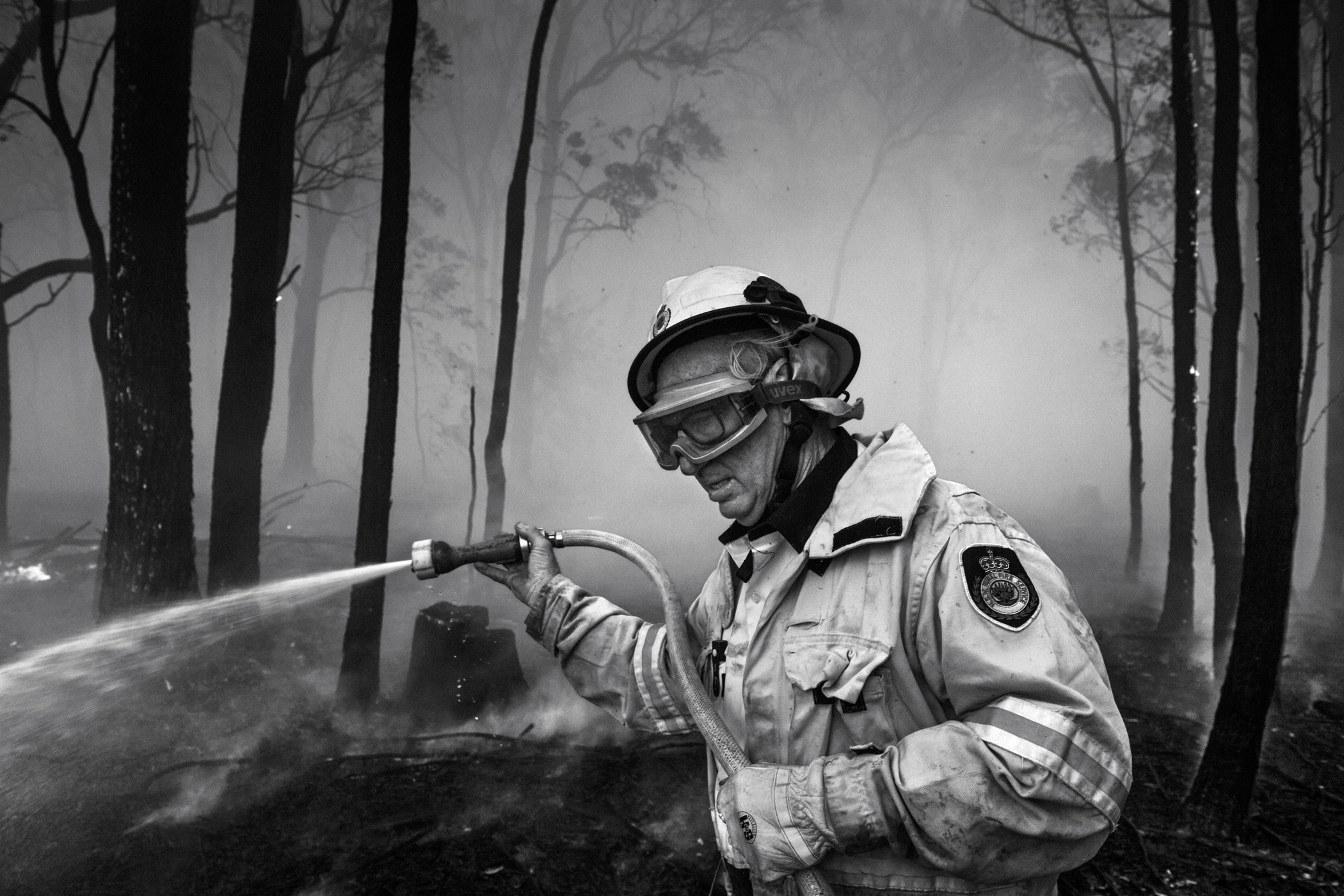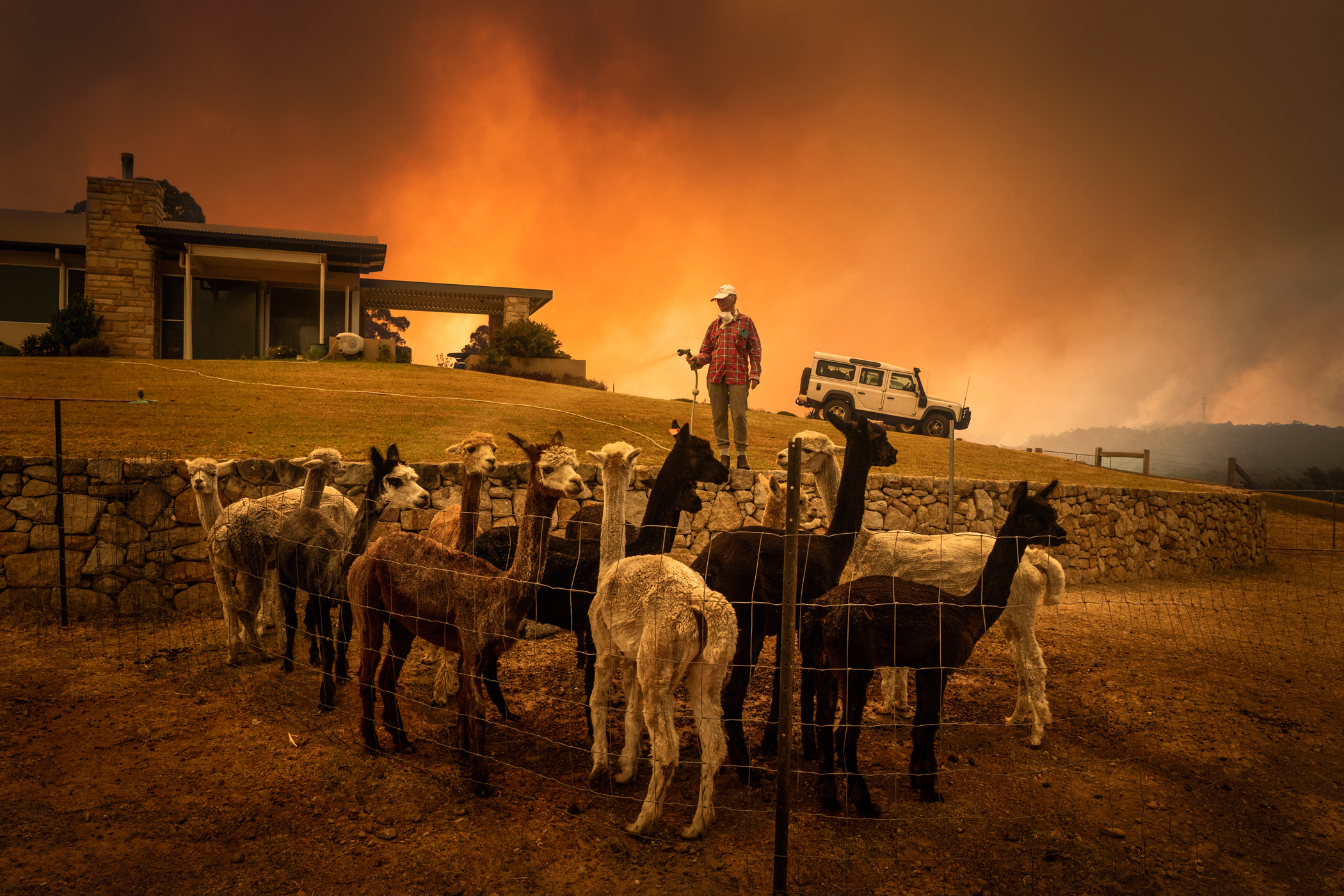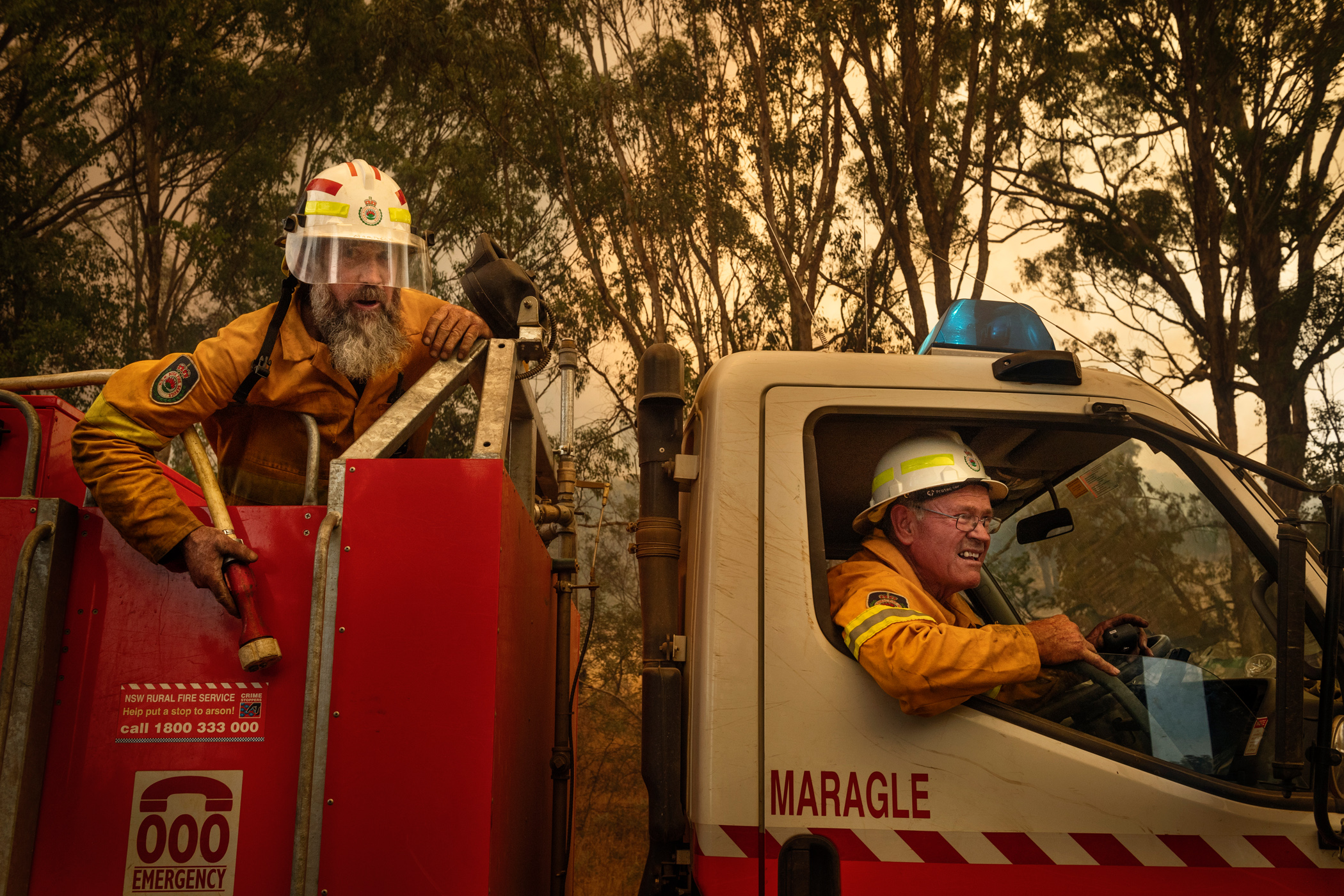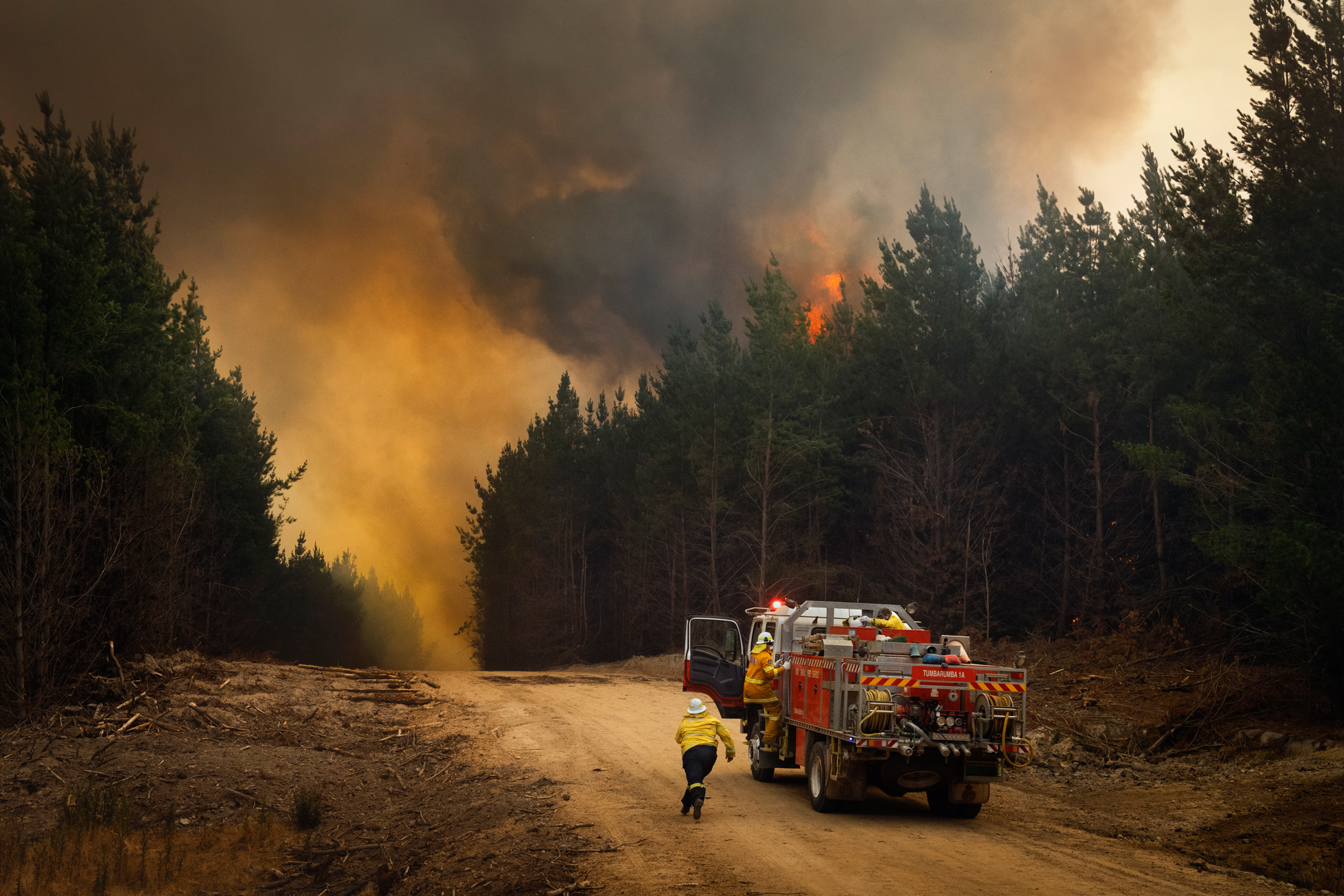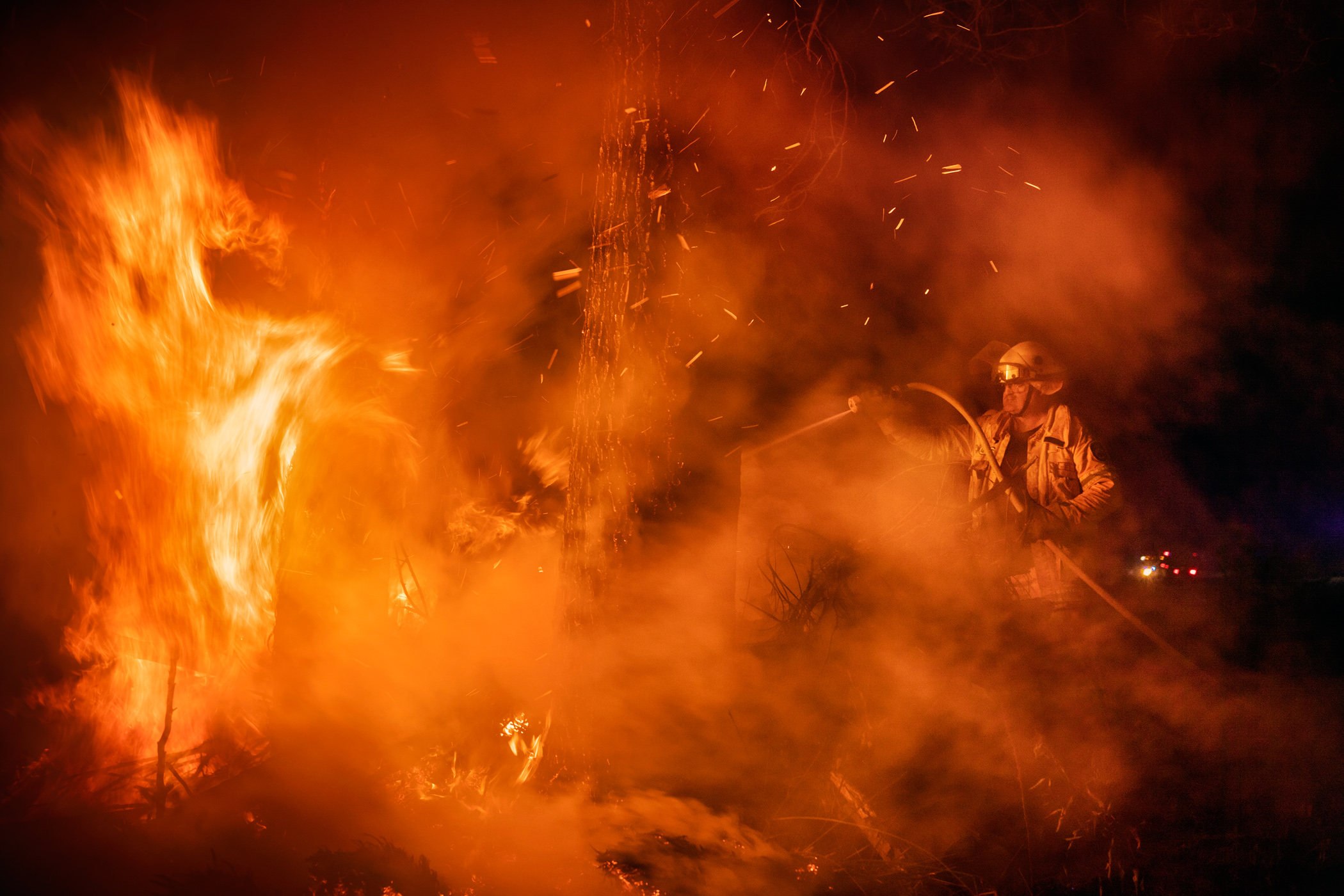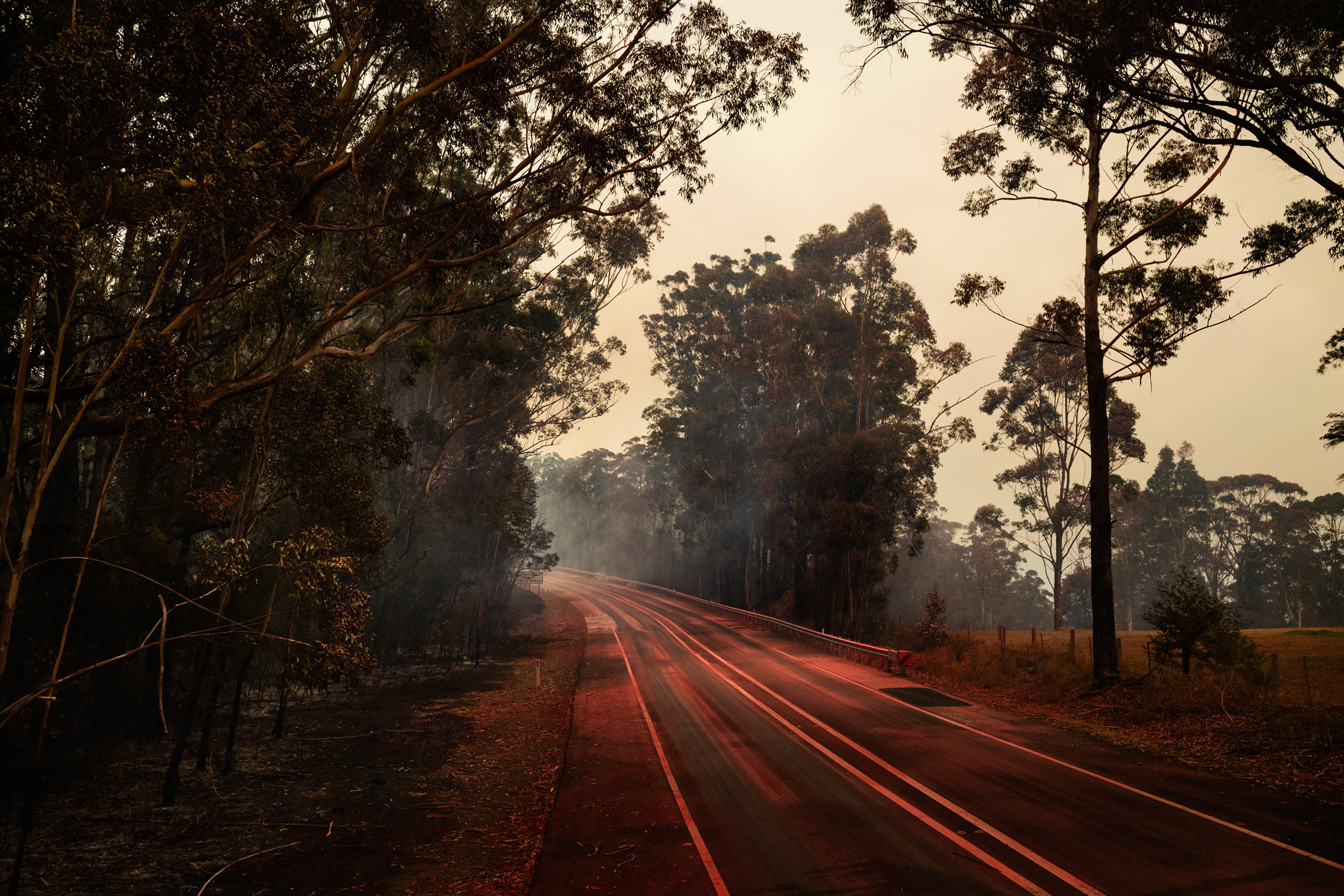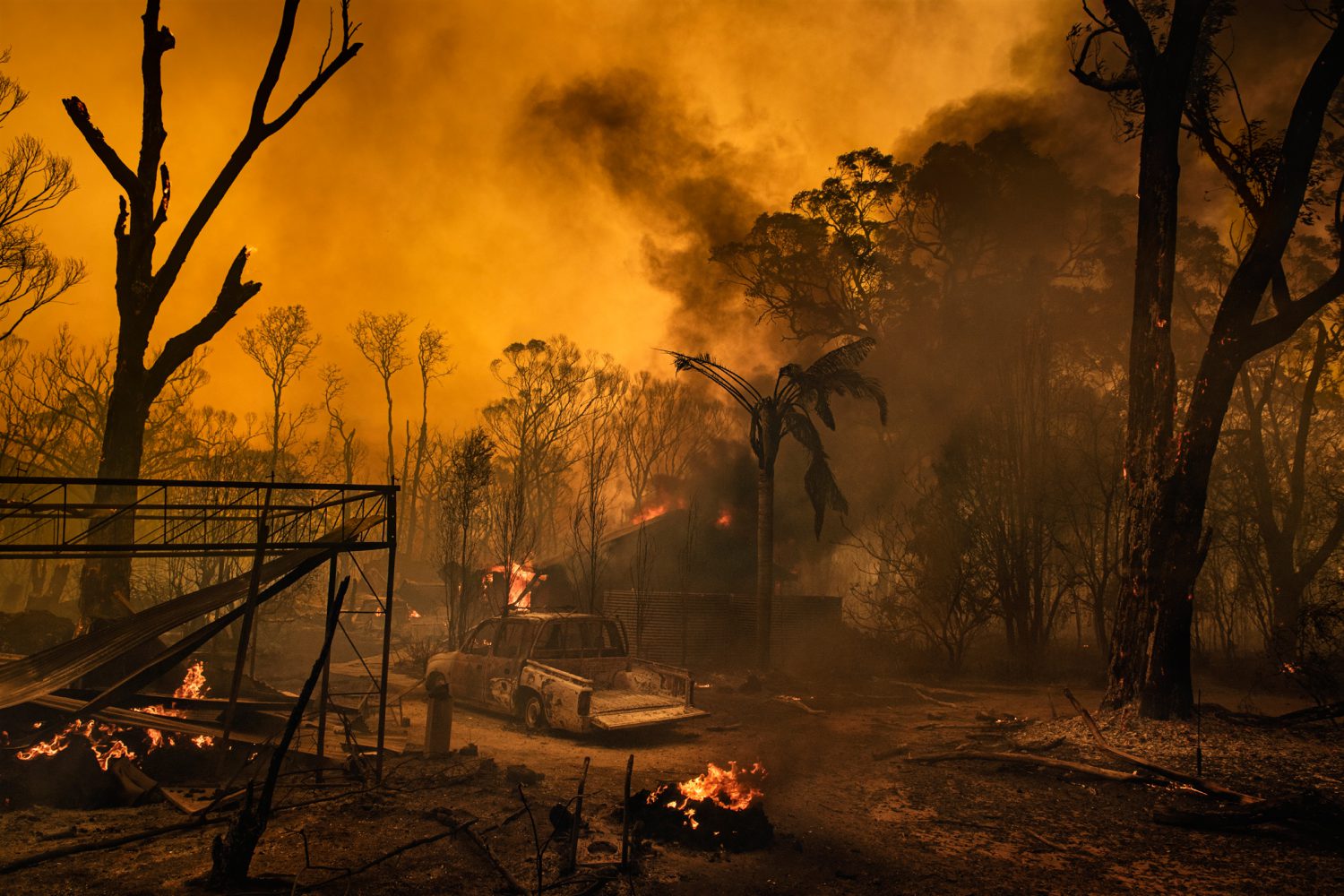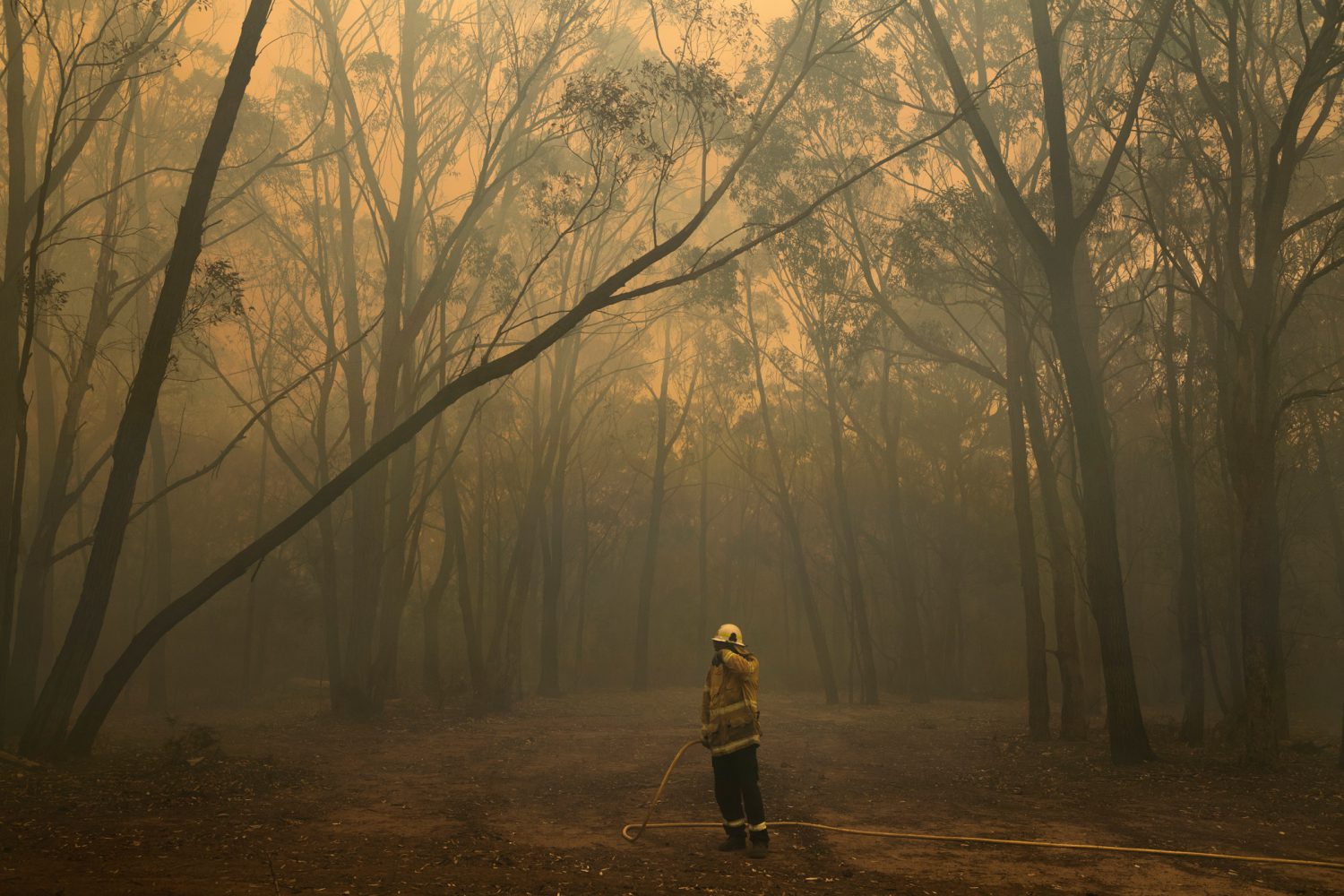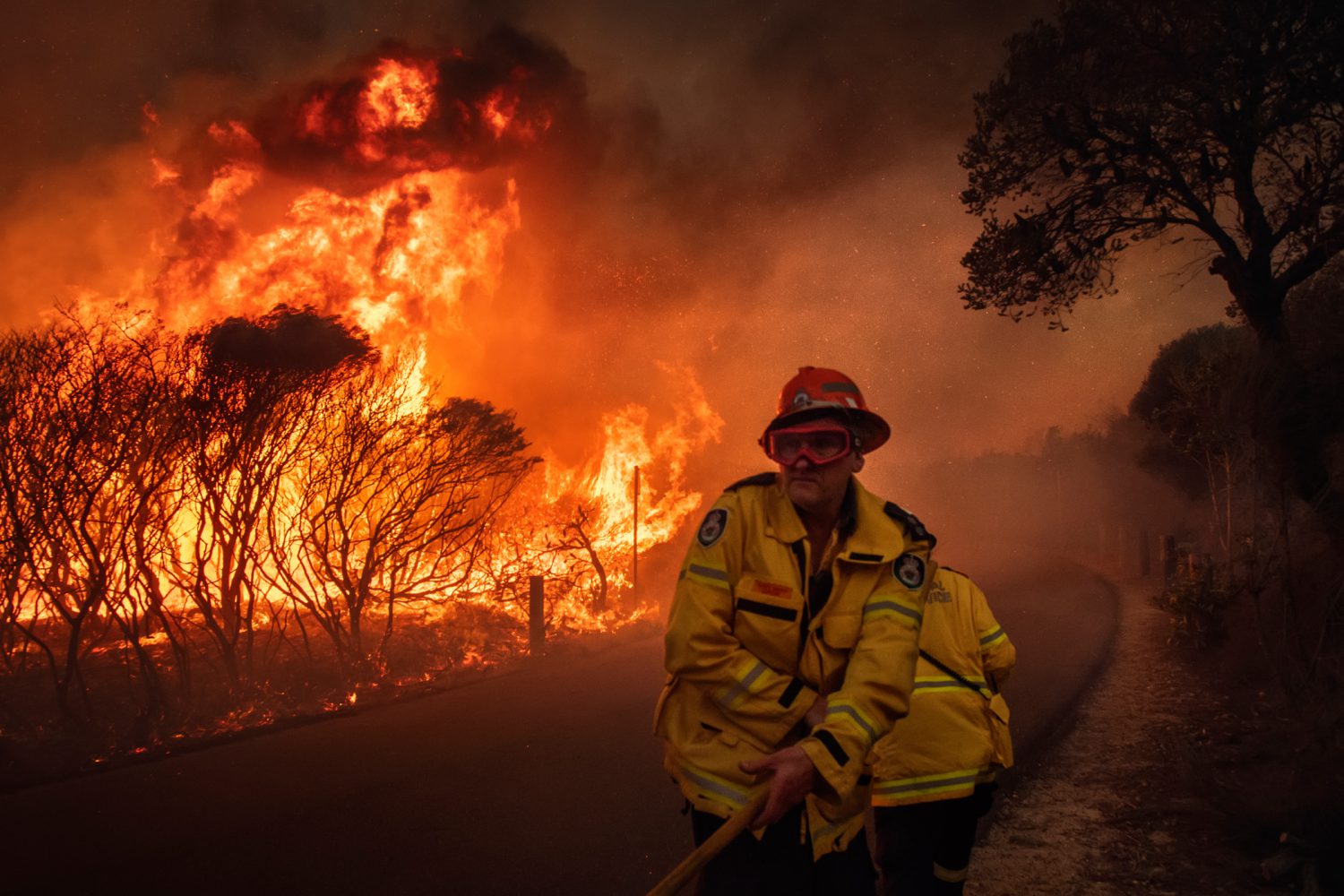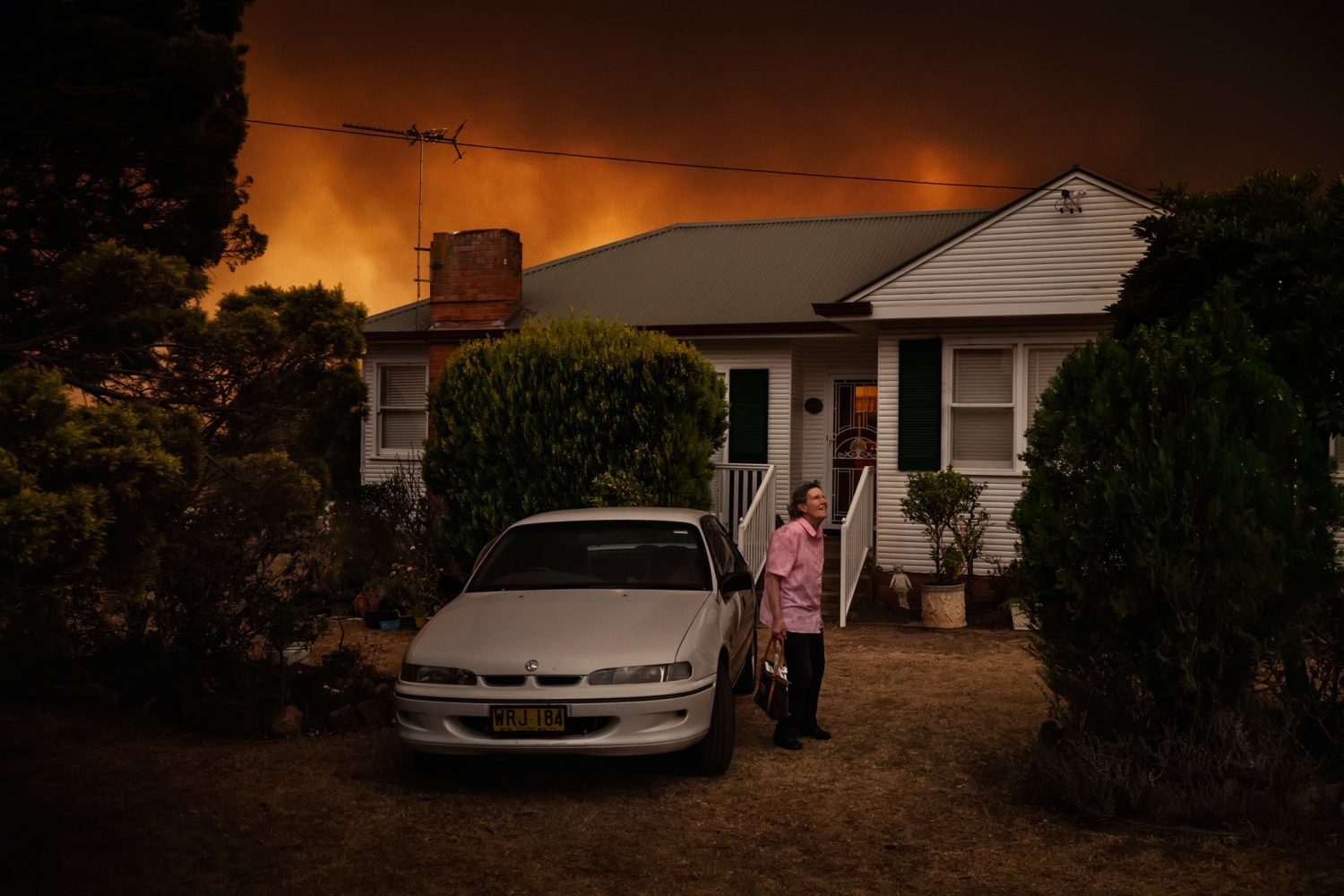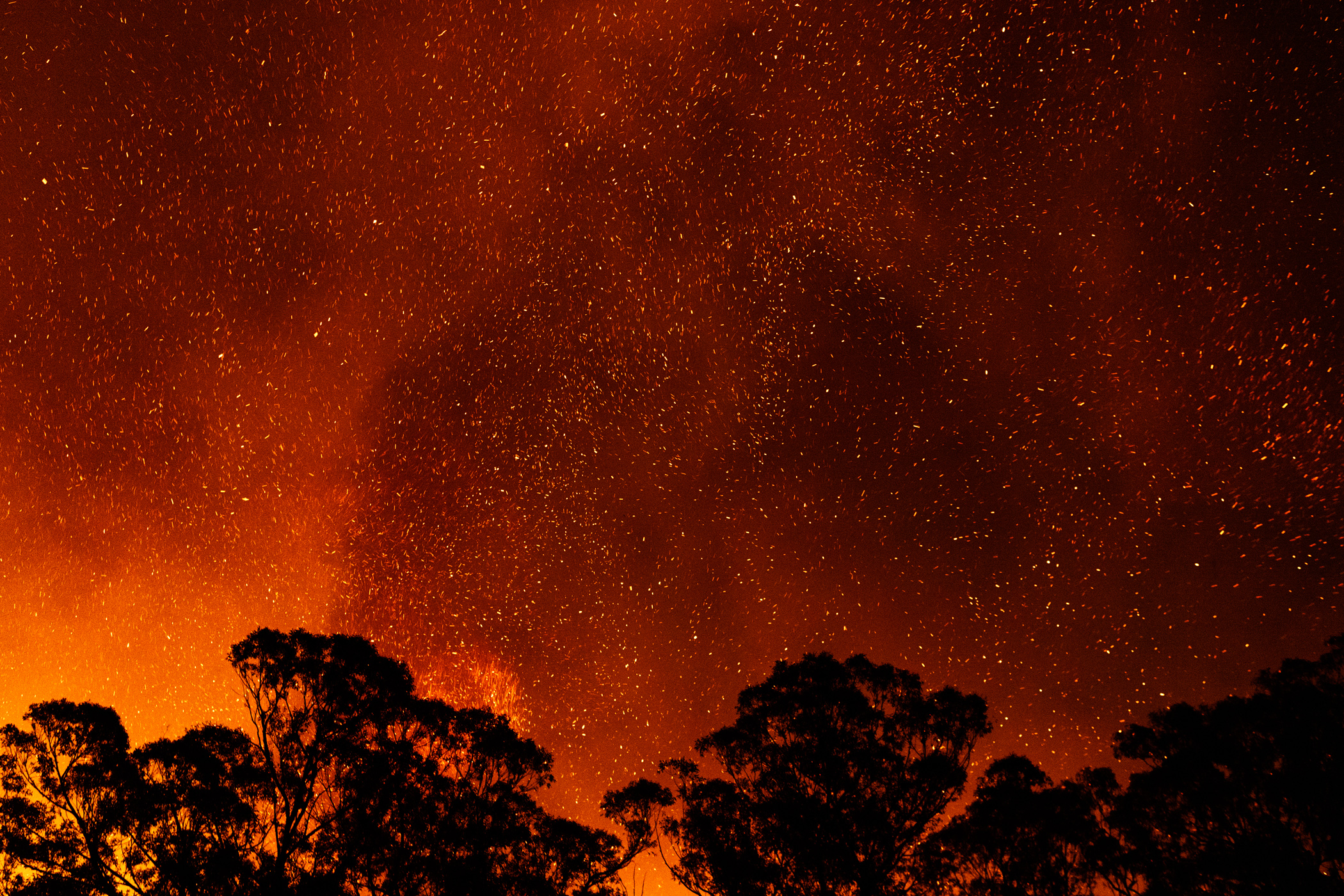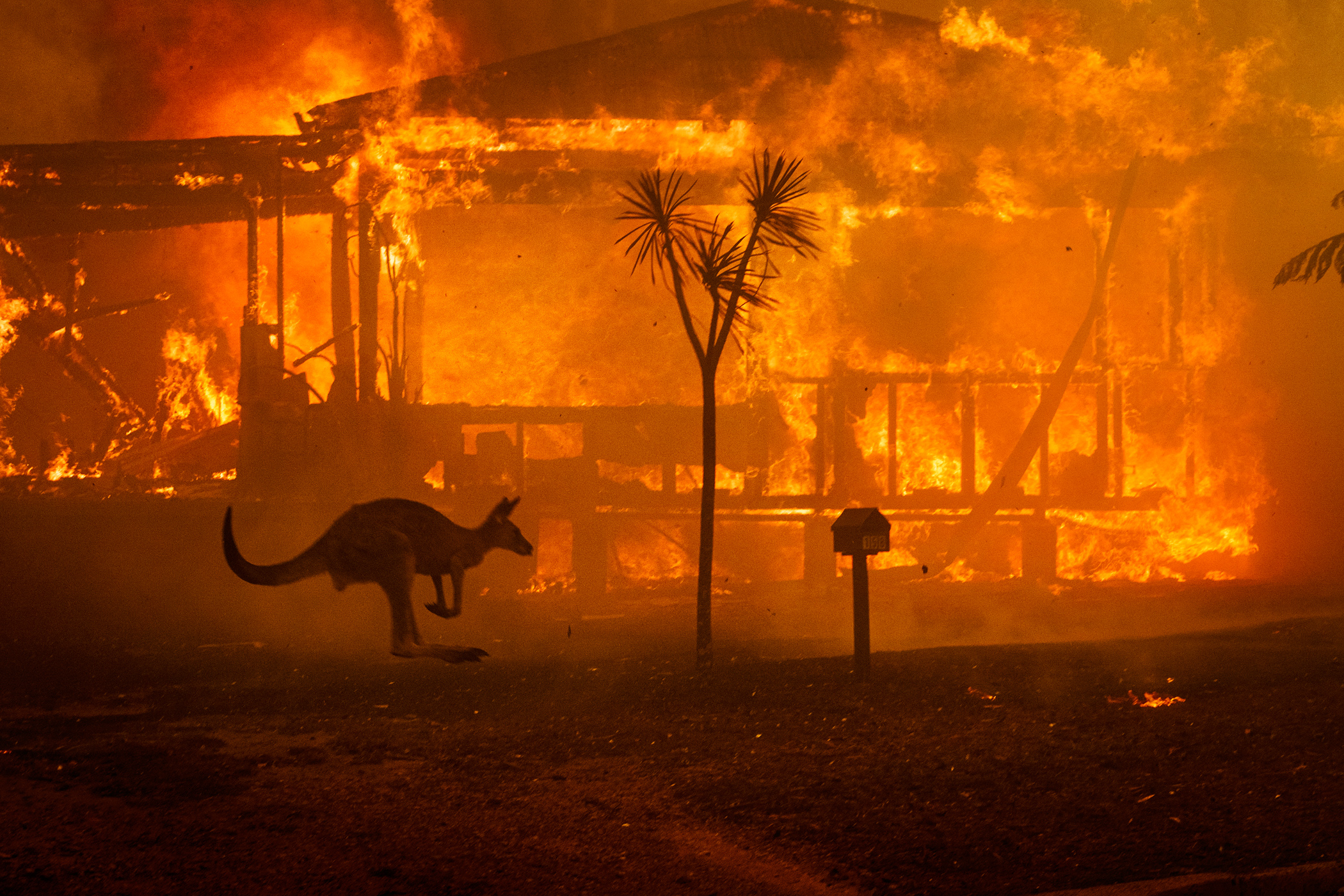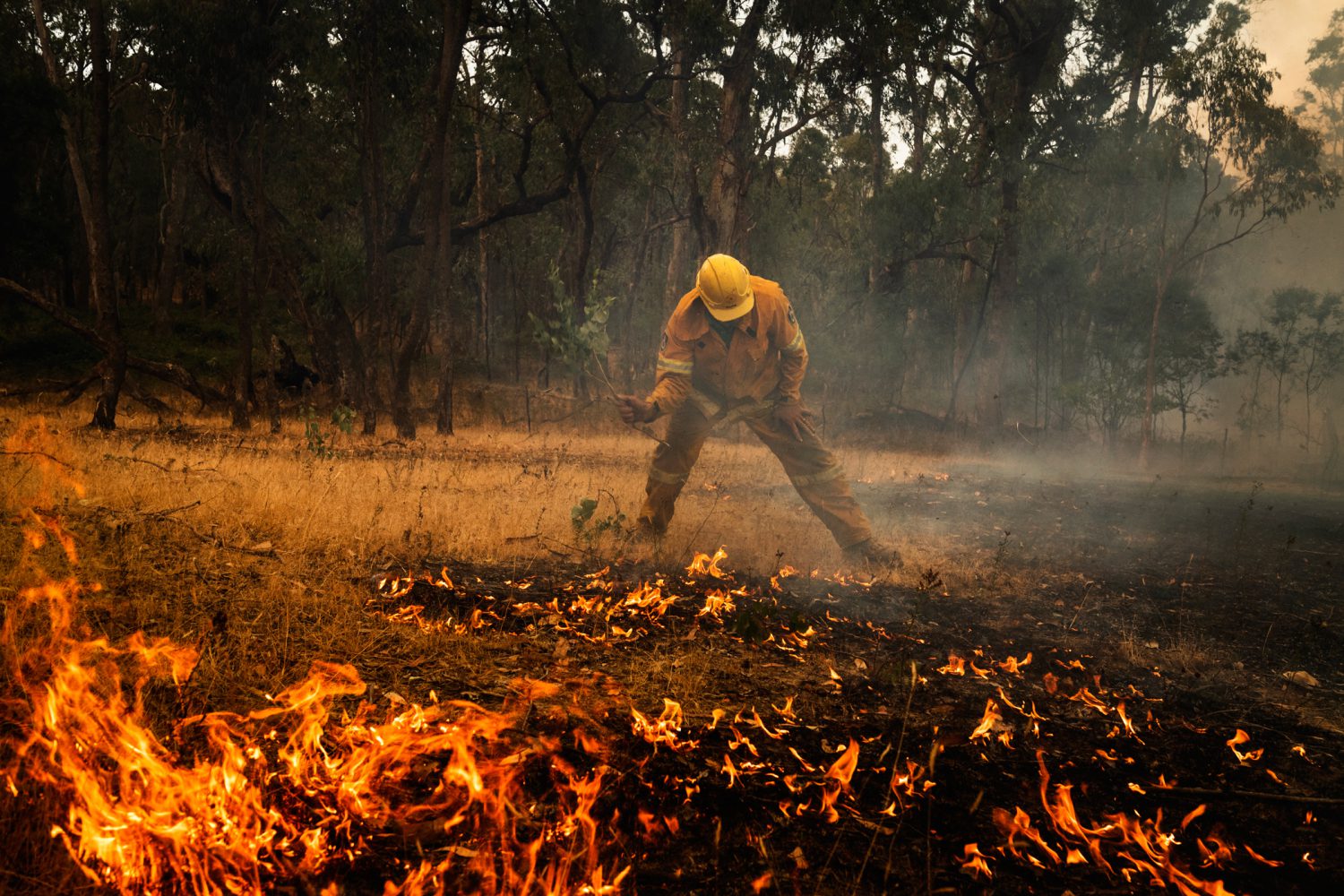
Hardwired to help
Australia has the largest unpaid fire service in the world. Why the 150,000 volunteer firefighters across the country risk so much for so little in return is hard to explain. But we will attempt to, nonetheless.
Humans are hardwired to help. It’s in our blood, and, whether we like it or not, roughly one-third of us are born Warriors. If there is a threat, our instinct is fight, not flight. We literally can’t help being the first to help. It’s a reflex. We all know people like this; indeed, you may be one yourself. You may remember them from the schoolyard or the pub. They are the ones who are first to put themselves in the way of danger to protect others. They simply can’t and won’t stand back and see their communities go unprotected.
In Richard Dawkins’ book, The Selfish Gene, he argues that we are all programmed to help others because it contributes to the survival of our genes. In biological terms, this is true: the firefighter who faces danger to protect others in their group may do so without thinking, but they are also displaying a trait which is proven to increase the chance of reproduction. Helping people releases oxytocin, too, the chemical in our brains that makes us feel good and makes us more likely to want to do something again. The same chemical is released when we have sex or eat food – both biological necessities for the survival of our species.
Sociologist and social futurist Ebony Gaylor explains in this chapter why Warriors do what they do, and what they get in return. The rewards may not come in dollars and cents, but rather in a sense of purpose, camaraderie and the chemical explosions that go on in their heads – the adrenaline that pushes them on, the oxytocin and dopamine that keeps them going back for more – and why evolution and genetics are partly responsible for the way they behave.
Simply put, fireys do what they do because it is in their DNA. They are hardwired to run towards danger, and they were born that way.
Hearing their stories causes us to pause and ask, ‘Why on earth would someone do that?’ Or, if ever faced with a similar situation, ‘Would we be willing to help in the same way?
Ebony Gaylor, Sociologist and social futurist
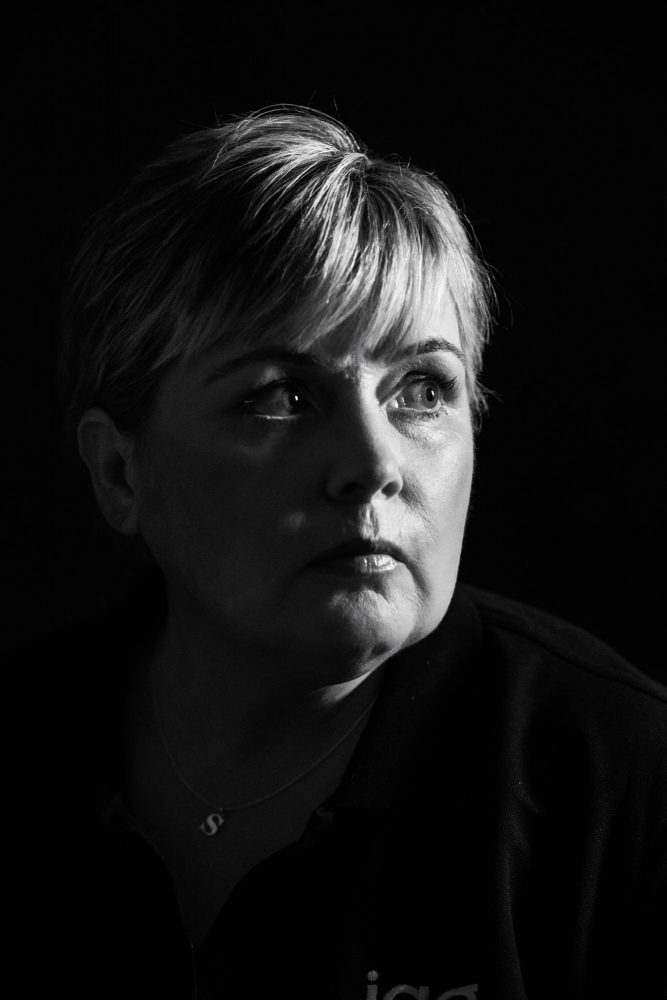
Judi Hindson
Property and Claims Assessor, NRMA Insurance
“I’ve been in this industry for thirty-one years and on the ground as a property claims assessor for thirteen of those. From floods to fires, I’ve pretty much seen it all. That was until the summer of 2019–20. From Buxton to Kangaroo Valley, to Batemans Bay and beyond, the scale of the fires was matched only by the scale of the help people needed.
You’re face to face with a cowboy. A strong man who’s lost everything and yours is the shoulder he’s crying on. You have to be their strength. I think that’s the help reflex in you.”
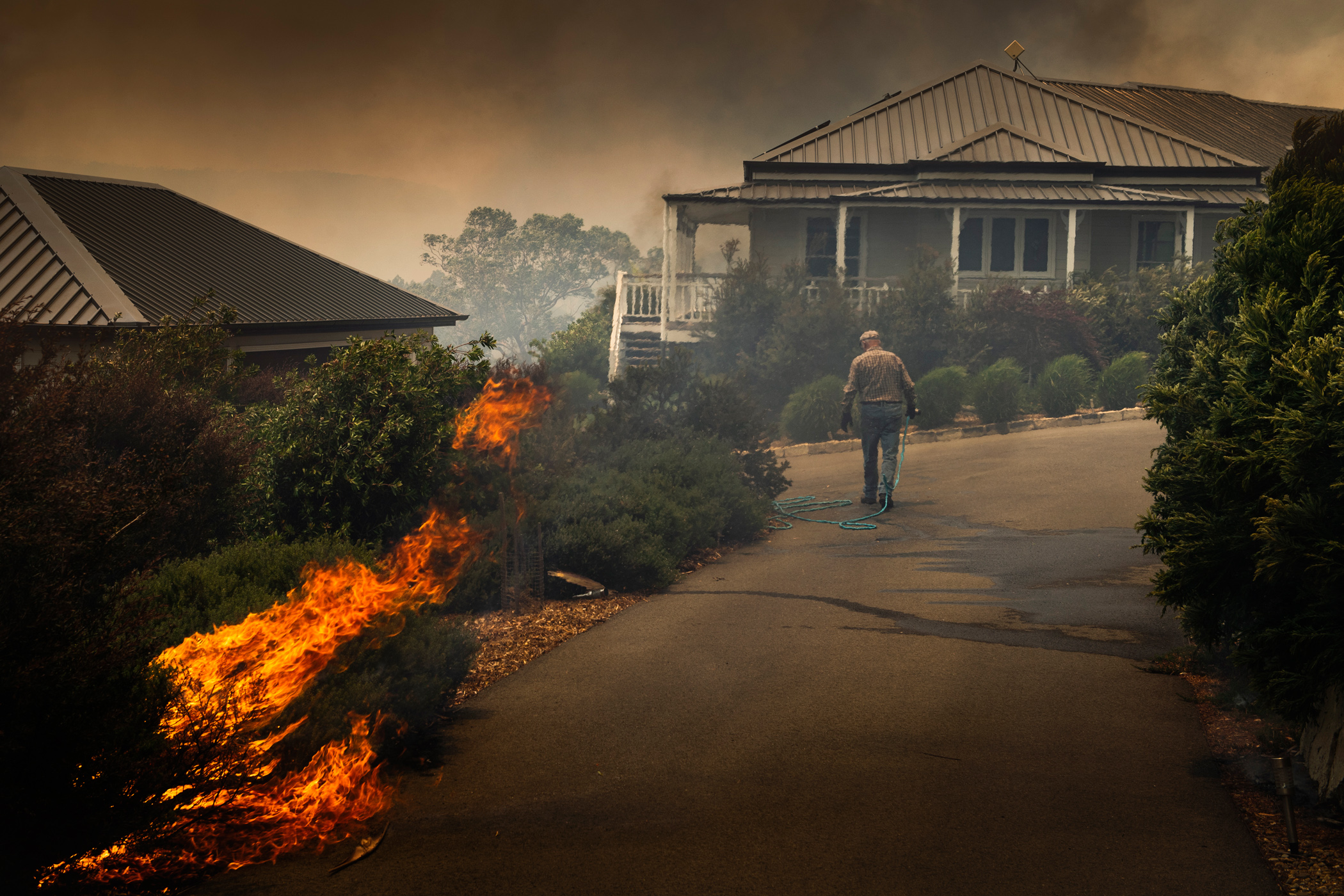
A resident defends his property from the approaching blaze in Conjola, NSW. 31 December 2019.
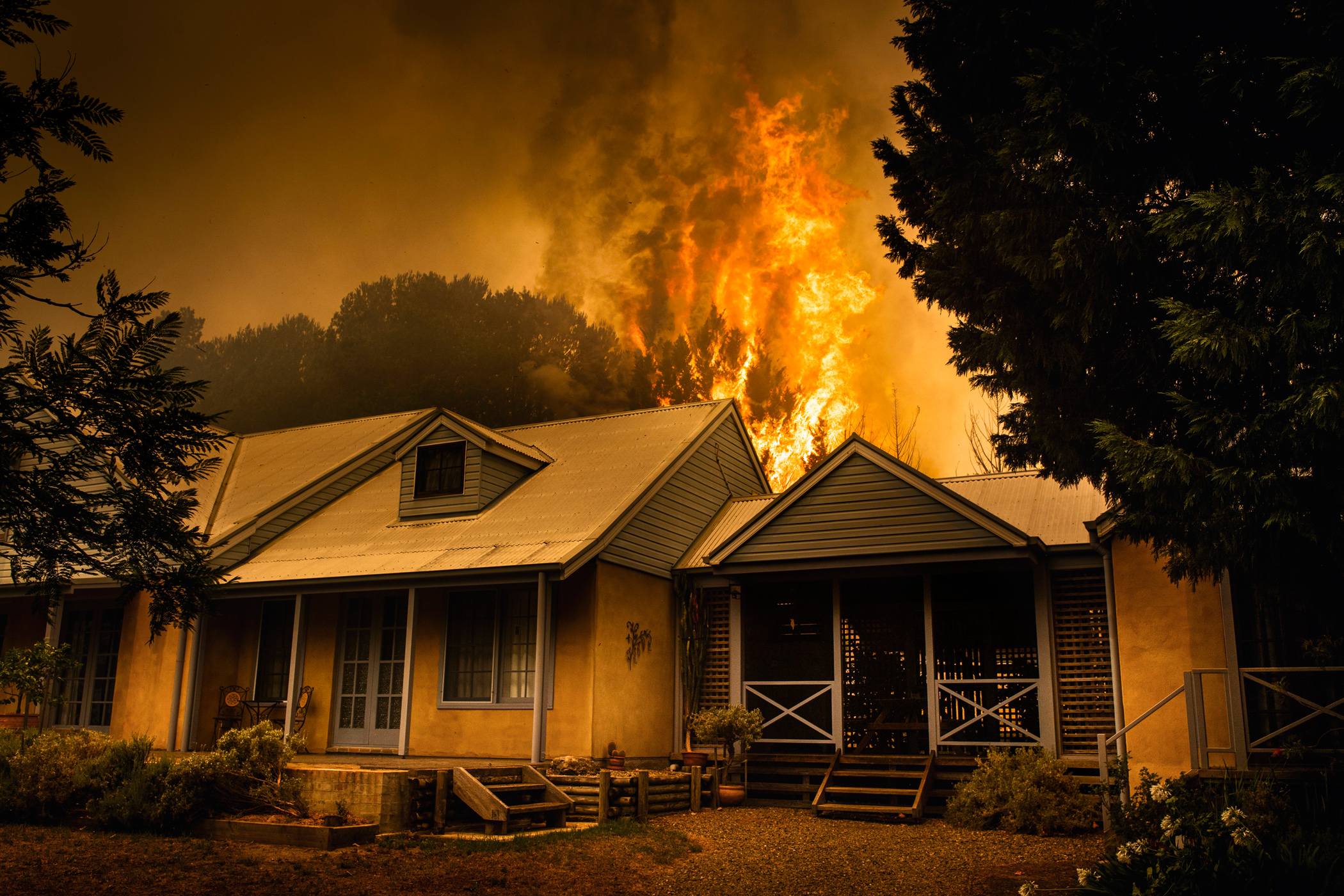
A house under threat of an approaching bush fire in Conjola, NSW. 31 December, 2019.
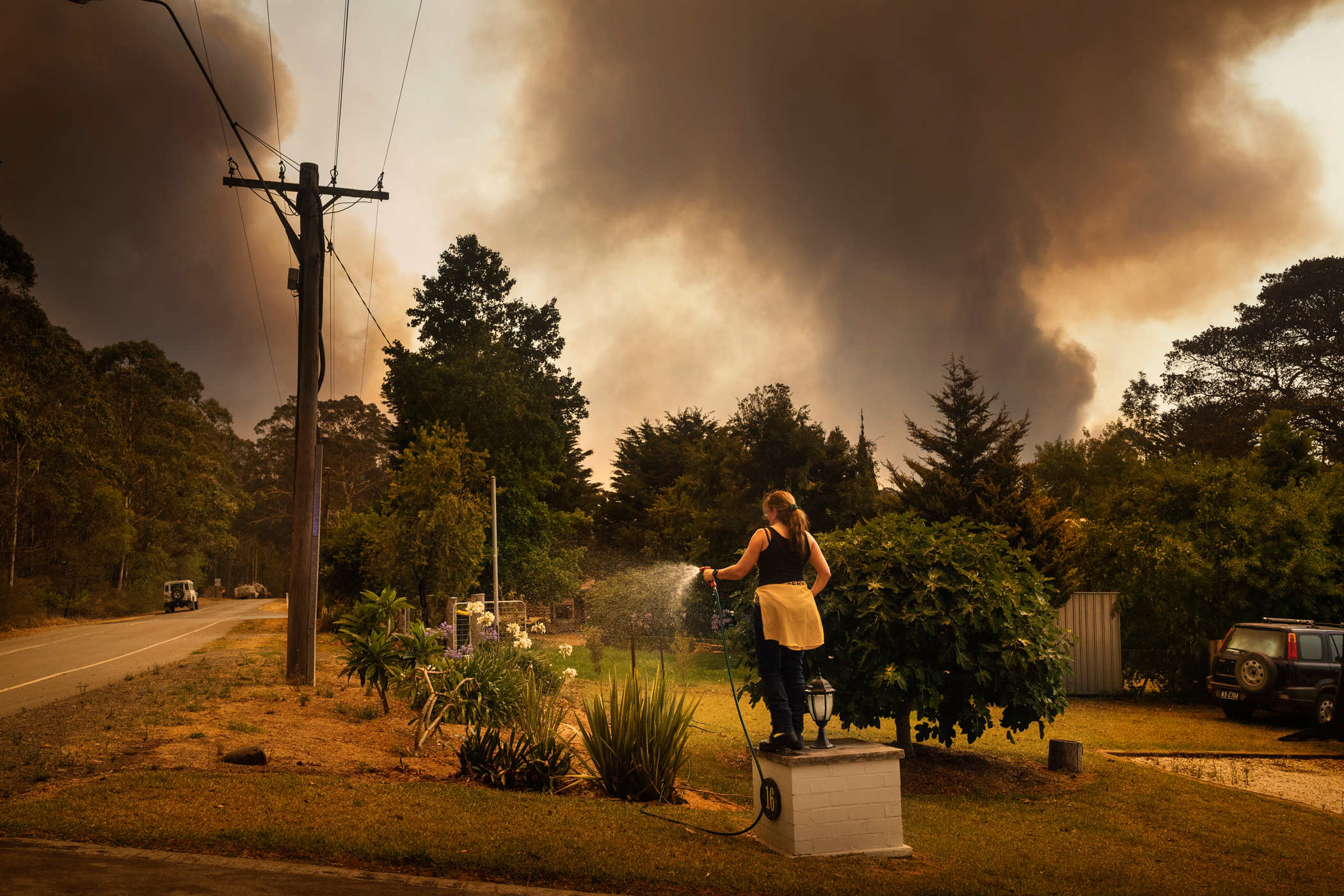
A women defends her home using a hose in Tomerong, NSW. 4 January, 2019.
Jill Rose cools off her alpacas as the fire approaches her home in Tomerong, NSW. 4 January, 2019.
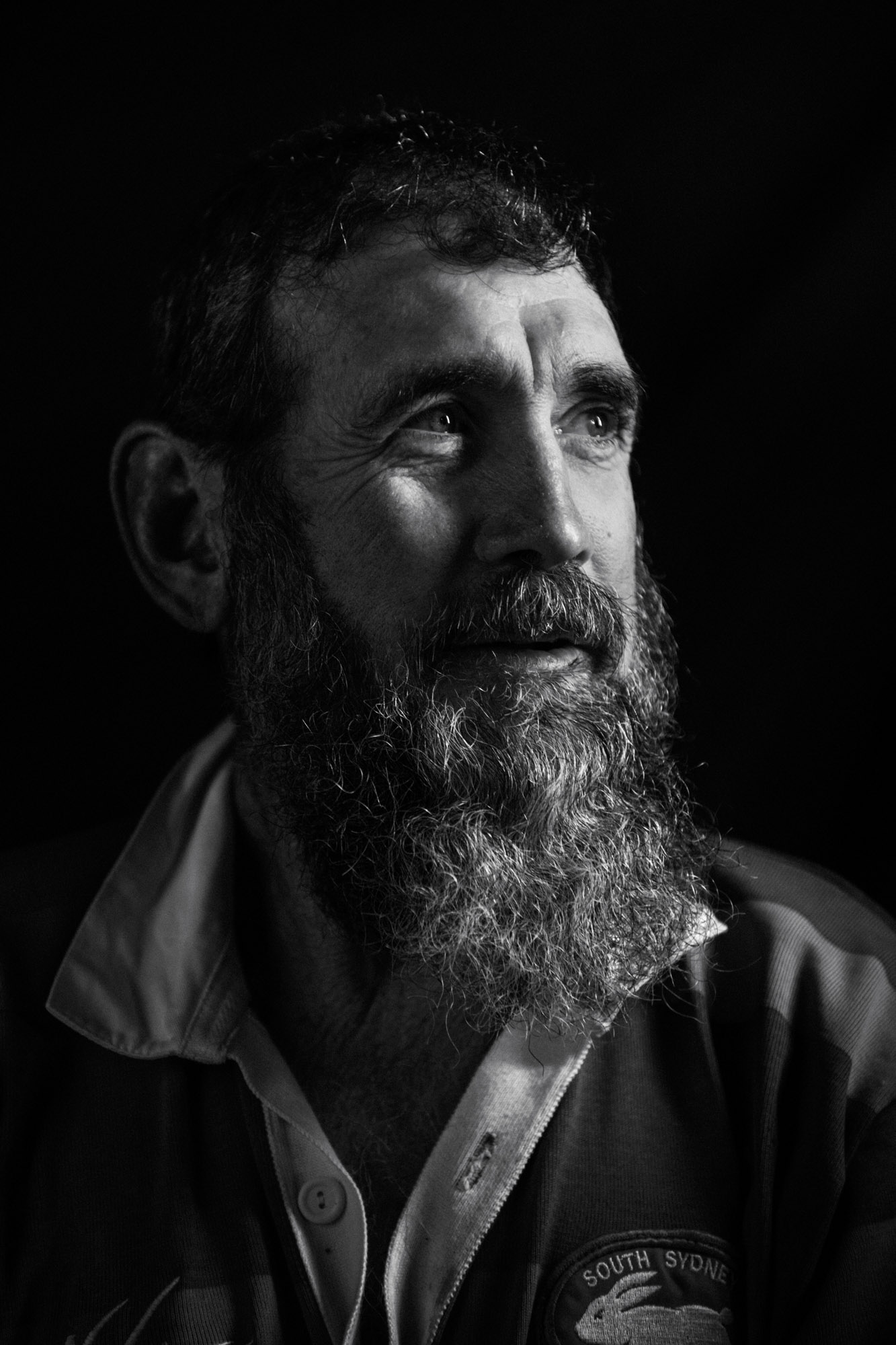
Mark Bourke, Deputy Captain, NSW RFS Maragle Brigade
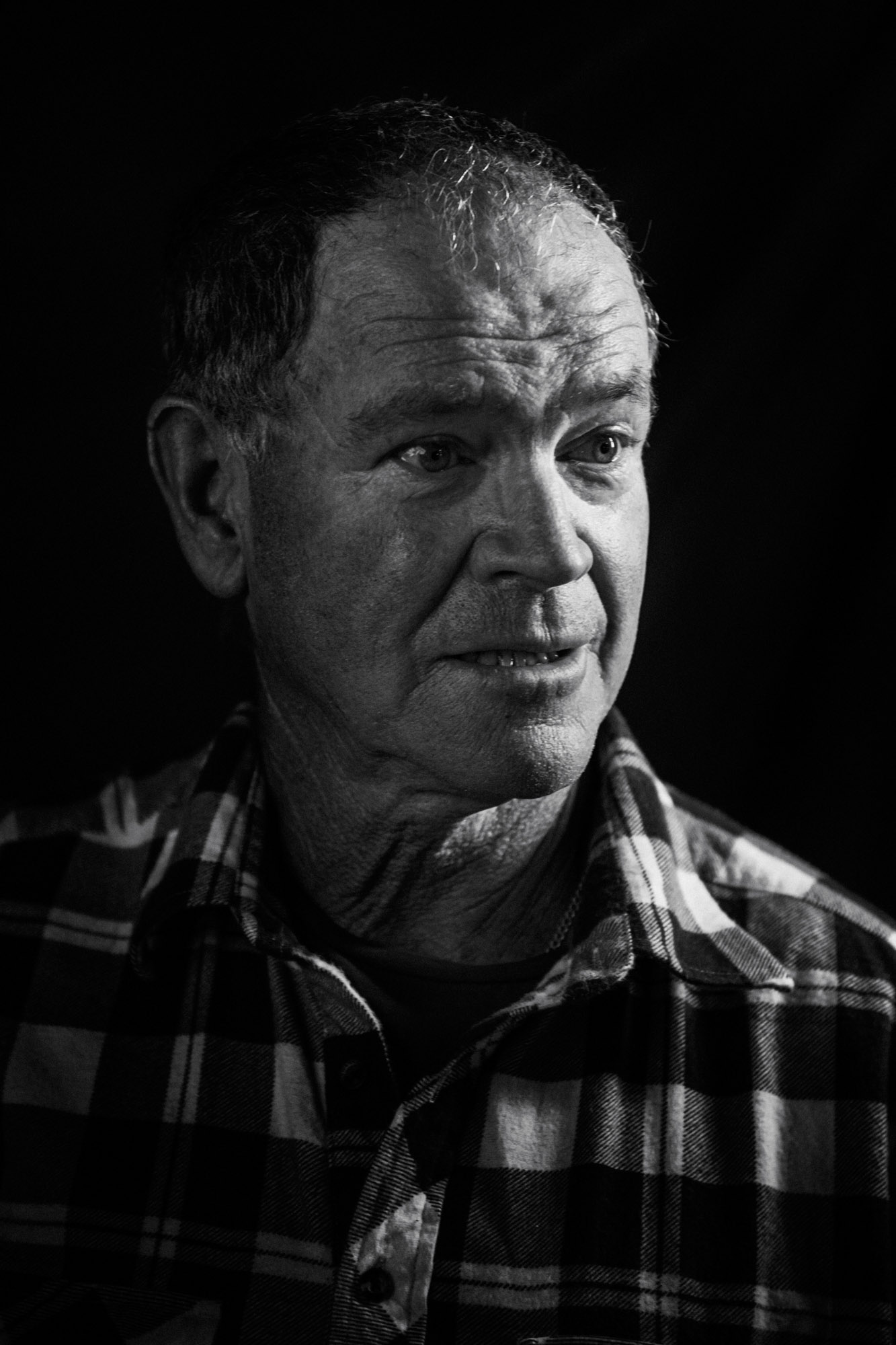
Greg Lyons, Senior Deputy Captain, NSW RFS Maragle Brigade
Like so many small Australian communities, the rural locality of Maragle, NSW, was hit hard during the Black Summer. And just as those other communities did, the residents of Maragle rallied and the local volunteer firefighters threw on their protective gear and faced the heat, working night and day to protect their homes.
Mark Bourke and Greg Lyons, two of the dedicated volunteers for the Maragle NSW Rural Fire Service (NSW RFS), battled out-of-control fires with their own safety greatly at risk. At one point, the pair found themselves alone, and were nearly overwhelmed by an angry fire in their Cat 7 fire truck in January 2020 with no support and only 1,500 litres of water as ammunition. They used Tooma Road as a fire break while trying to extinguish small spot fires that rapidly leapt across the road again and again. The RFS later sent a strike team with several larger fire trucks.
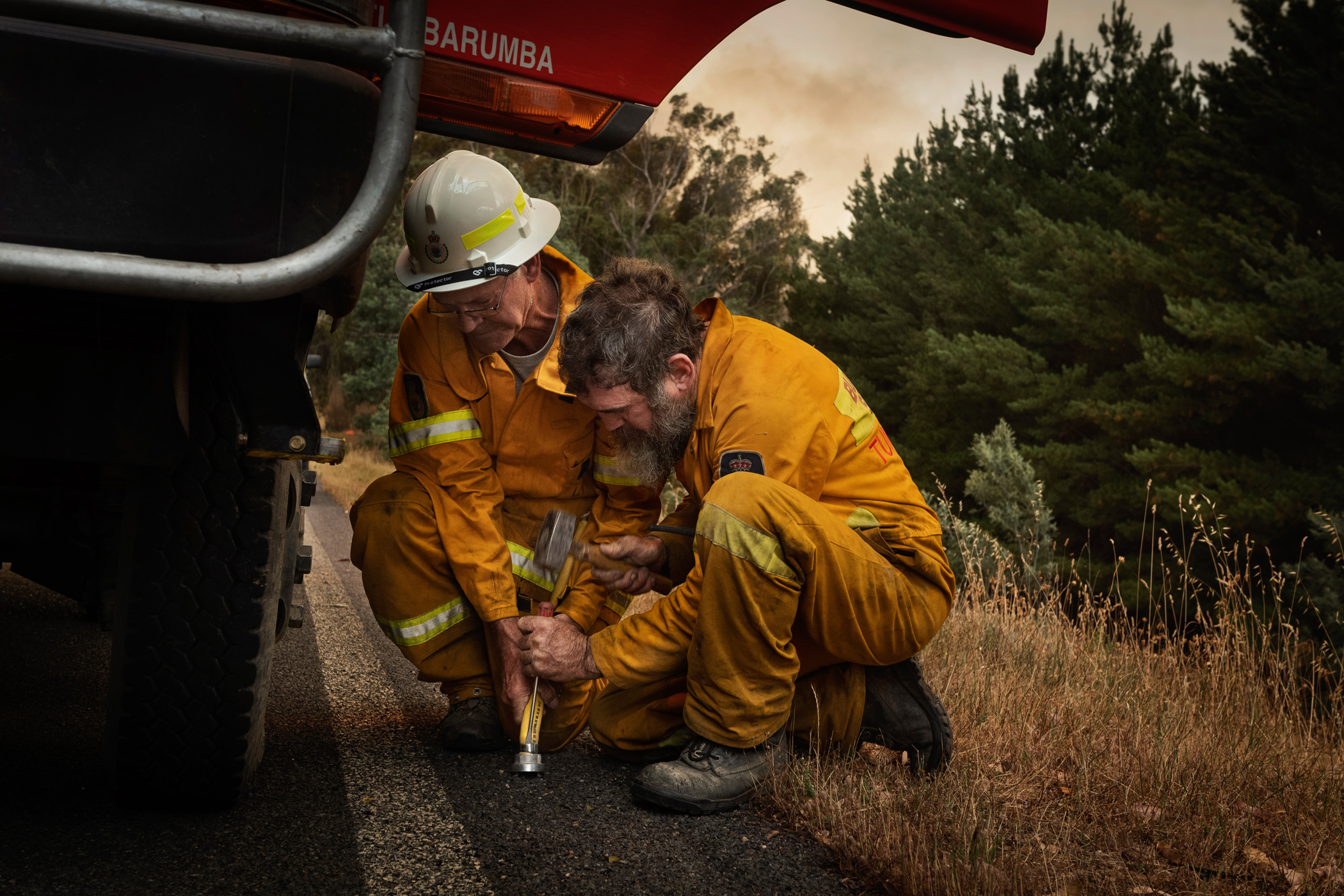
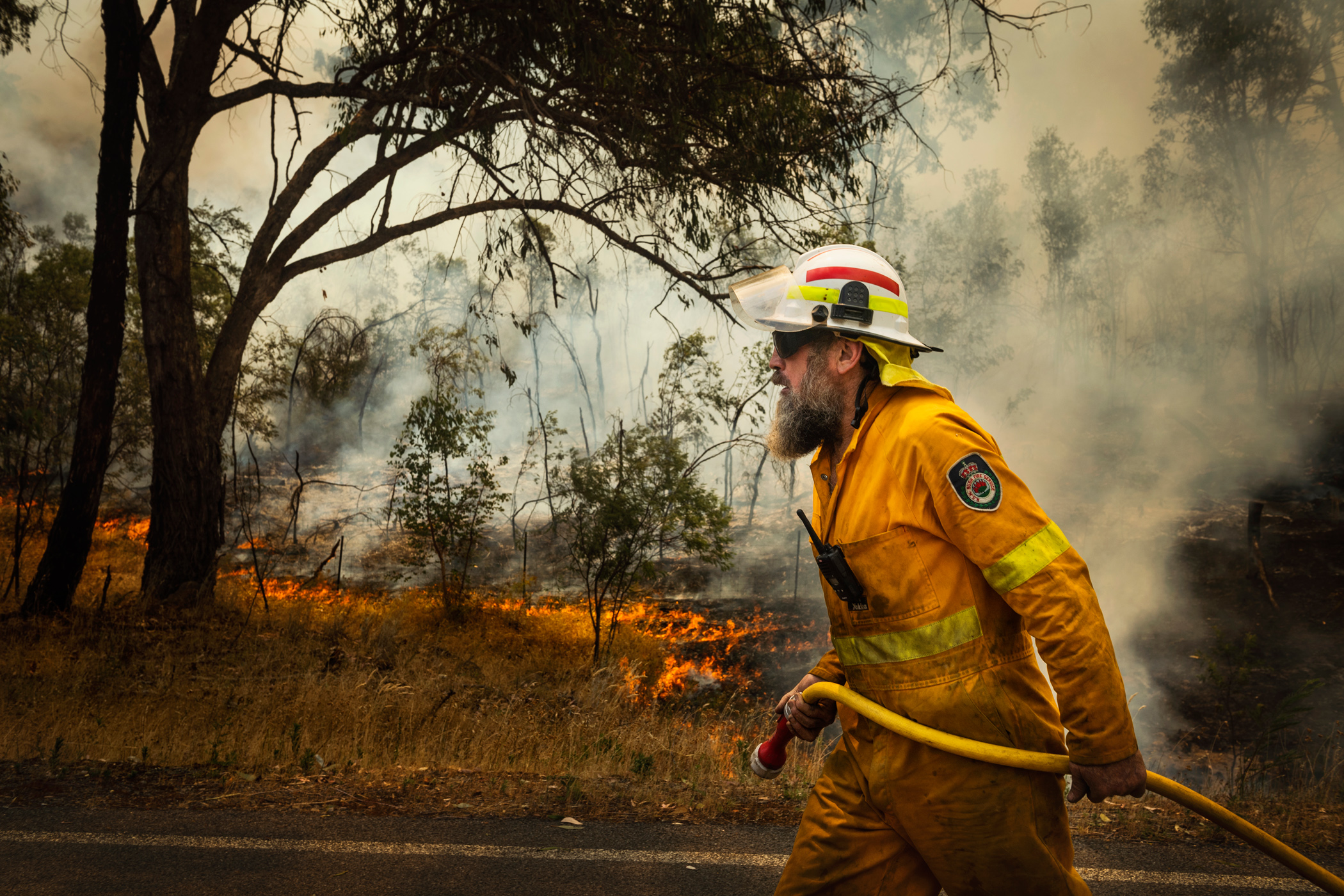
Mark Bourke and Greg Lyons, firefighters with the NSW RFS Maragle Brigade, on their Cat 7 RFS truck with a 1,500 litre water tank, working to contain a local fire, Maragle, NSW. 10 January 2020.
The feeling while the fire was happening, it was just astonishment at the crazy things that were happening. Hundred-kilometre-an-hour winds, and the fire was still making headway and burning against them. The first inkling of the fire, we didn’t see it from a distance or from anywhere, we just heard it. We heard the roaring.
Helena Kam, resident, Balmoral, NSW
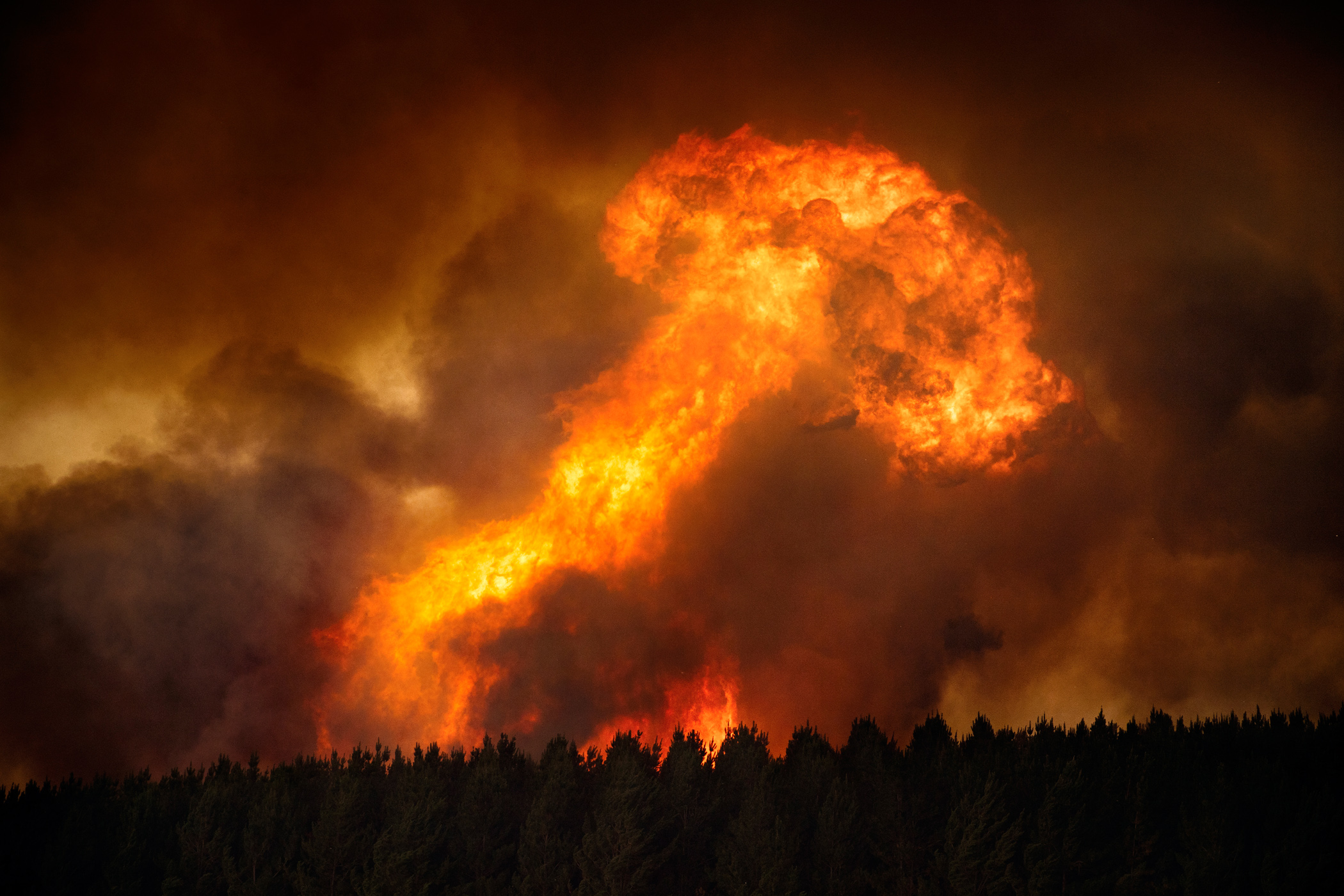
A fire ball rises above a pine forest plantation near Maragle, NSW. 10 January 2020
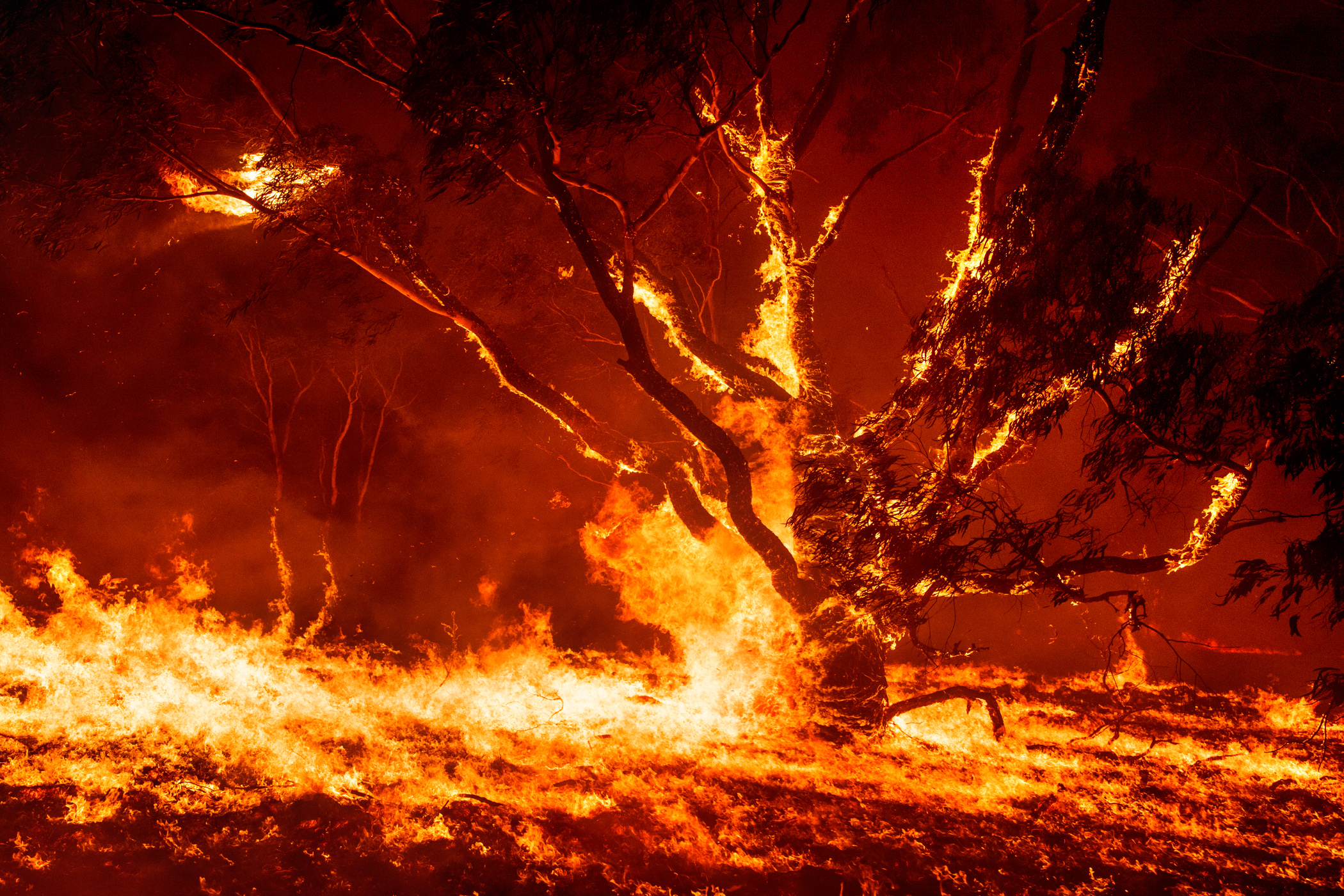
A fire rages on the outskirts of Bredbo, NSW. 1 February, 2020.
It was like someone tipped over three volcanoes at all different angles.
Clem Barnden, Captain, NSW RFS Jellat Brigade
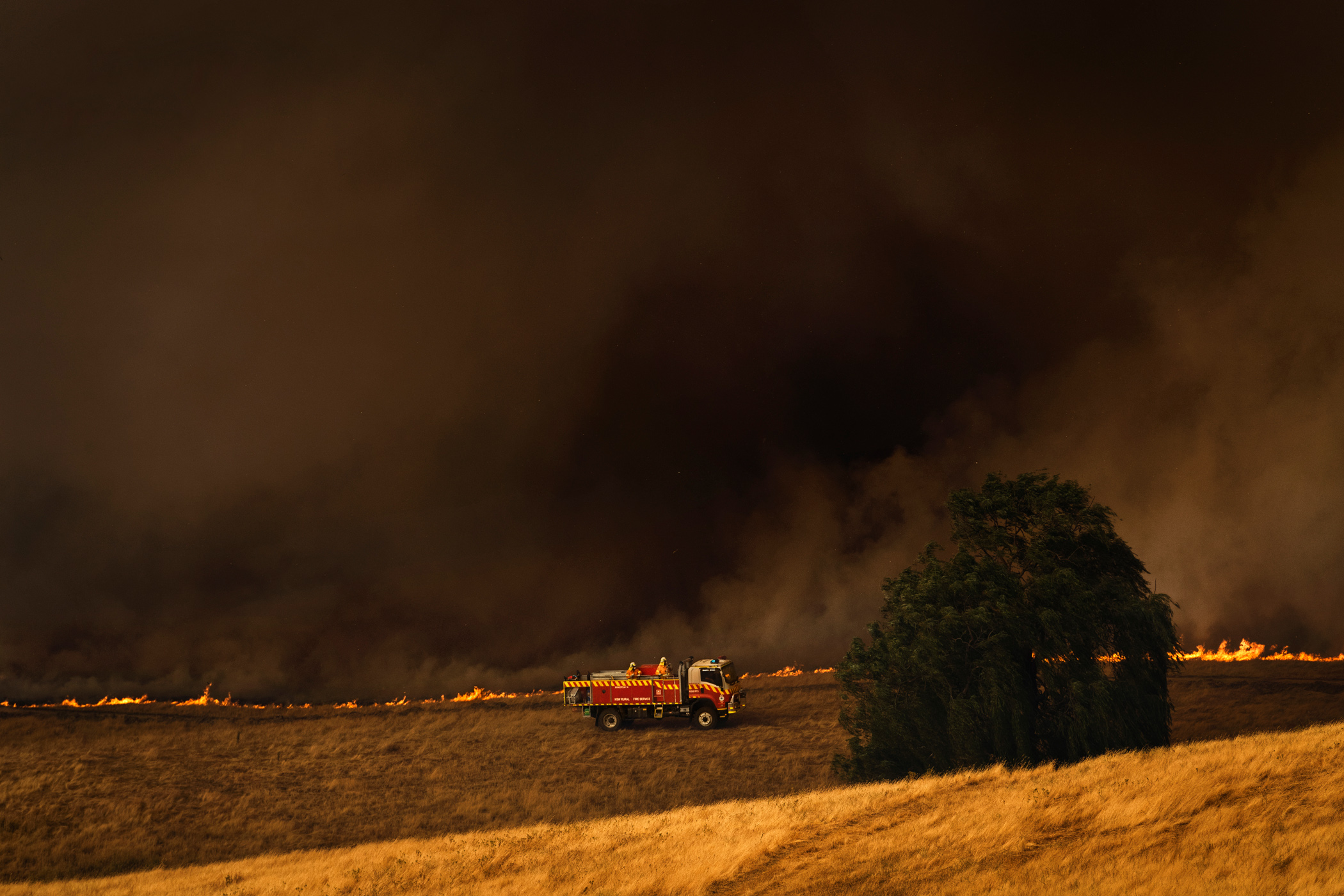
A lone Rural Fire Service truck stands next to a wall of smoke from the massive Dunns Road Fire near Maragle, NSW. 10 January 2020
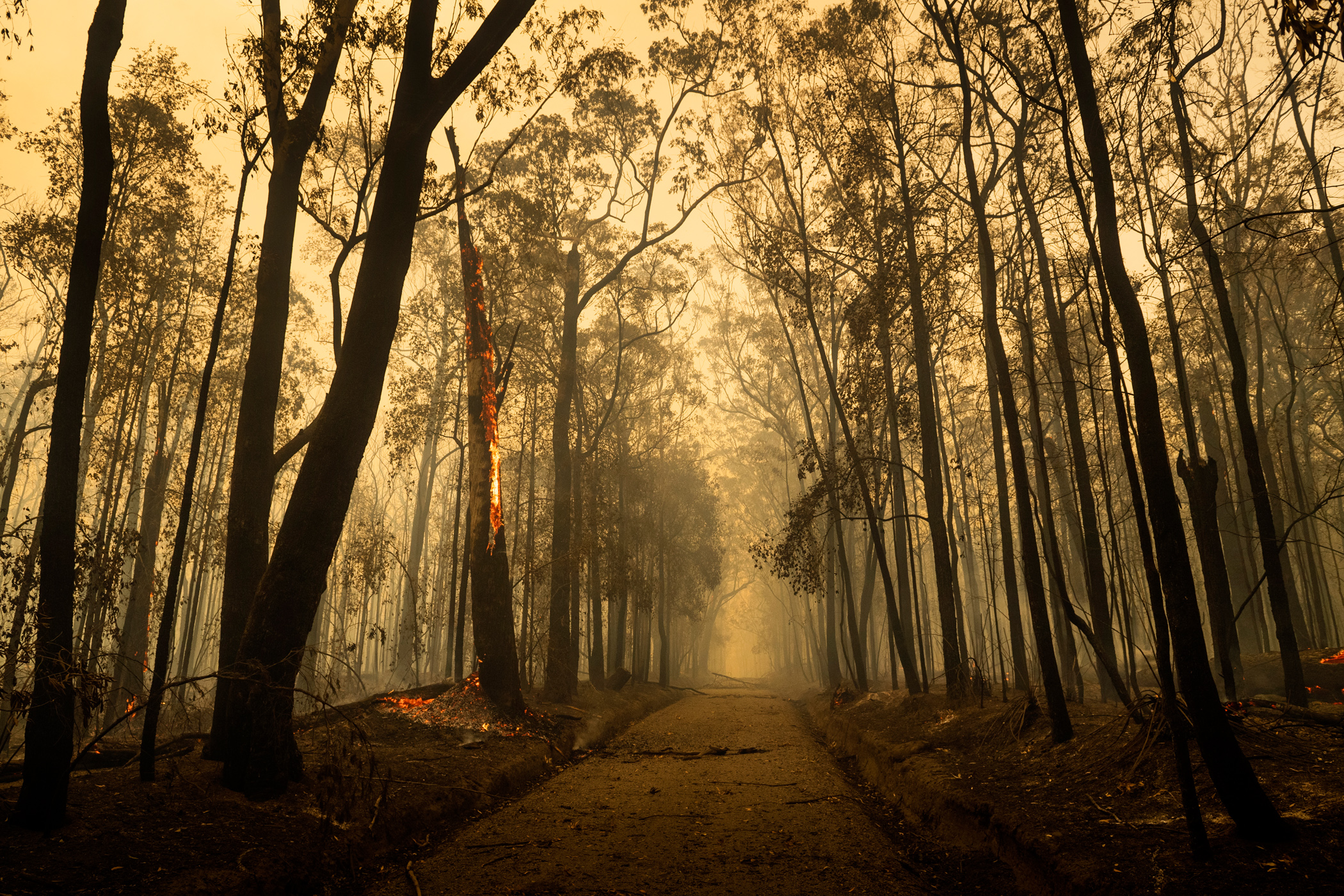
A road cut off by fire near Cambewarra, North of Nowra, NSW. 4 January 2019
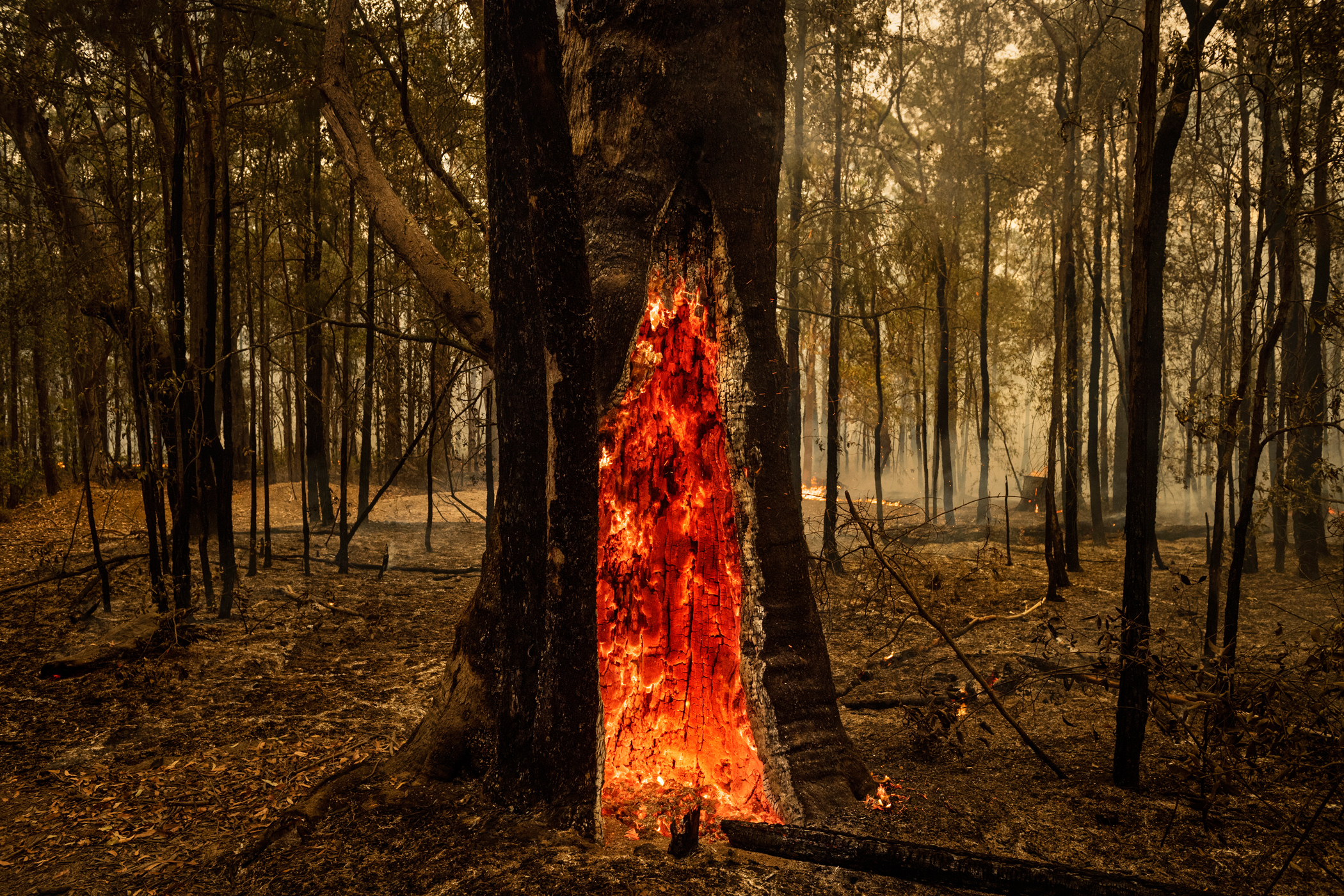
A burning tree close to a road cut off and destroyed by fire near Cambewarra, North of Nowra. Saturday the 4th January, 2019. Matthew Abbott For The New York Times.
I stood beside a tree that was burning for twenty-four bloody hours and believe it or not that tree is still standing even after the big fire.
Barbara Stewart, resident, Nerrigundah, NSW
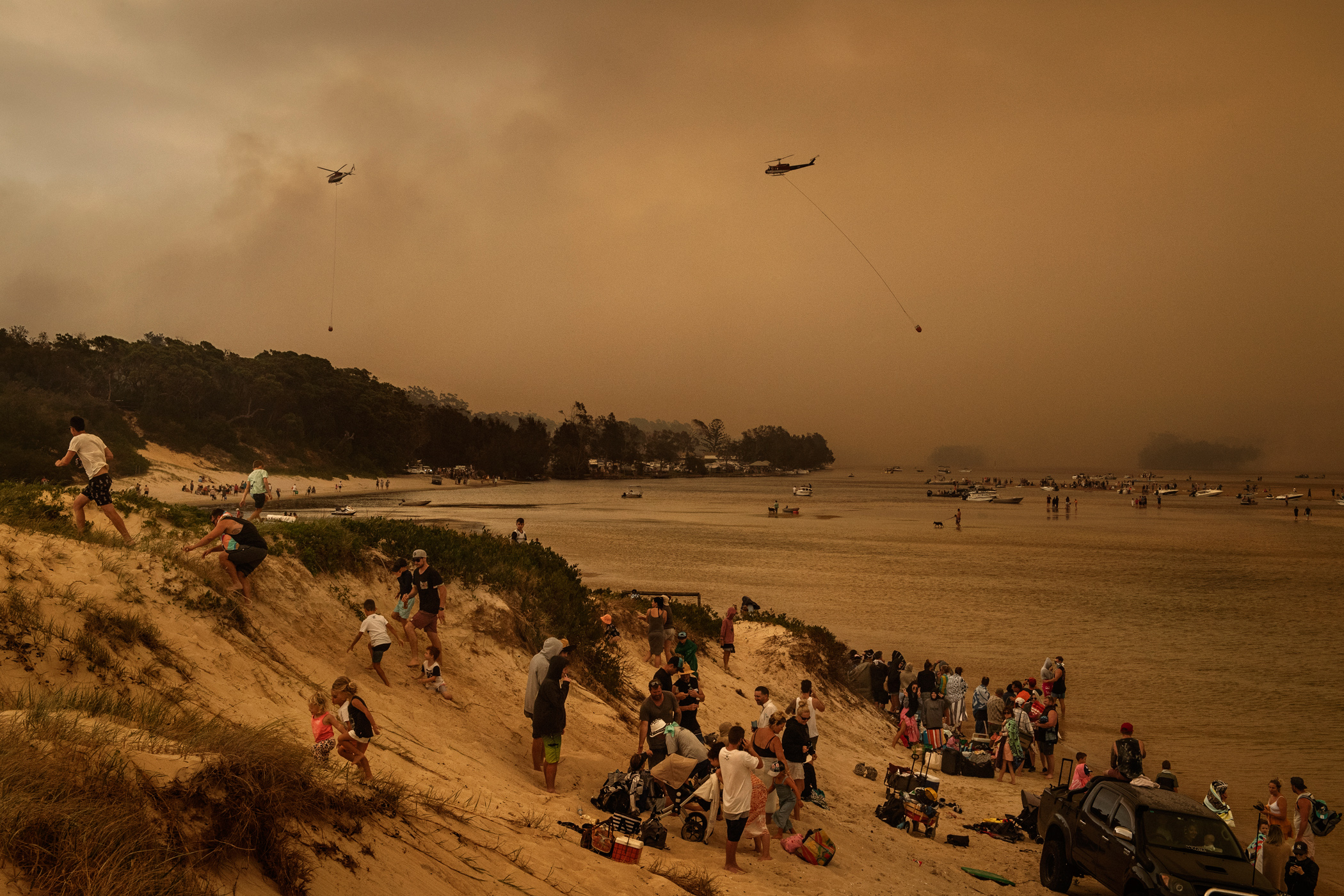
Tourists at Lake Conjola, a popular holiday destination, take refuge at the beach near the caravan park as the fire approaches from the south west threatening the town and destroying property. 31 December 2019
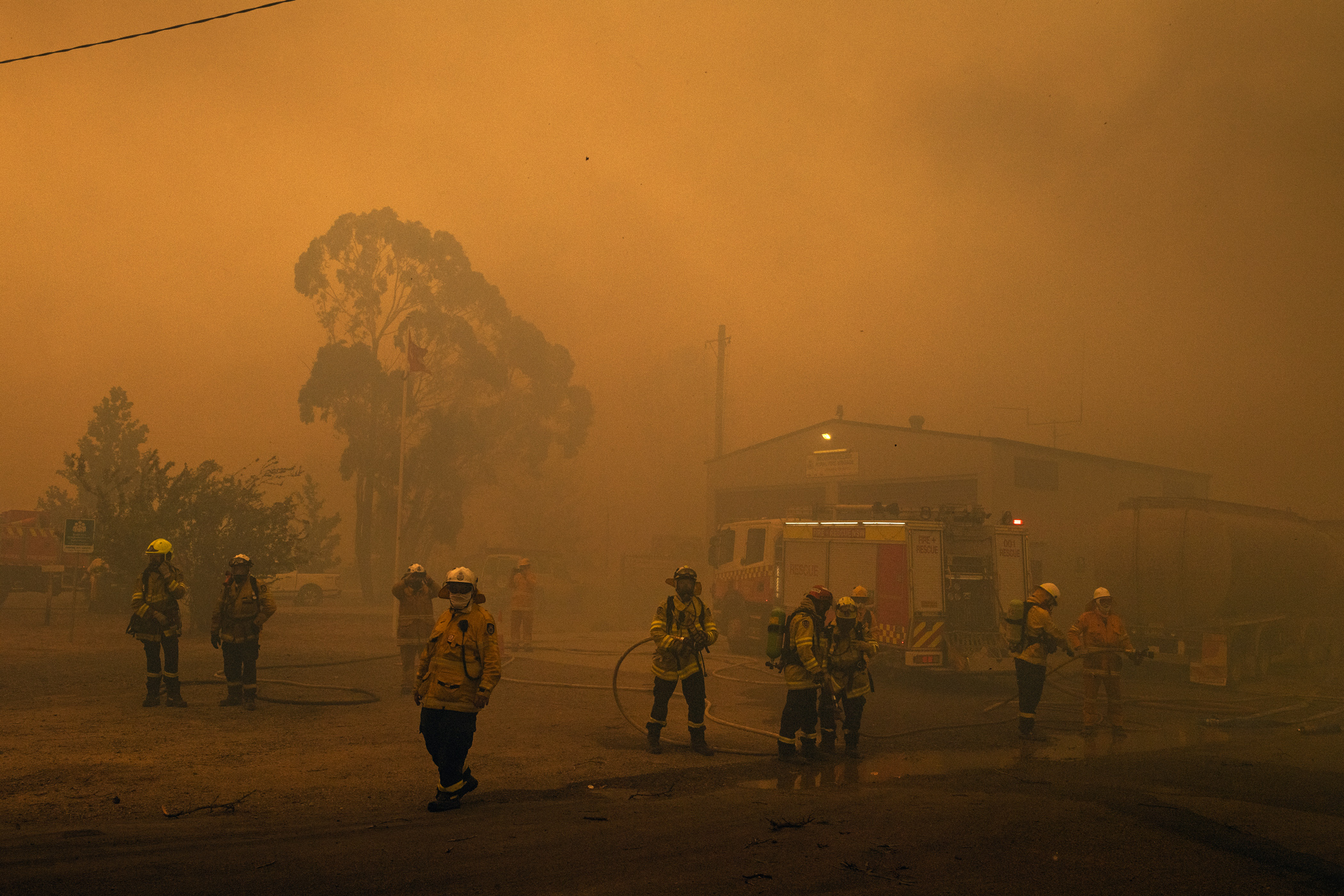
The centre of Balmoral town, inundated with smoke, with firefighters struggling with poor visibility. Balmoral, NSW. 21 December 2019
I couldn’t even have imagined anything on this scale. We woke up in the morning and it was
Emily Copley-Moorby, BlazeAid
like walking into an apocalypse. The sky was just dark and orange and there was ash falling from it.
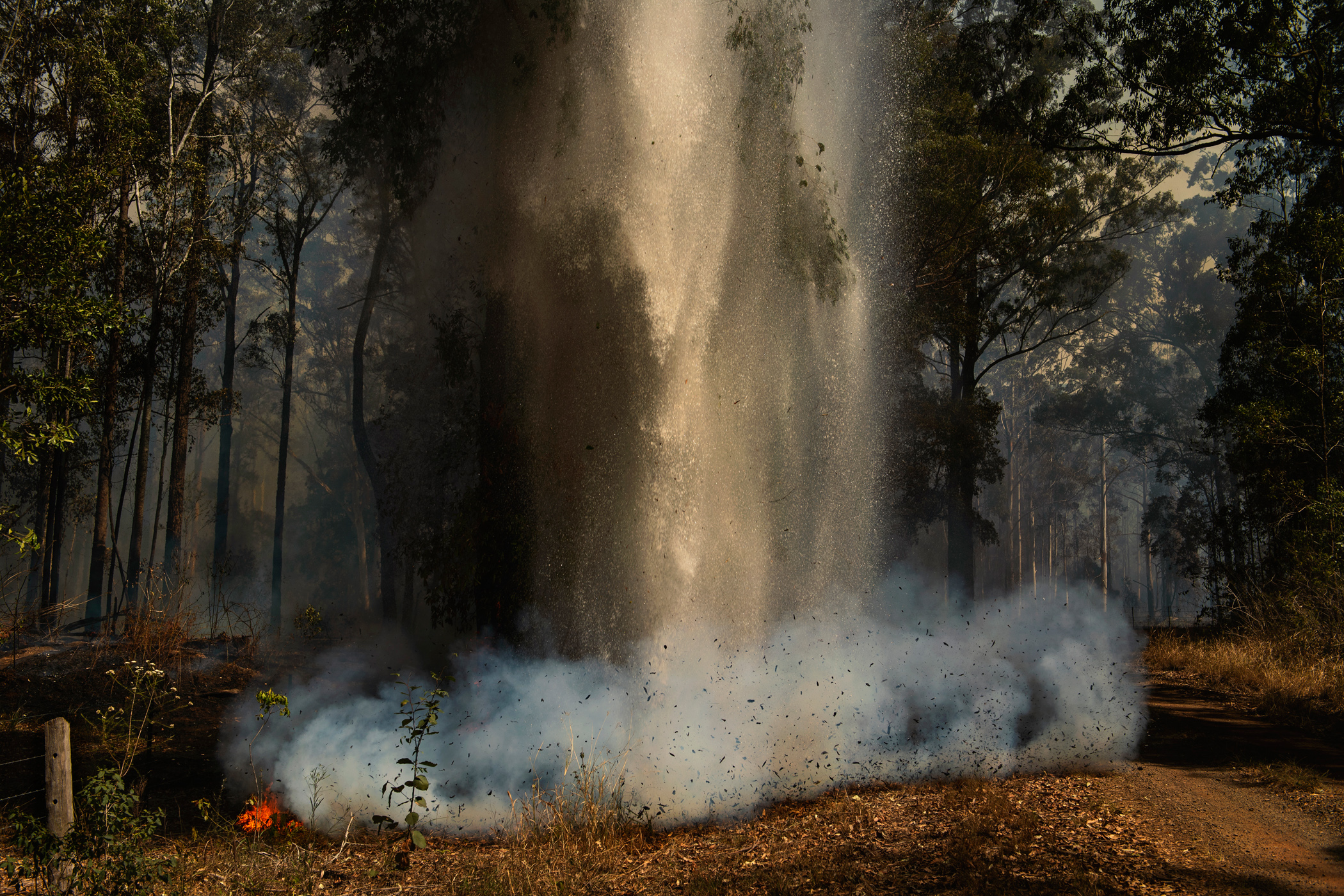
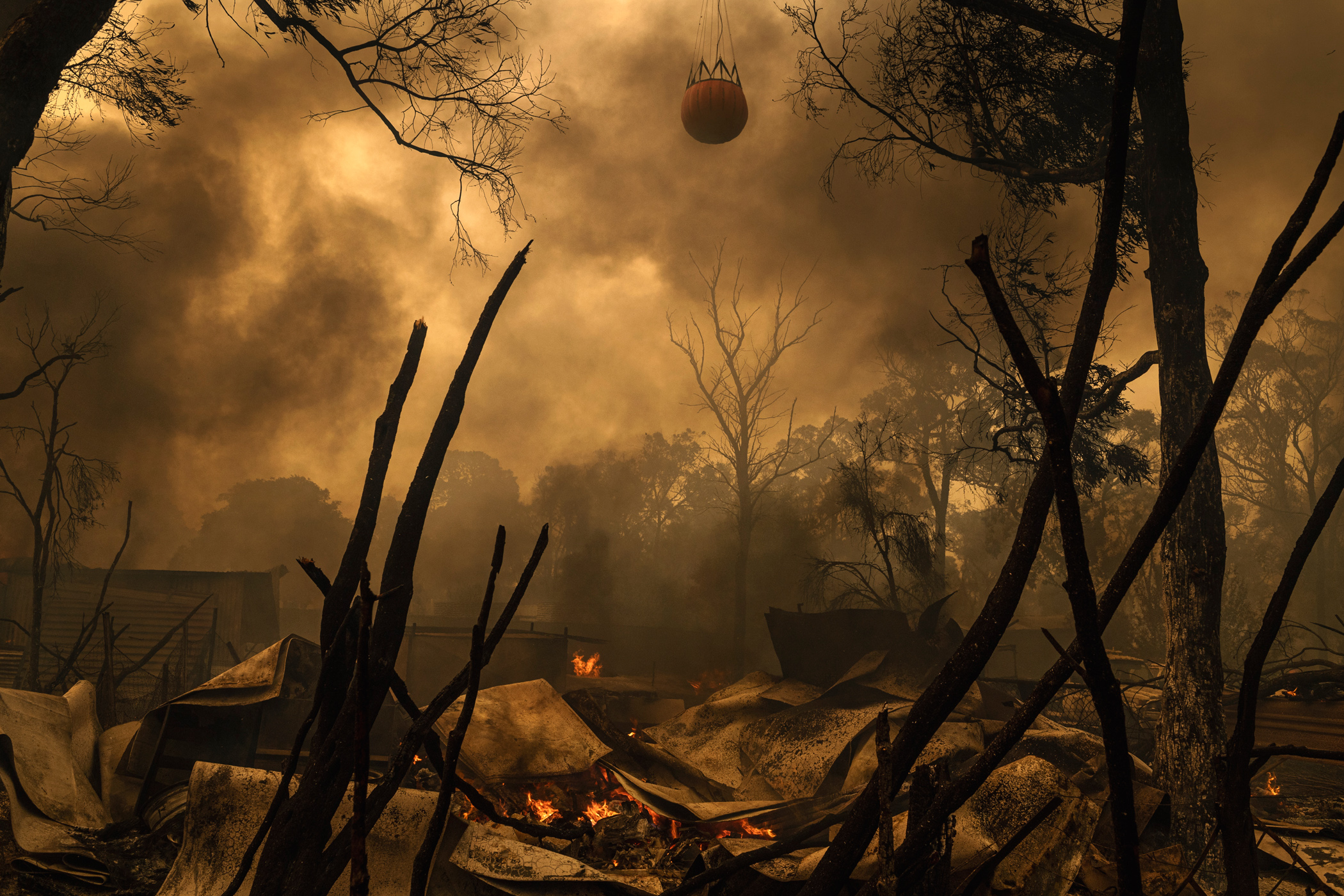
Kids were crying, parents were crying, then the beach caught on fire and people started backing into the water because they were really frightened. Everything was exploding, it was like bombs going off.
Kylie Warren, NSW RFS Batemans Bay Brigade
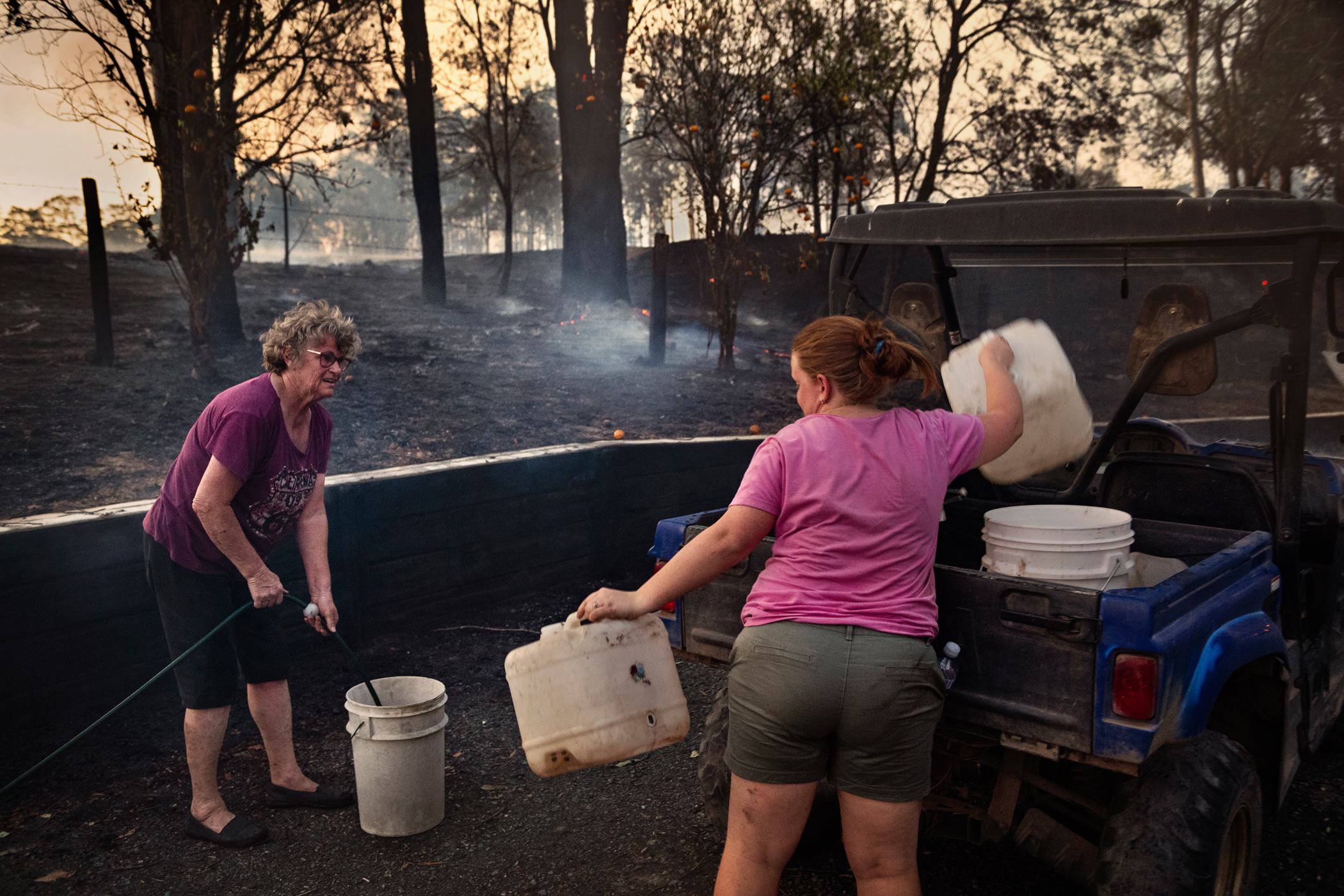
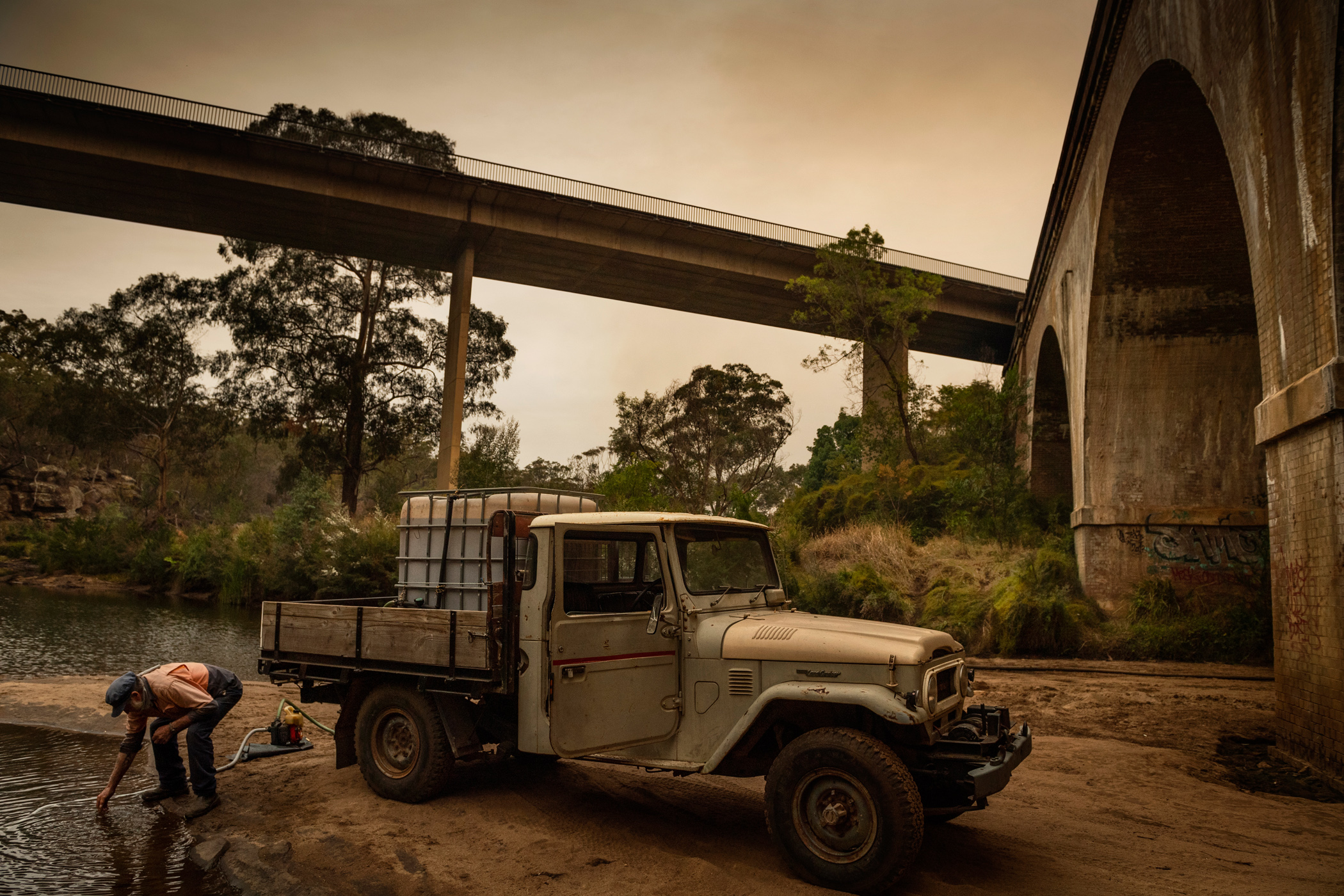
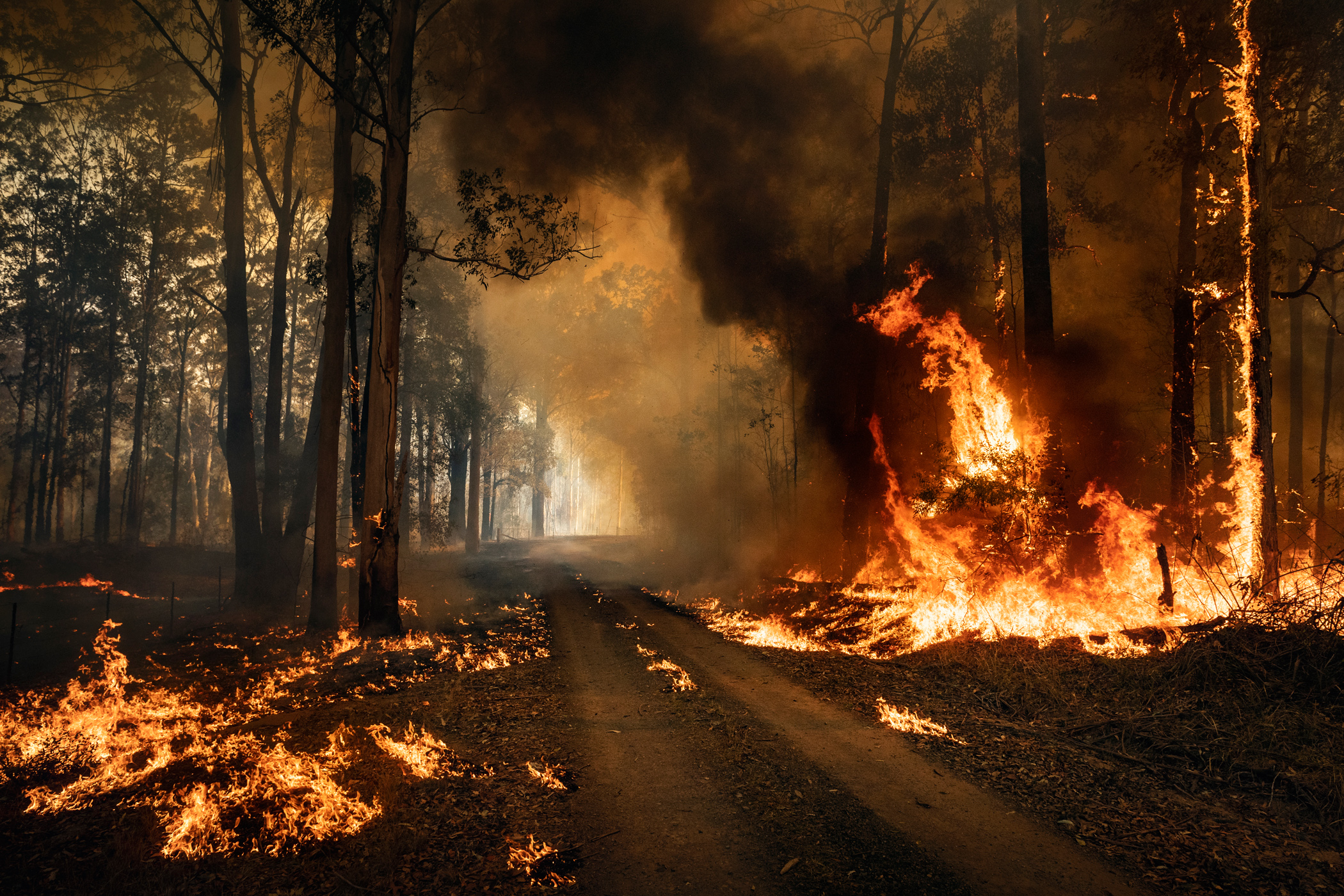
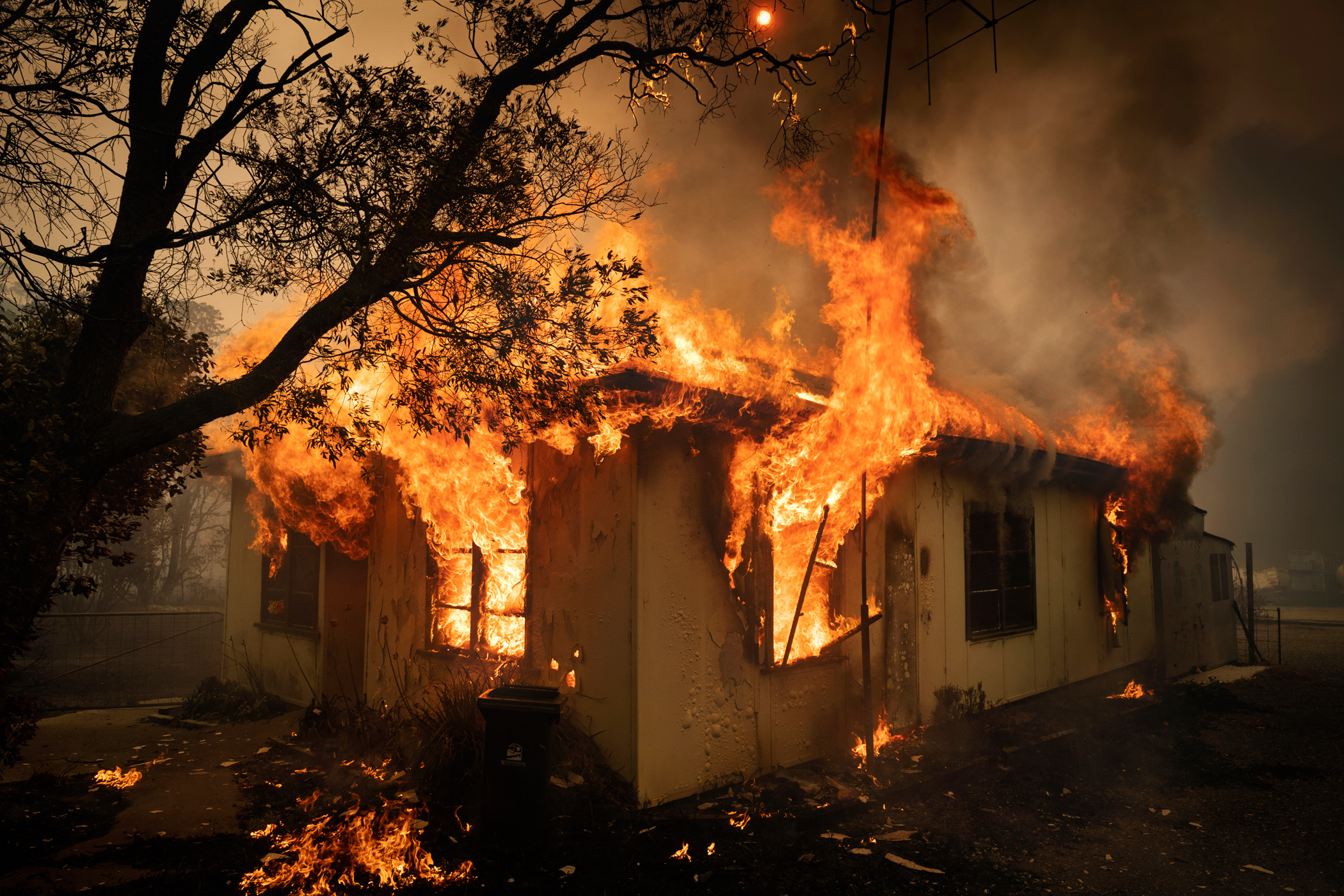
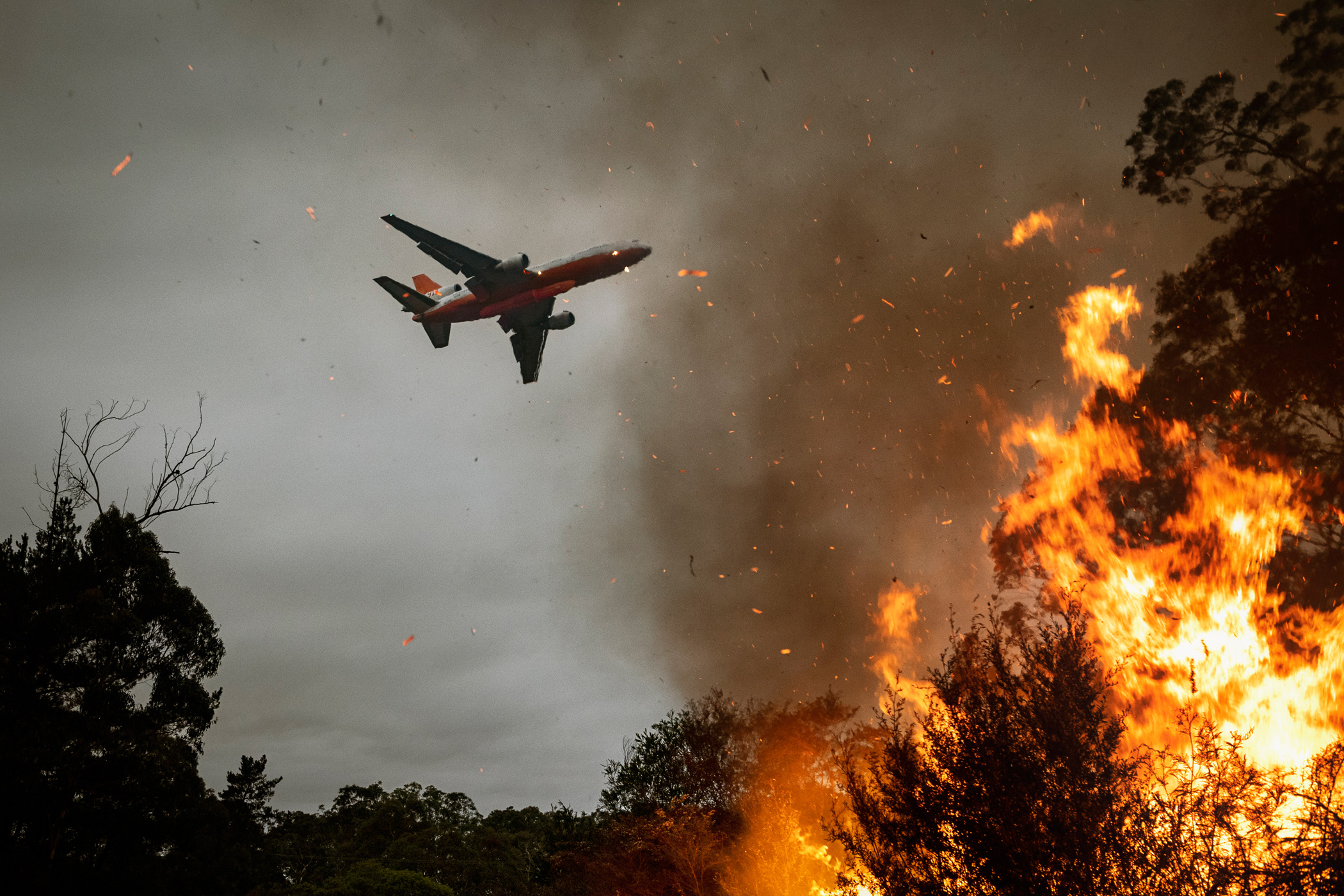
A Boeing 737 water bomber, leased by the NSW Rural Fire Service (RFS) and available year-round. Nicknamed 'Gaia', it can carry 15,000 litres of water or fire retardant. 20 December 2019
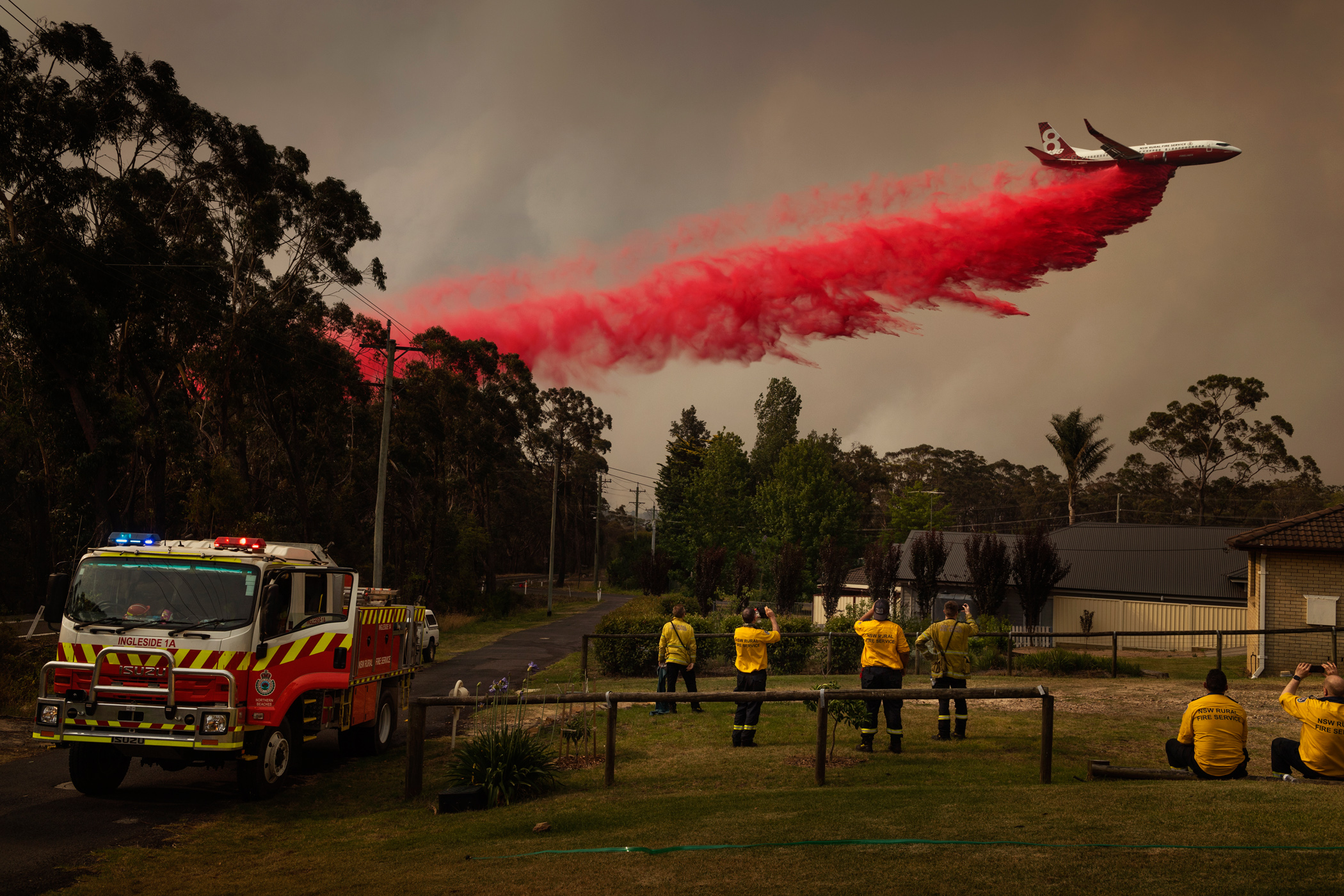
The largest firefighting aircraft in Australia drops fire retardant on the edge of Hilltop community in NSW. 21 December 2019.
An area of the Princess Highway covered in fire retardant that was dropped by a plane as the Currowan fire swept through the area near Jerrawangala, NSW. 2 January 2019
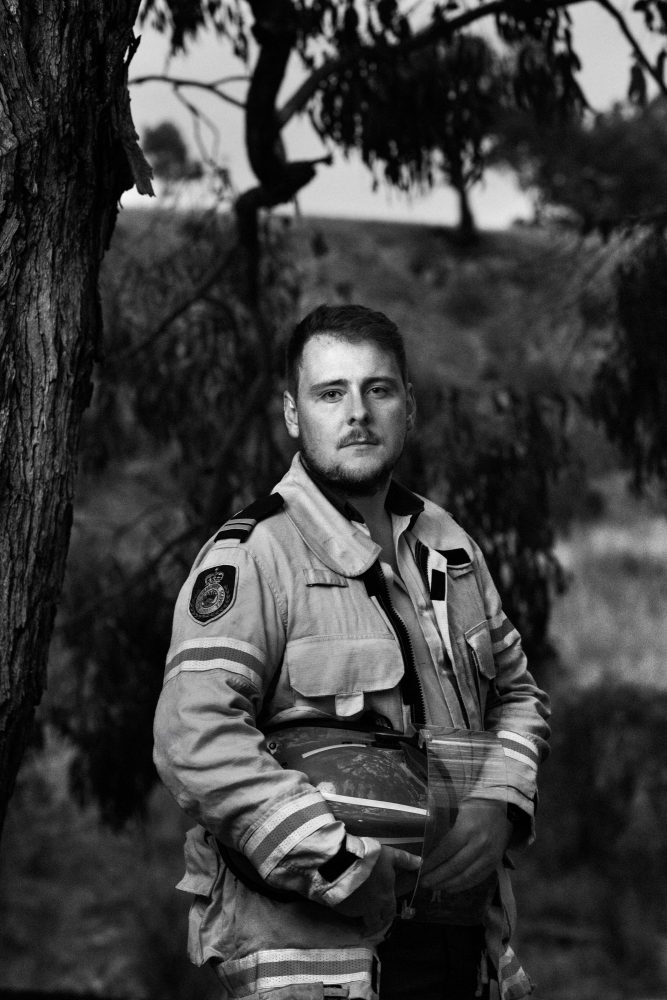
Nathan Barnden
Senior Deputy Captain, NSW RFS Jellat Brigade
“You’ve got seven lives in your hands. If I crash, if I hit anything, if the car stops, we all die….
Your vehicle is being rocked side to side. We were in a four-wheel drive, so we had no firefighting hoses, no protective curtains, no sprinkler systems.
Nothing to protect us. We pull up at the house, and three quarters of it is on fire. We can’t see a single person. Their car’s in the driveway and it’s on fire, and all of their sheds are burning. Everything that you can possibly think of around you is on fire.”
Green Wattle Creek fire, just south-west of Sydney on 6 December 2019
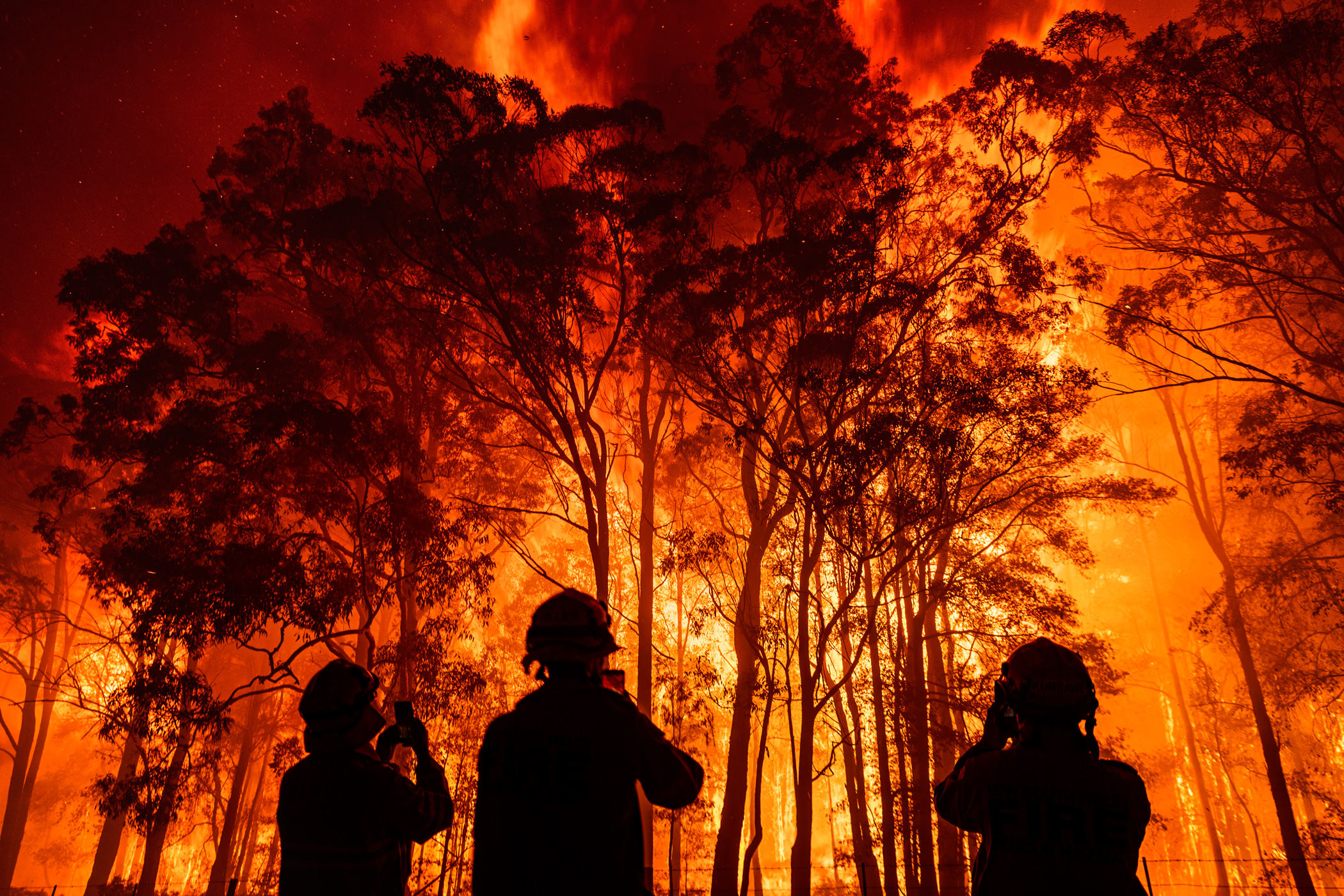
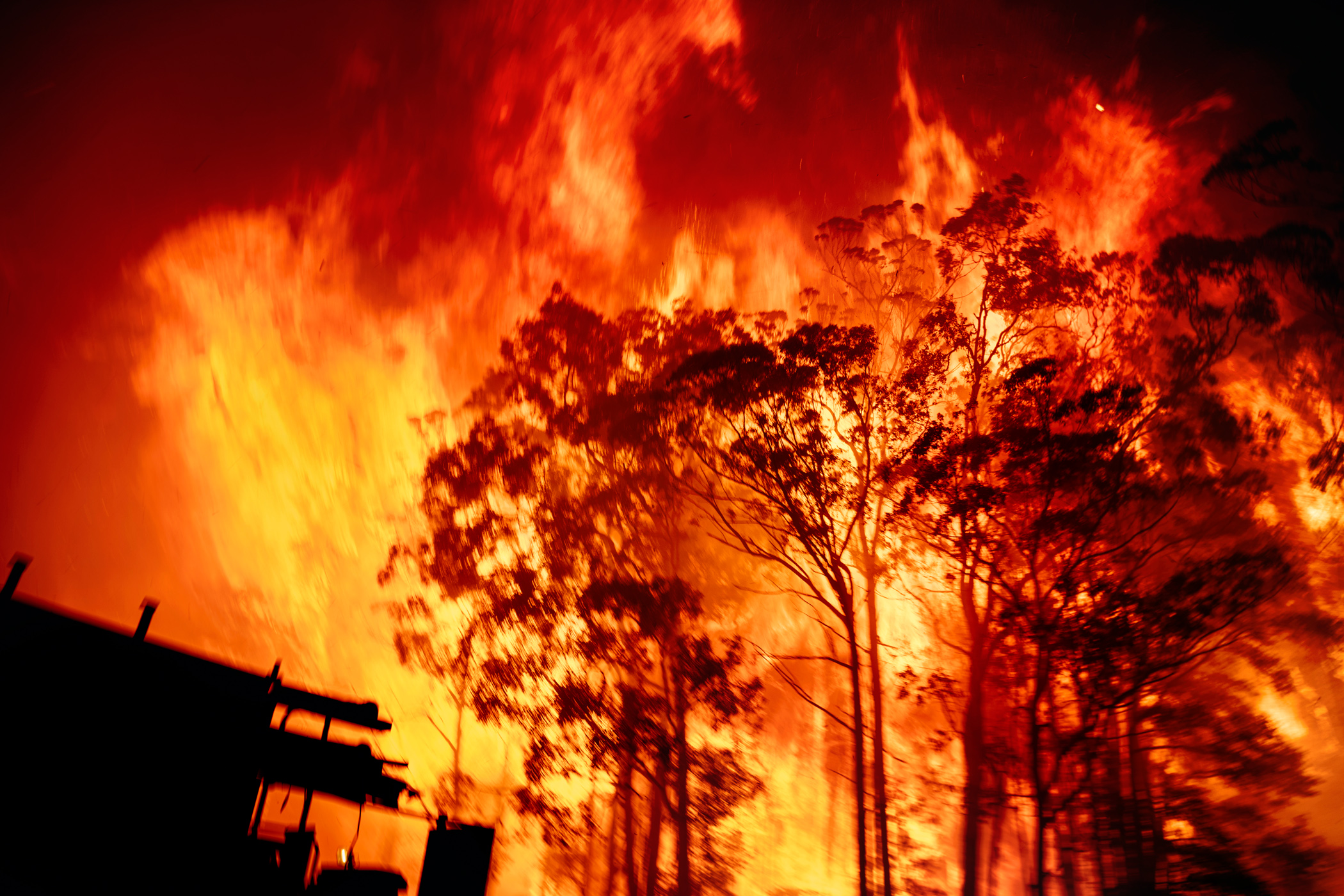
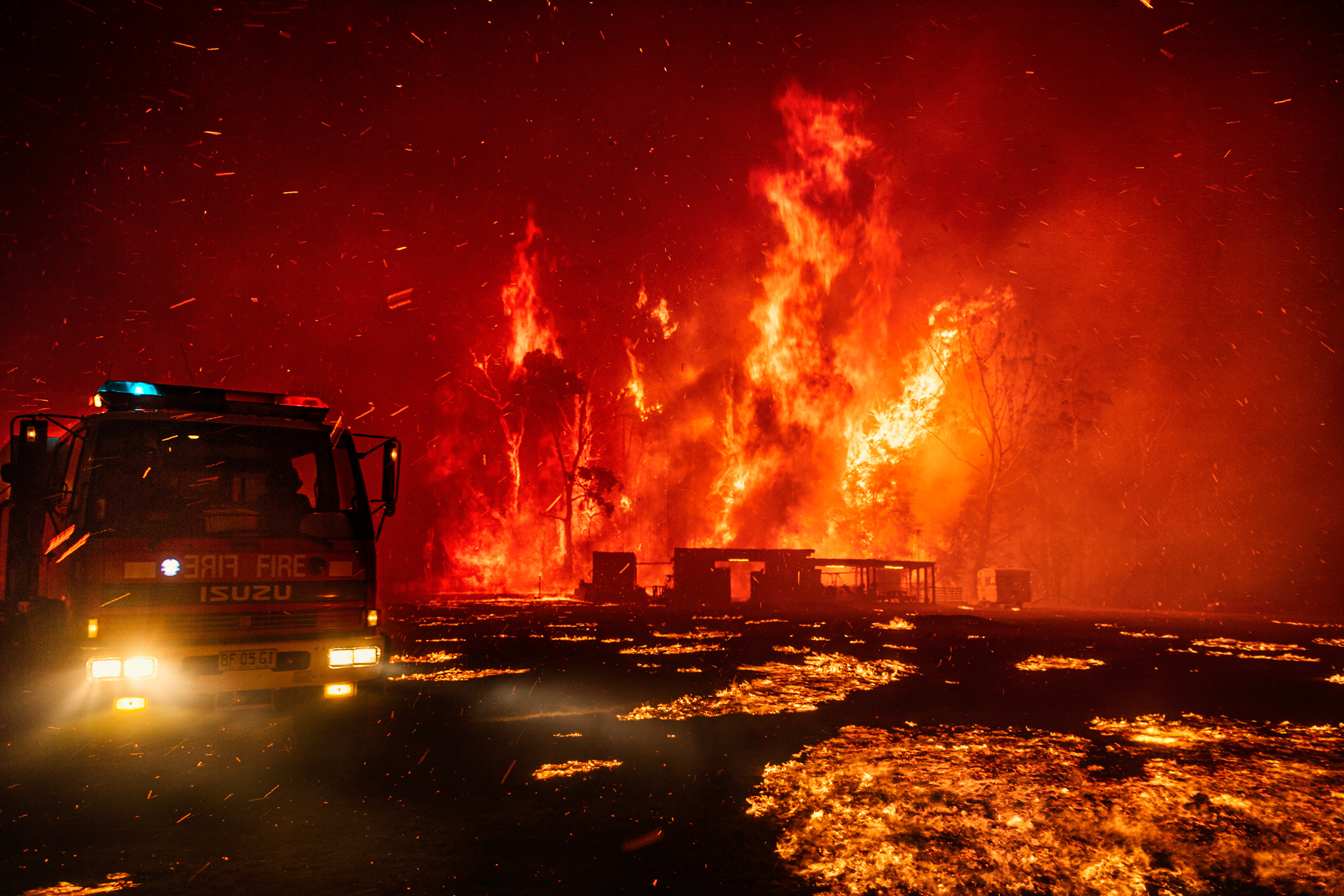
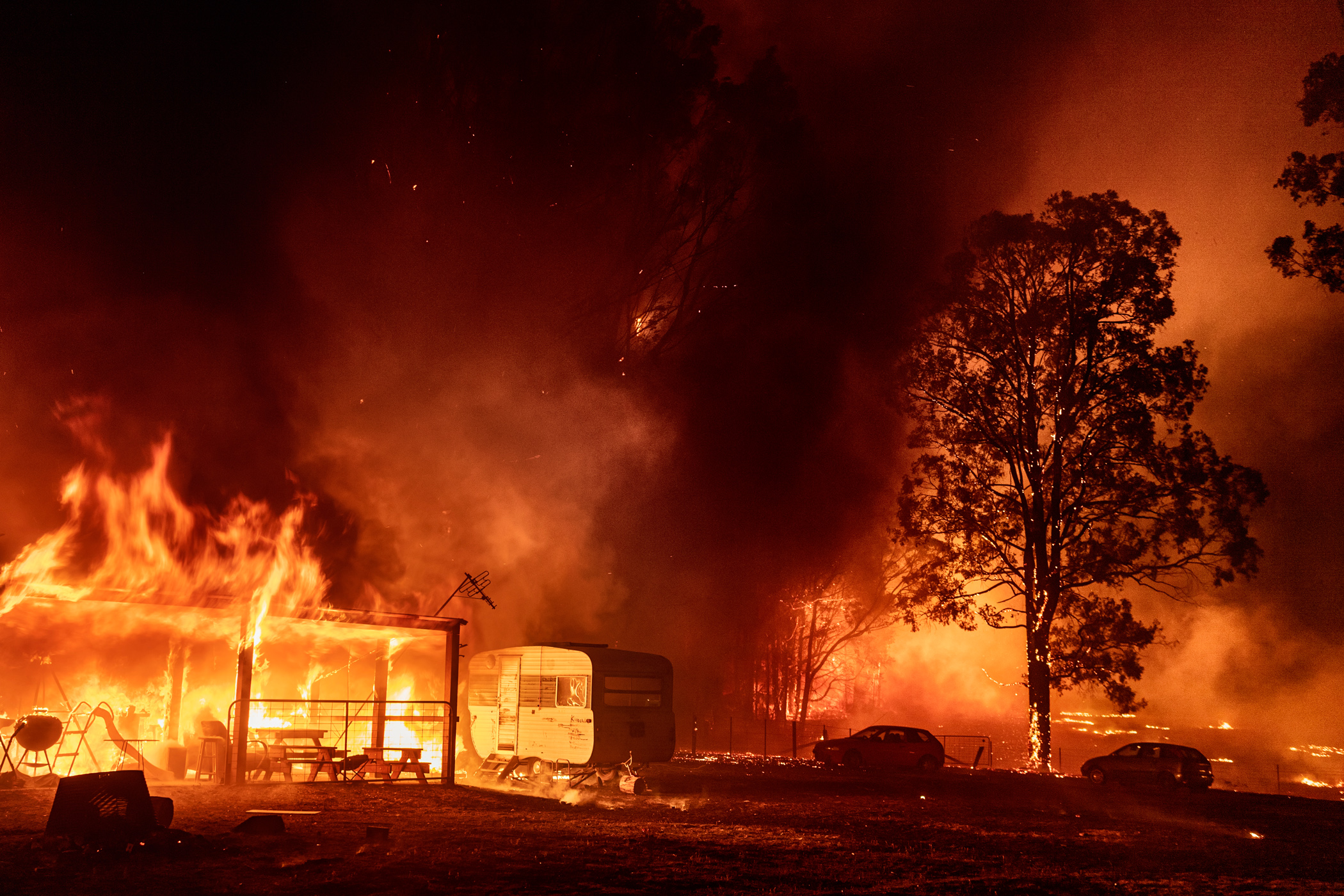
Green Wattle Creek fire, south-west of Sydney, December 2019.
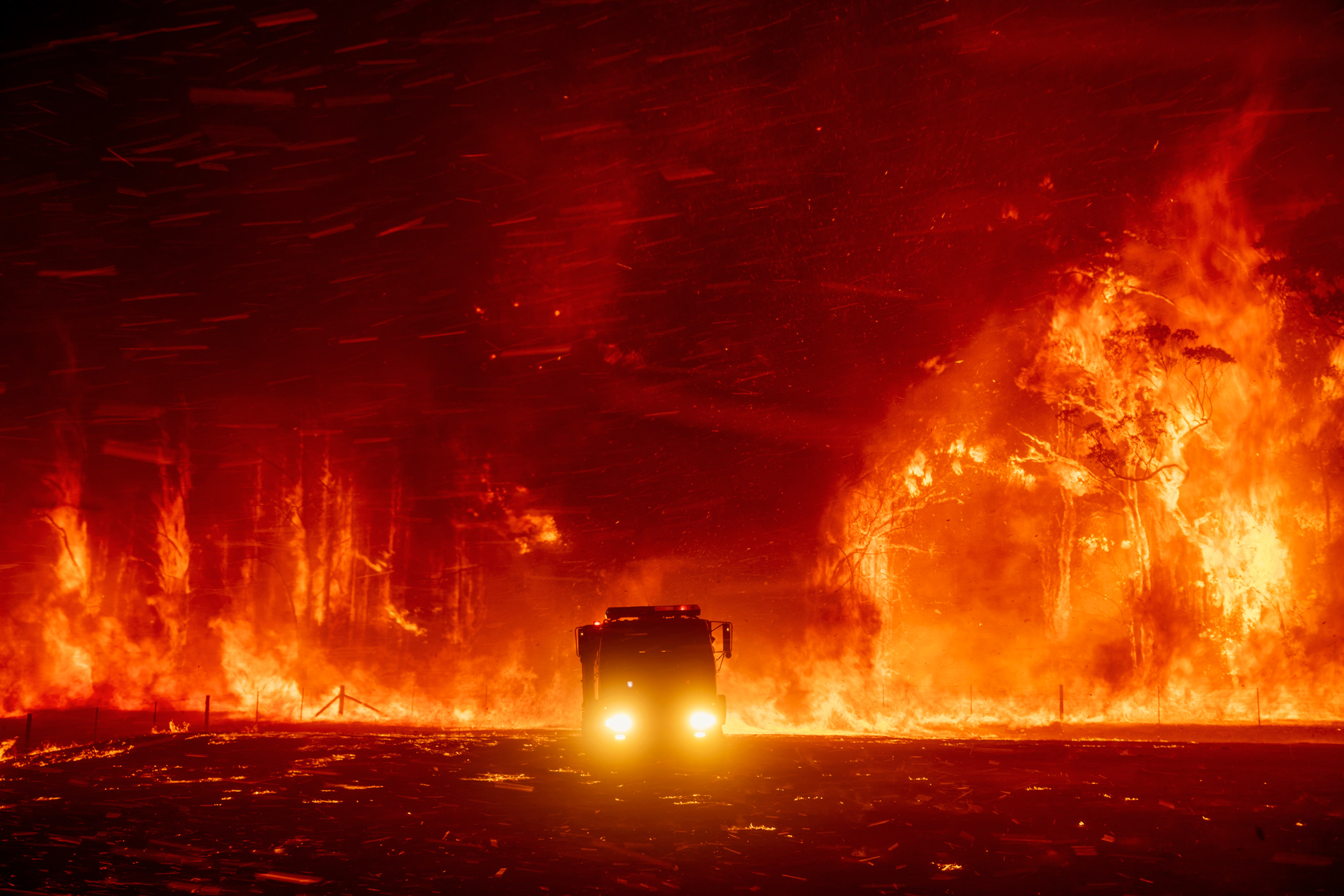
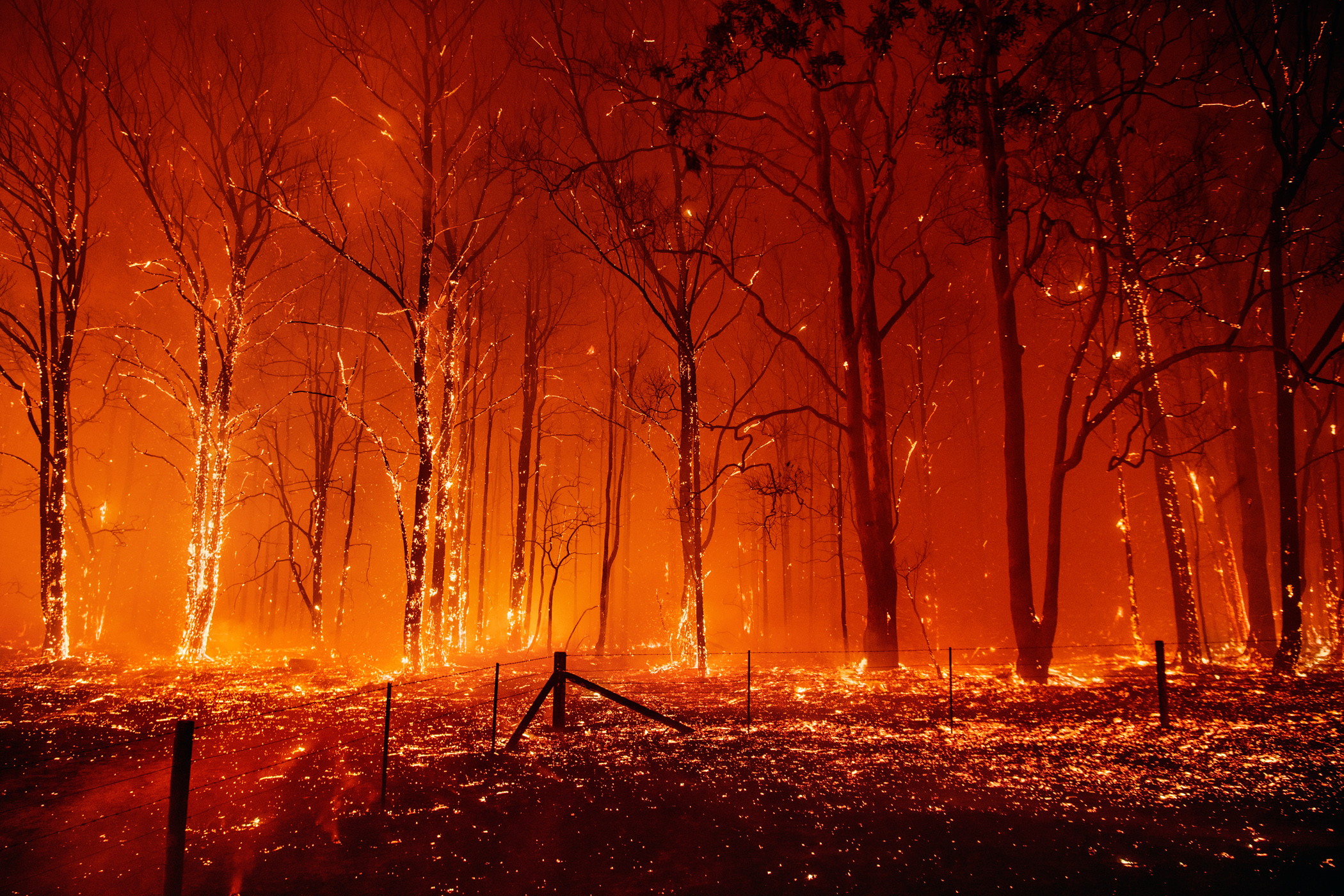
Green Wattle Creek fire, south-west of Sydney, December 2019.
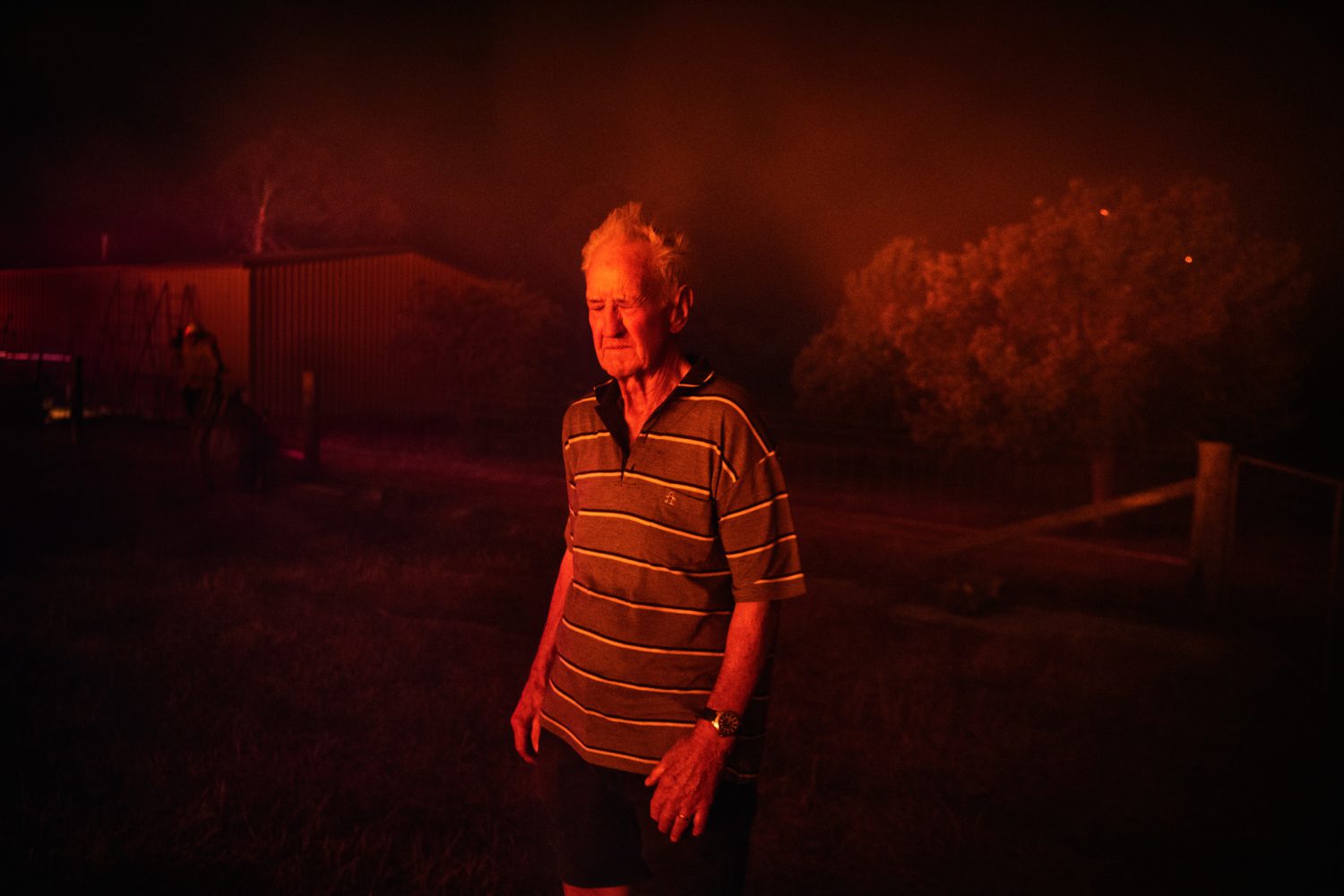
Homeowner Geoff Gardener is overwhelmed by heat and smoke as the fire approaches his home on Silverdale Road in Orangeville. 6 December 2019
In early December 2019, Geoff Gardiner was one of many Orangeville, NSW, residents who watched, overwhelmed by thick smoke and extraordinary heat, as the Green Wattle Creek fire approached his home. Firefighters battled flames as embers sparked, igniting small spot fires throughout the area.
A little over an hour from Sydney, NSW, Orangeville was one of many surrounding rural towns affected by the fires. Strong winds and dry weather lingered for weeks, causing severe blazes to swamp the
area again and again. While not directly threatened by the surrounding fires, Sydney was enveloped by choking smoke and hot winds, reminding residents of the nearby crisis.
While the Gardiner’s property, which they’ve lived at for sixty-five years, was ultimately saved by the NSW Rural Fire Service and Fire and Rescue NSW, many residents in towns like Orangeville were not so lucky. For the countless Australians who lost their homes – many of whom did not have insurance, or enough insurance to cover a rebuild – a new reality unfolded: living in donated caravans and trailers on the ground where their property once stood.
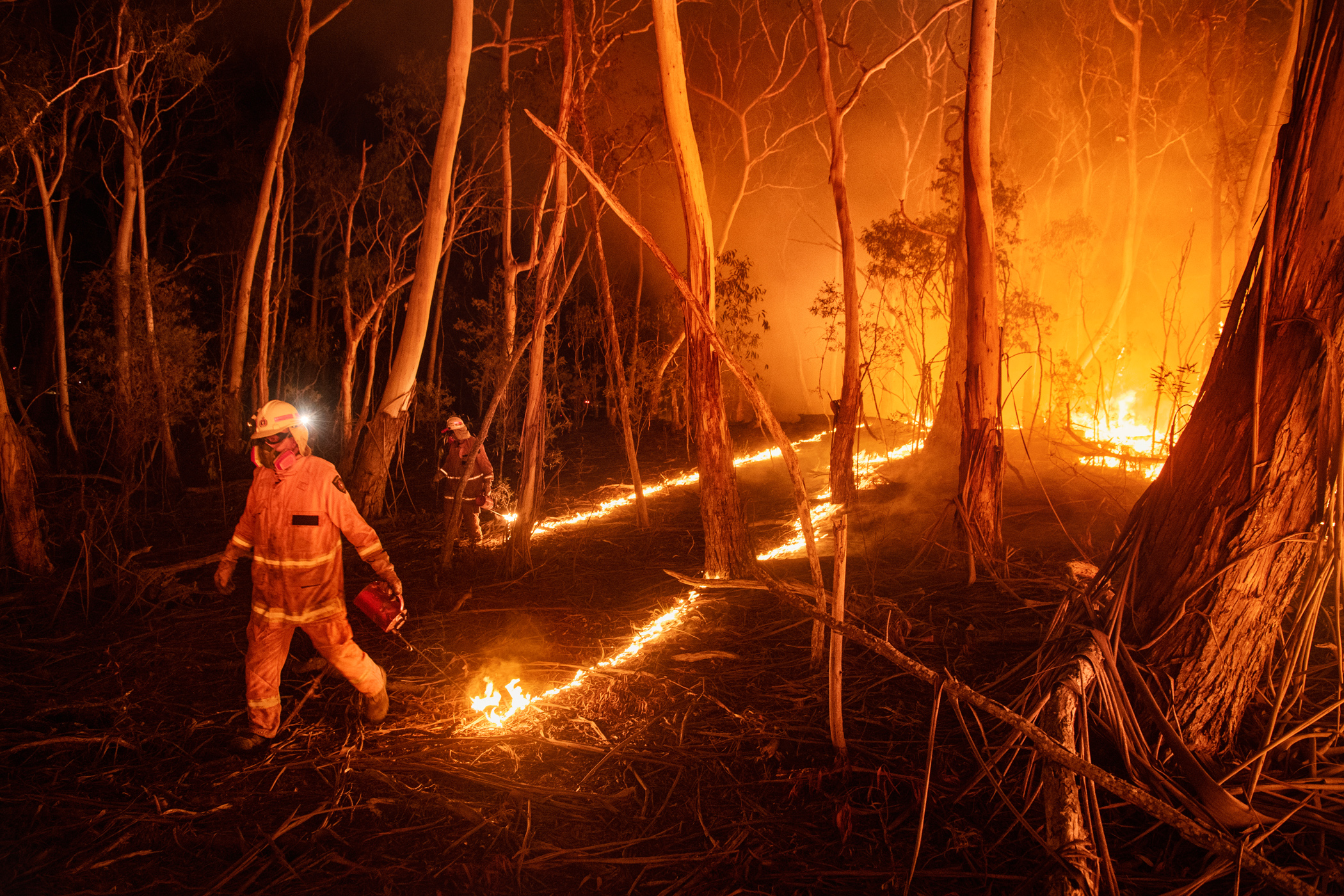
Tasmanian Fire Service (TFS) volunteers set light to the scrub using kerosene lighters, making emergency containment lines in an attempt to stop an advancing fire front nr Creewah Road, Cathcart NSW. 30 January 2020
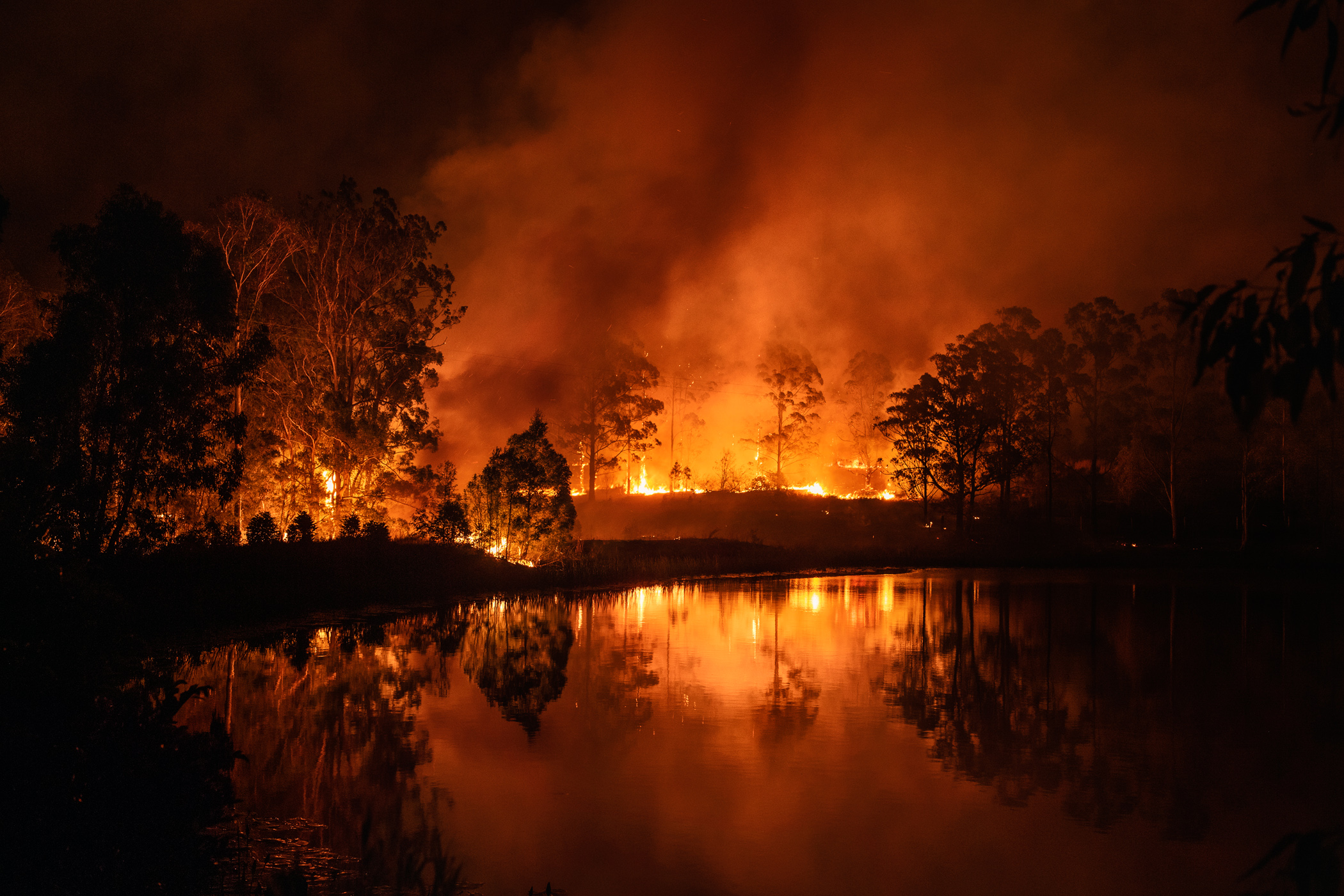
An bushfire in Hillville, NSW. November 2019
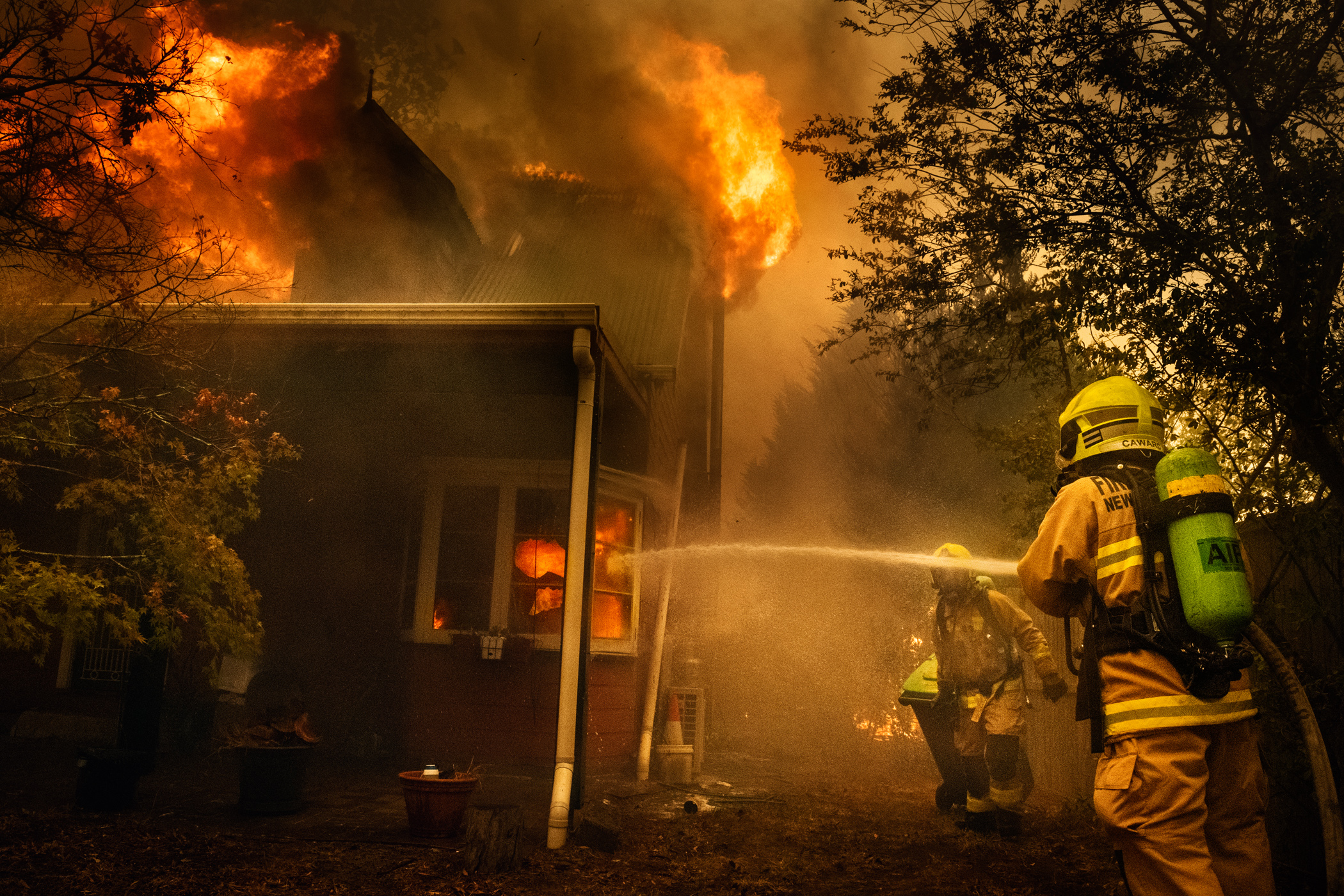
Firefighters attempt to put out a house fire in Balmoral. 21 December 2019
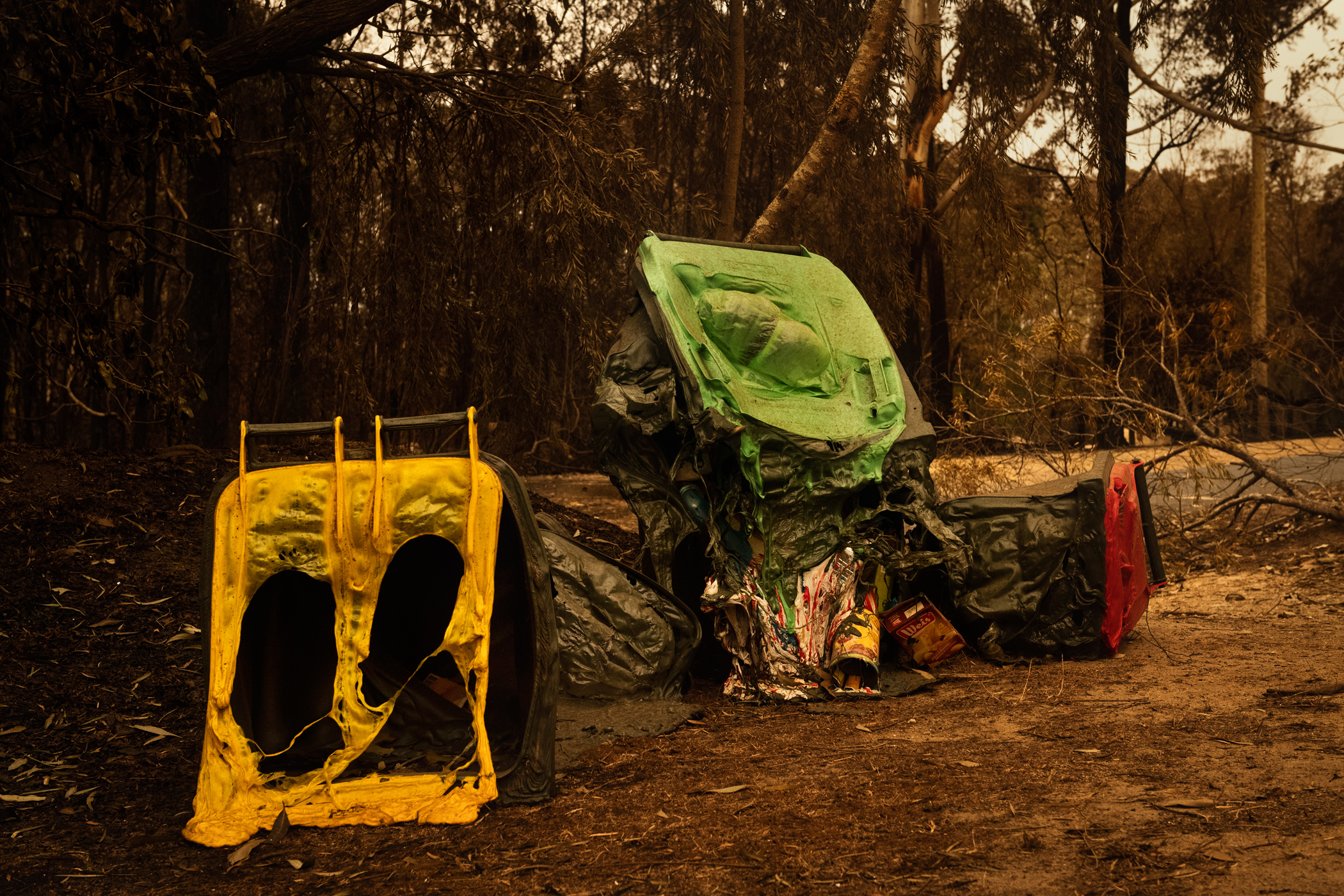
Burnt Bins in Mogo, NSW. 5 January 2020
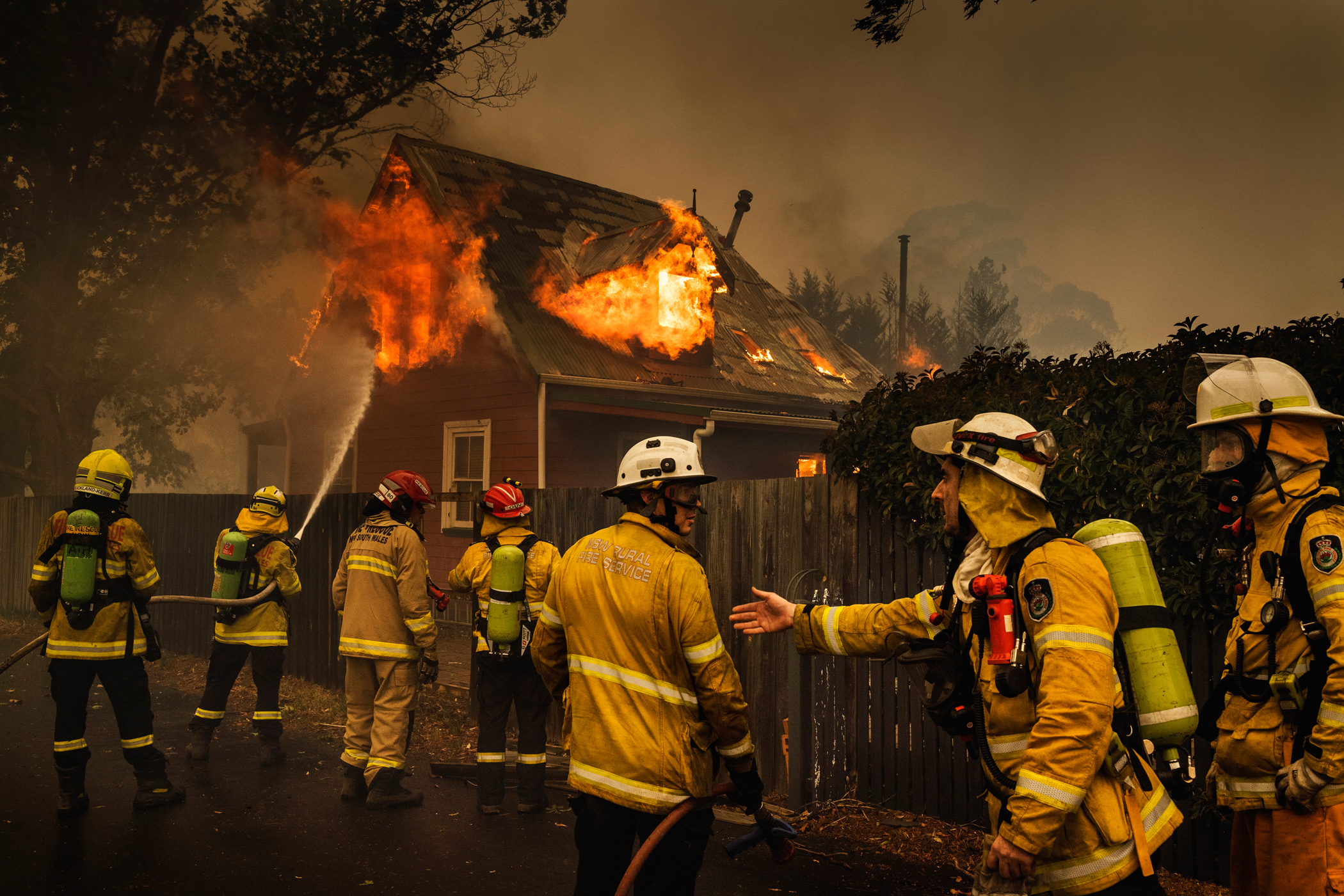
RFS firefighter Kyle Parker (second from the right) instructs a colleague to leave the fire ground as his mask is not effective protection from the hazardous house fire smoke in Balmoral, south-west of Sydney. 21 December 2019
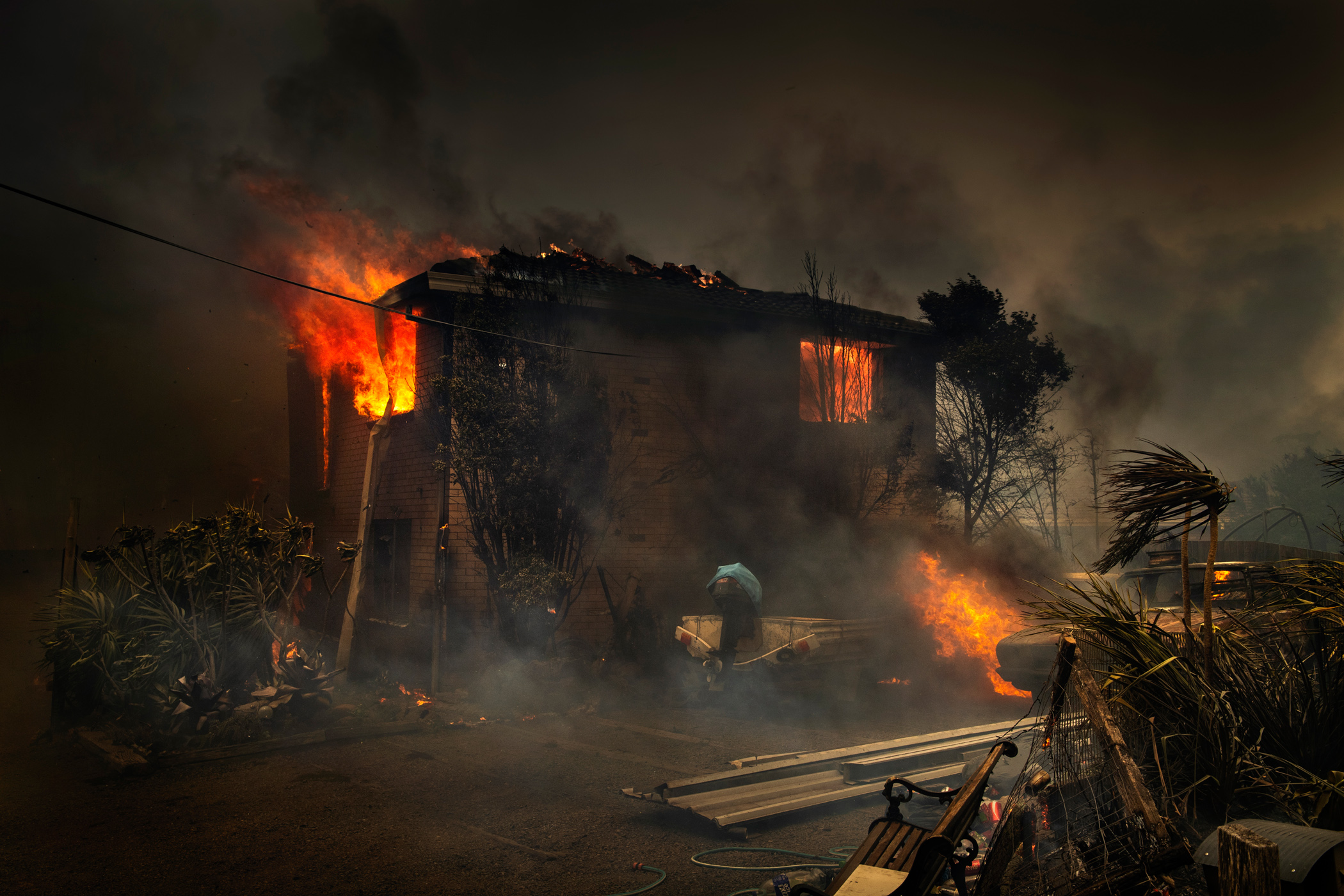
Destroyed property by the Currowan fire in Conjola Park, NSW. 31 December 2019
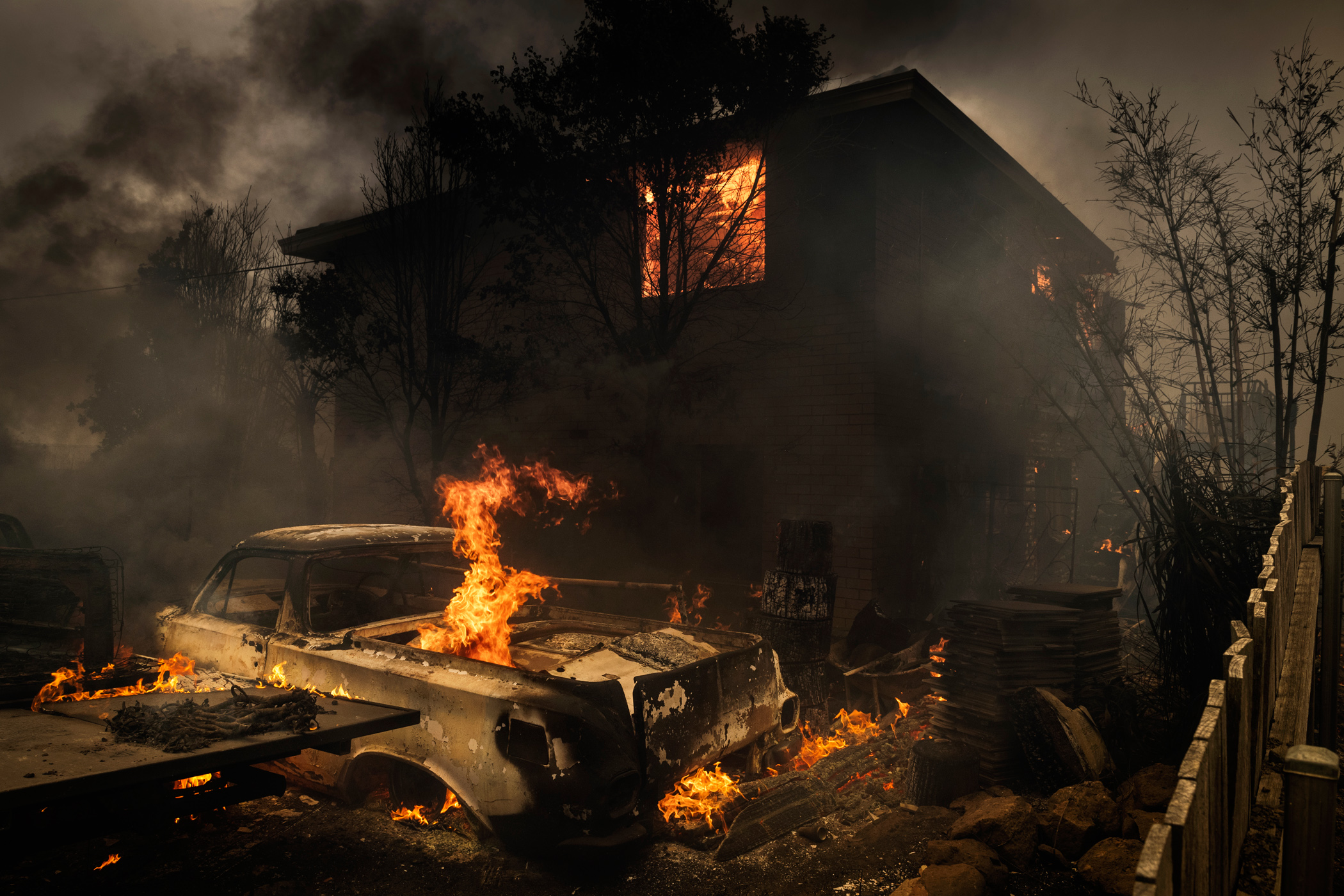
The Currowan fire in Conjola Park, NSW. December 2019.
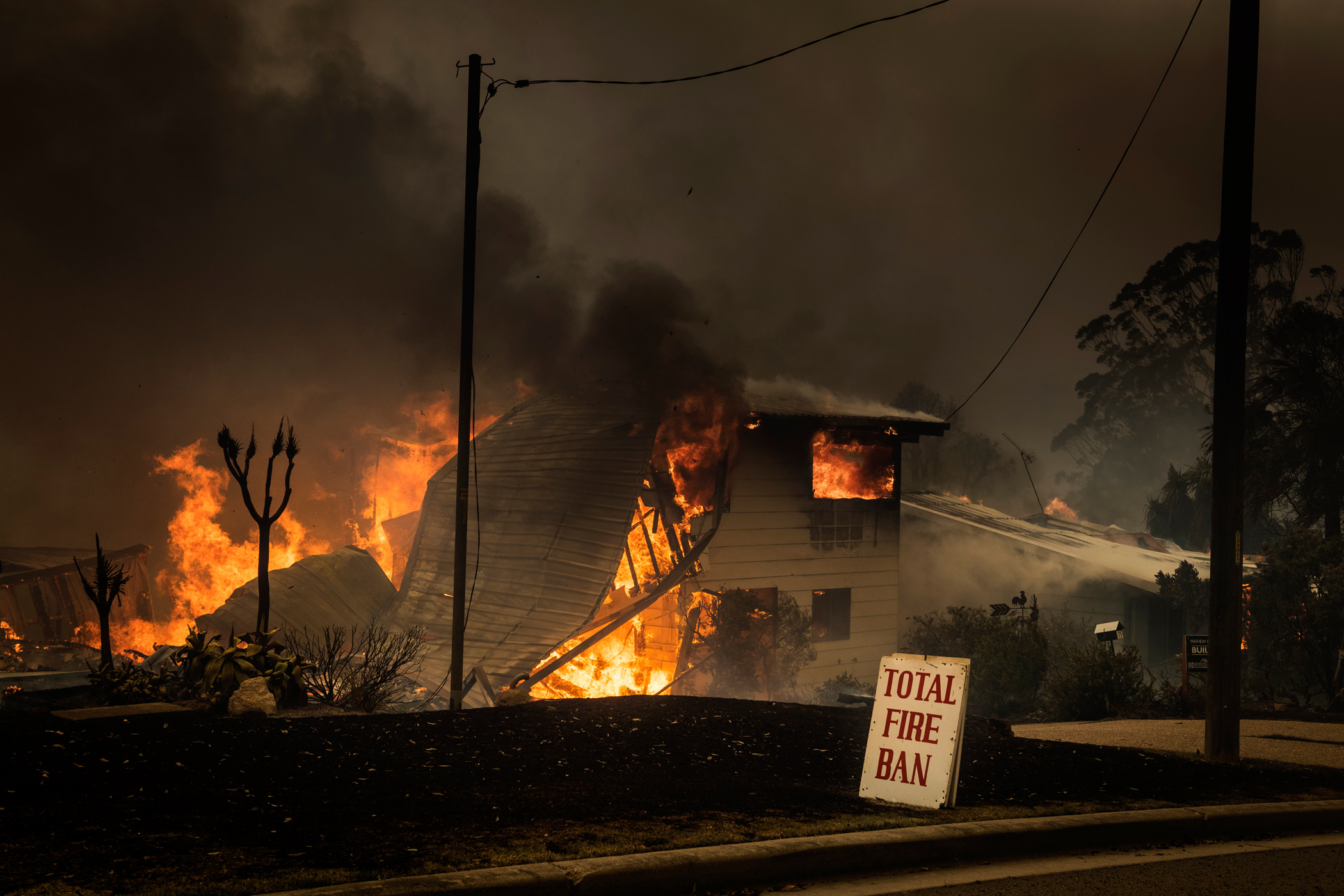
The Currowan fire in Conjola Park, NSW. December 2019.
The temperature around our property would have reached 1,200 to 1400 degrees Celsius in order for it to melt the glass. It broke into the structure within ten minutes of the fire front arriving. It incinerated what was on our verandah and against the walls and reduced it to ash. And then the winds took the ash away leaving white ghostly outlines of tables and chairs against the blasted walls. Such a tremendous amount of heat, a tremendous amount of force.
Justin Kam, resident, Balmoral, NSW
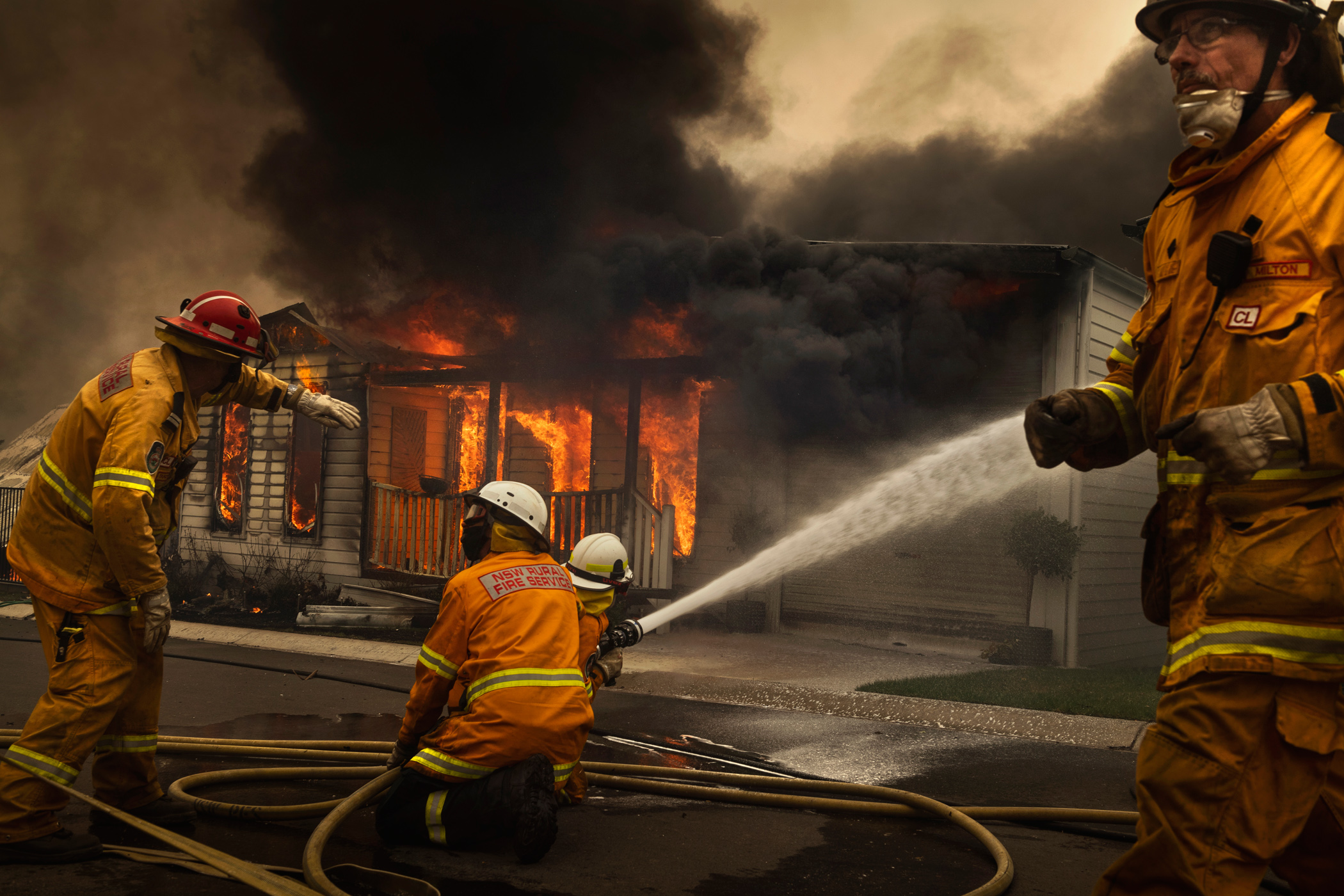
Firefighters attempt to control a house engulfed in flames that is threatening neighbouring properties. Lake Conjola, NSW. 31 December 2019
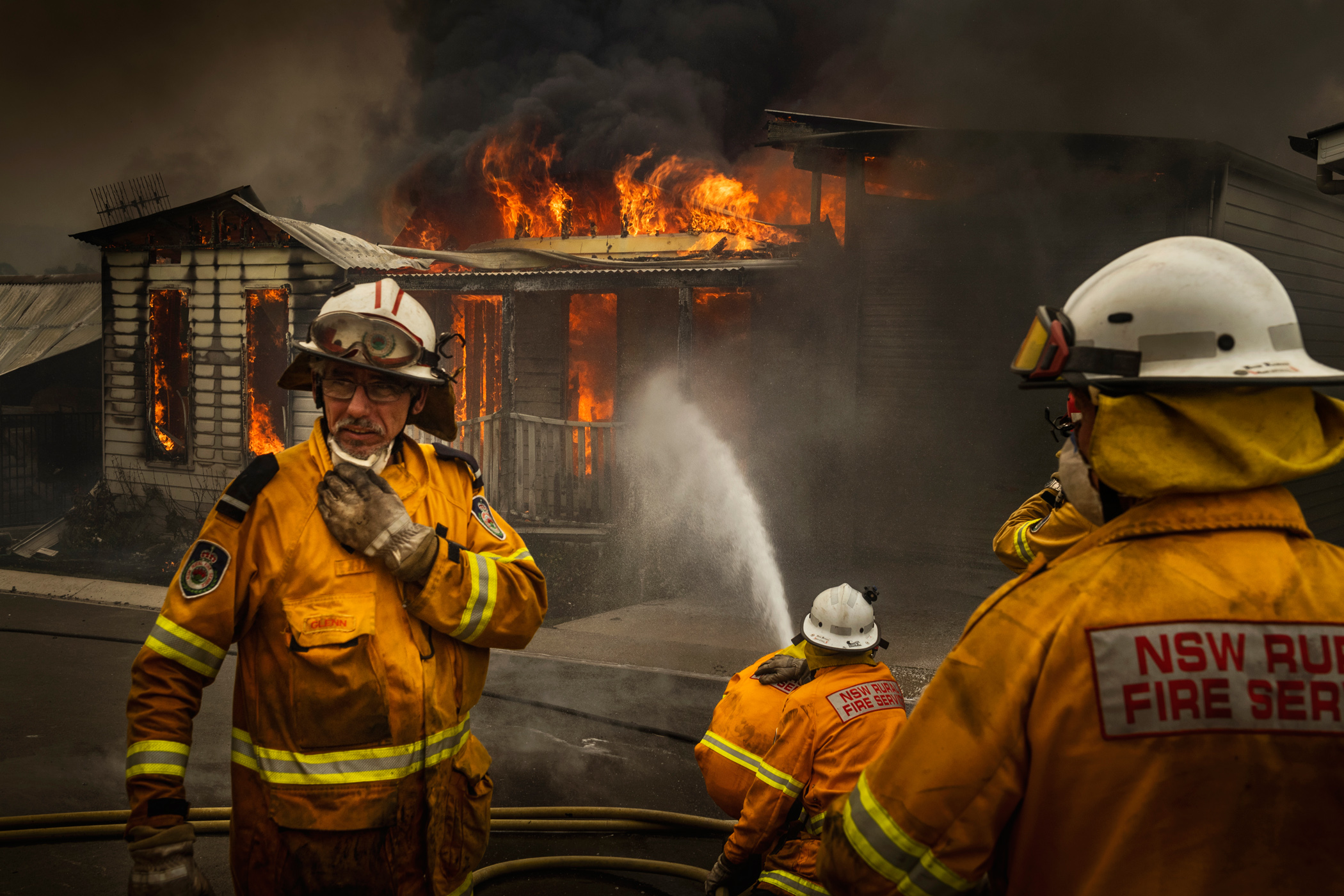
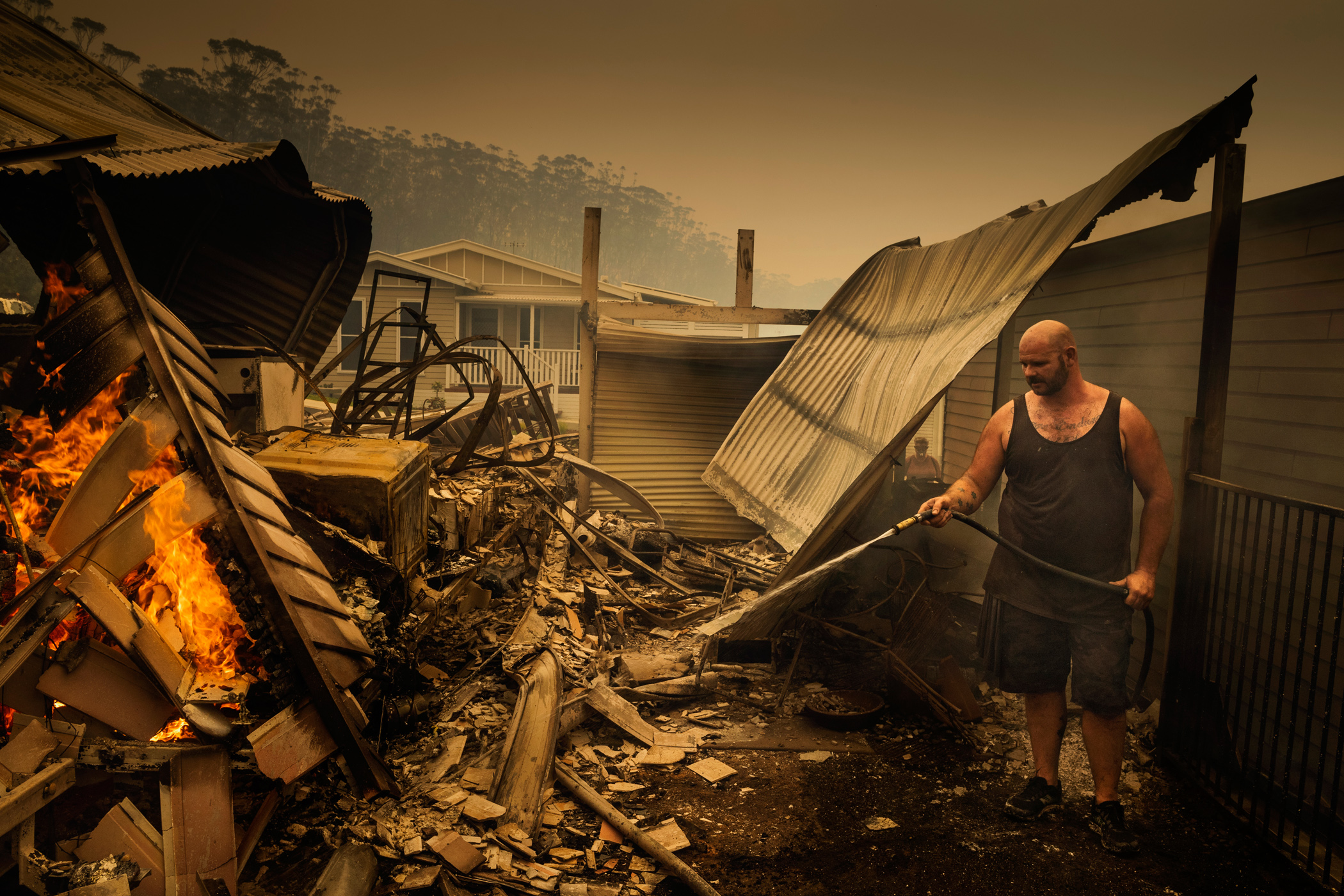
People try to save their properties with garden hoses in Conjola, NSW. December 2019
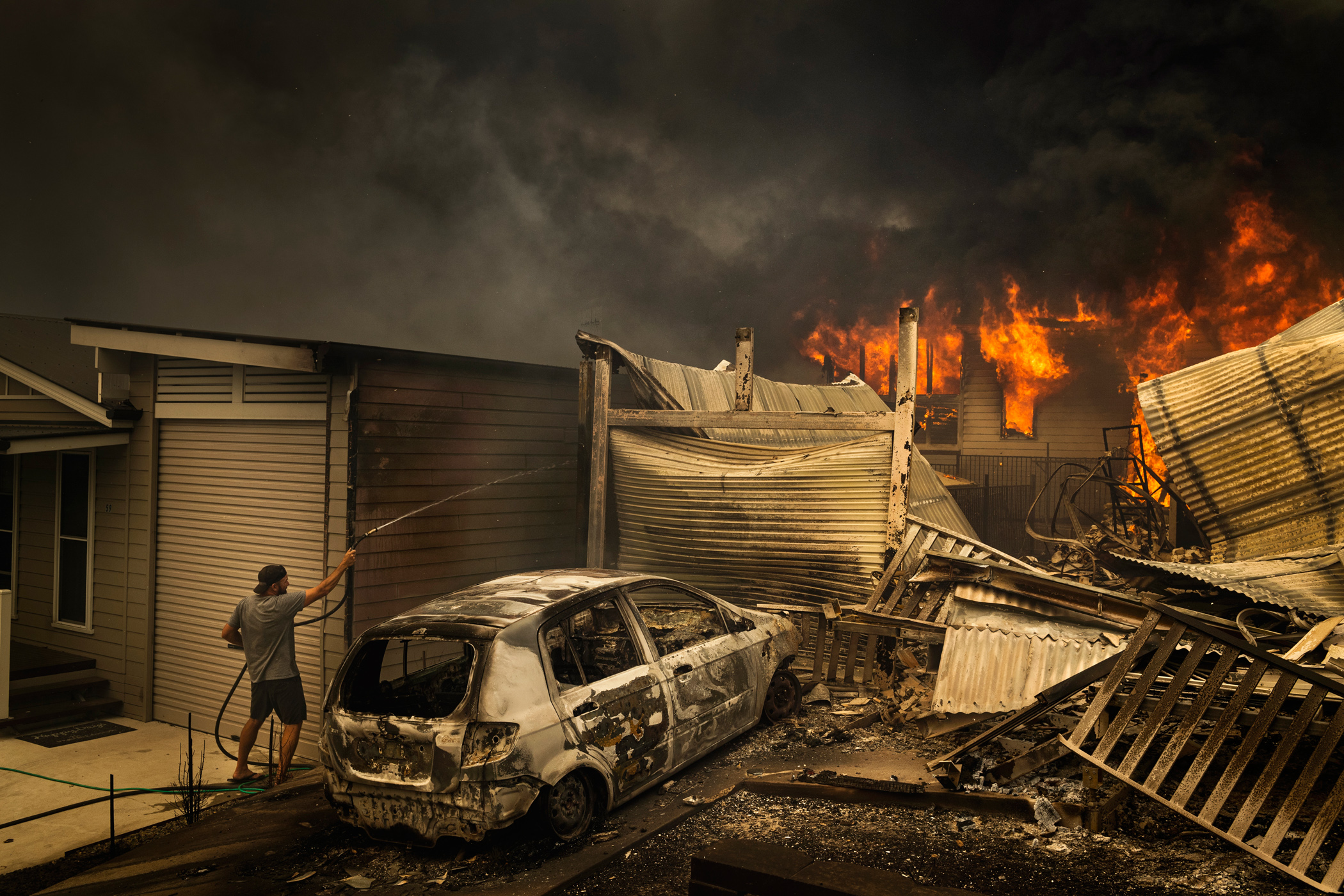
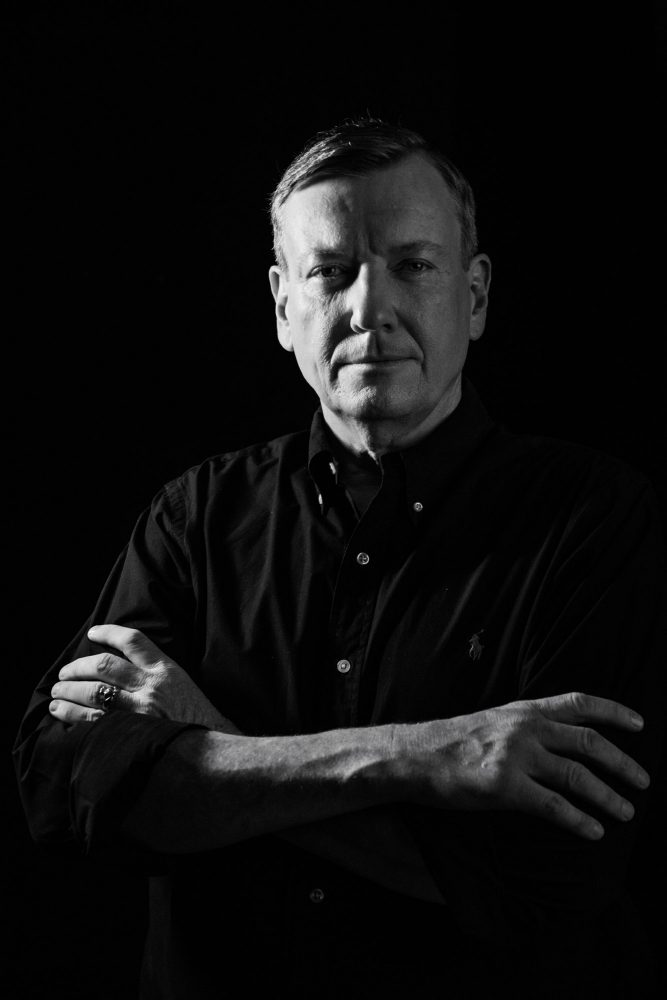
John Brogden
Chair, Lifeline Australia
Lifeline responds to around a million telephone calls a year. In the fifty-eight years of Lifeline’s history, we have never seen any natural disaster like the Black Summer fires. Never.
If there was ever a time to send a message that it’s okay not to be okay, it was during and after the fires. One of the lessons for Australia is, we’re not as tough as we thought we were, but we are also more resilient than we thought we were.
Trauma and crisis can be and are very painful, and long-lasting, but can also be a catalyst for positive change.
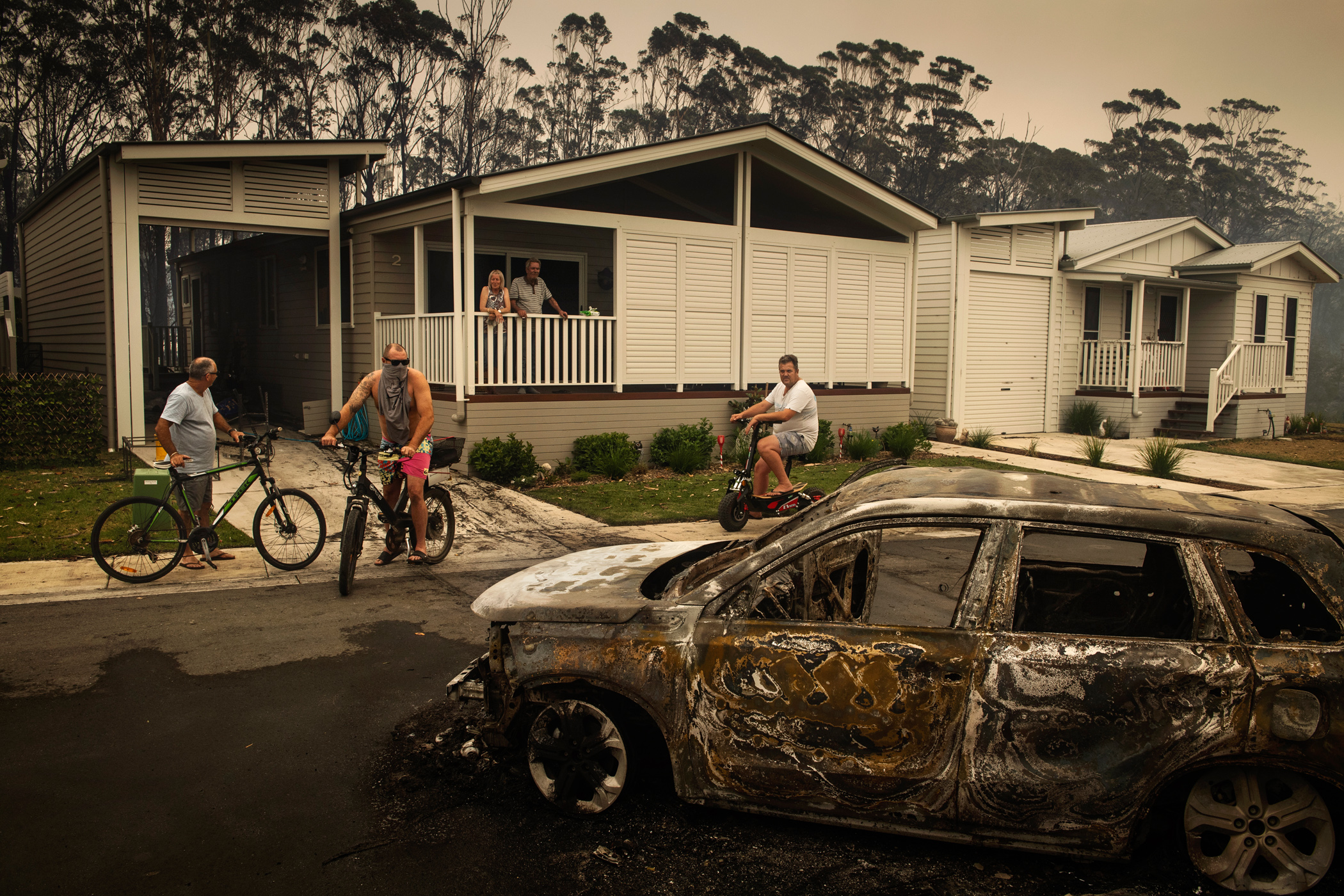
Tourists visit a street that has been badly affected by recent fires, inspecting the damage. Lake Conjola, NSW. 31 December 2019
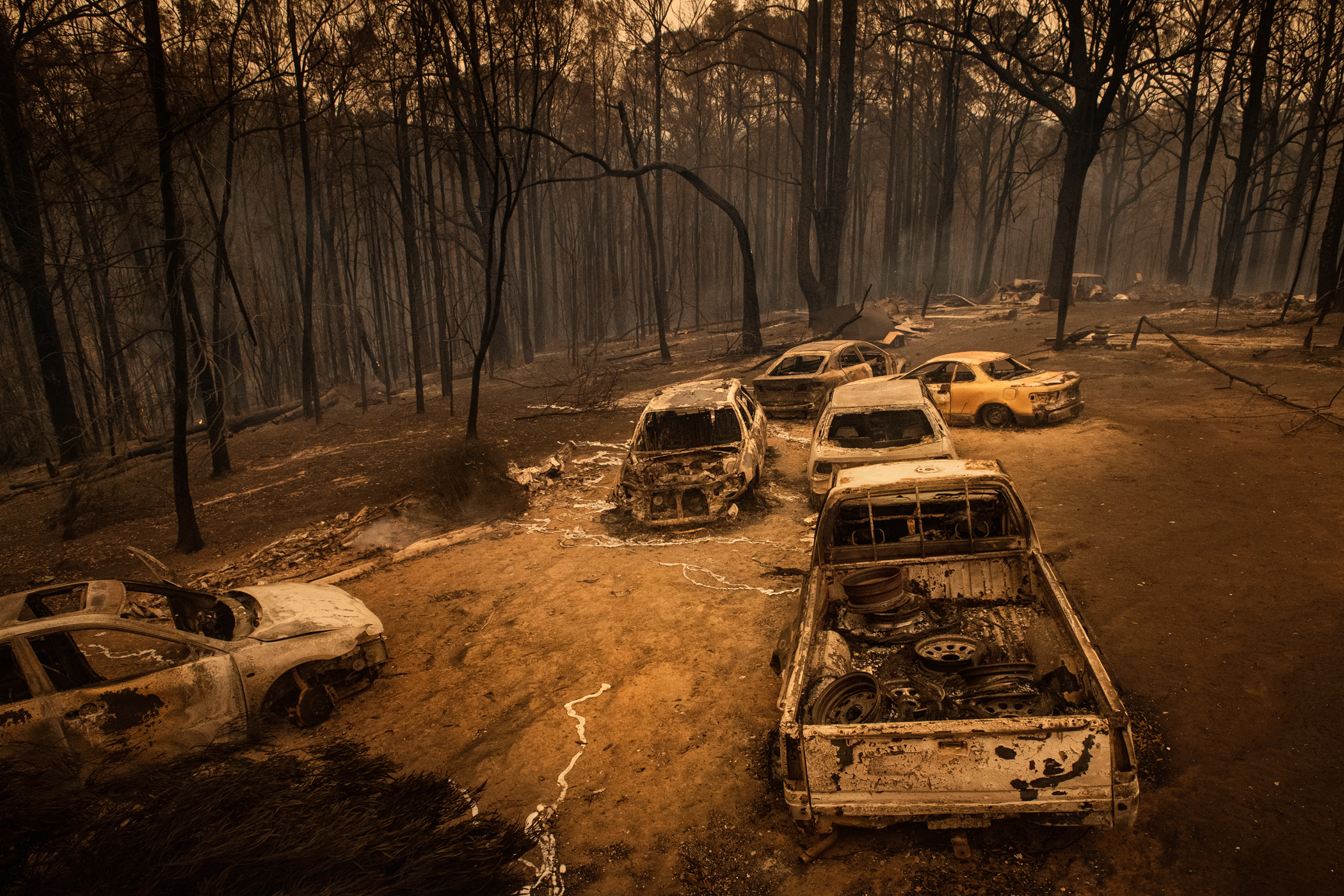
Burnt cars in Conjola Park, NSW. 31 December 2019
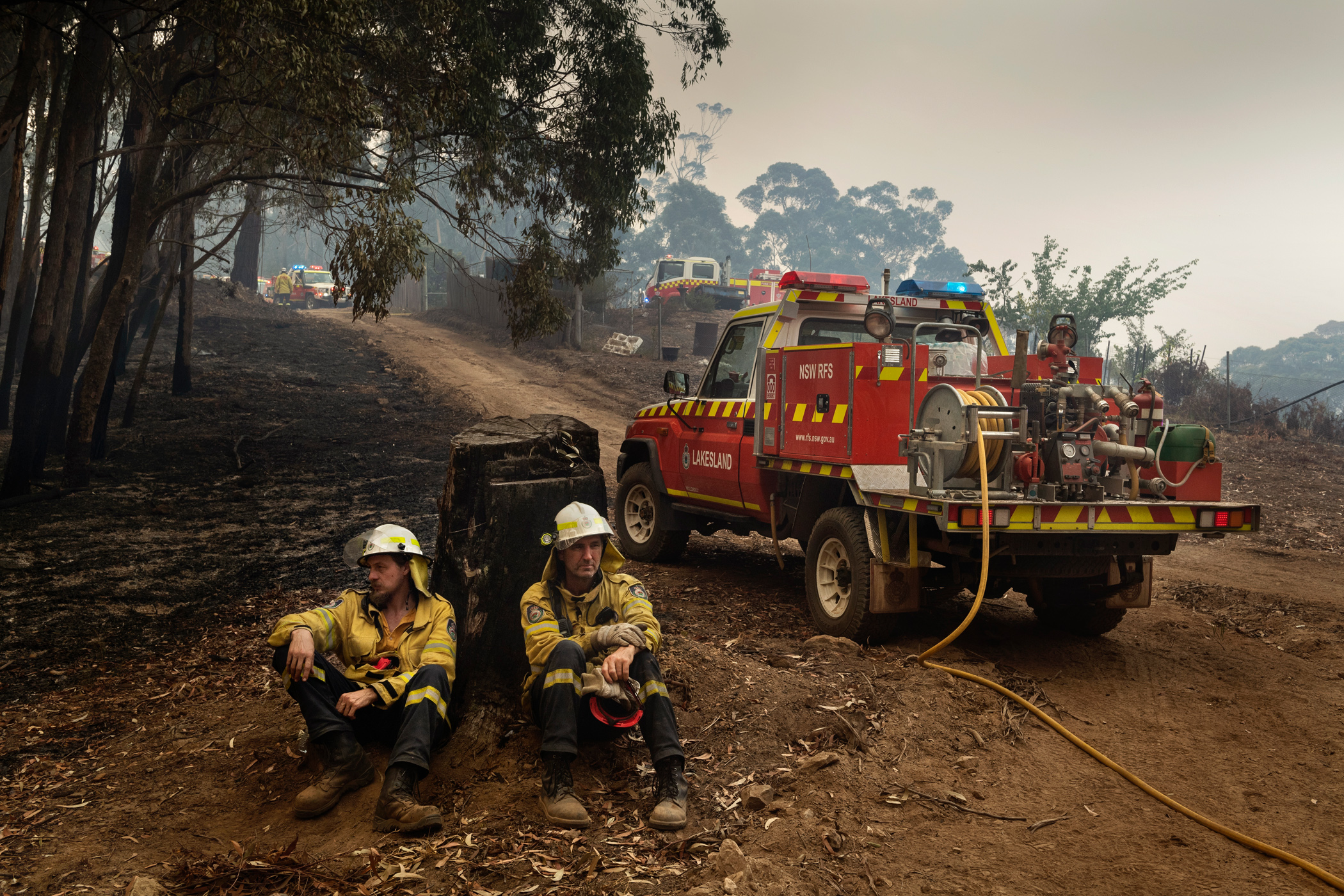
Rural Fire Service (RFS) volunteer firefighters from the Bundanoon RFS Brigade take a break, Wingello, NSW. January 2020

